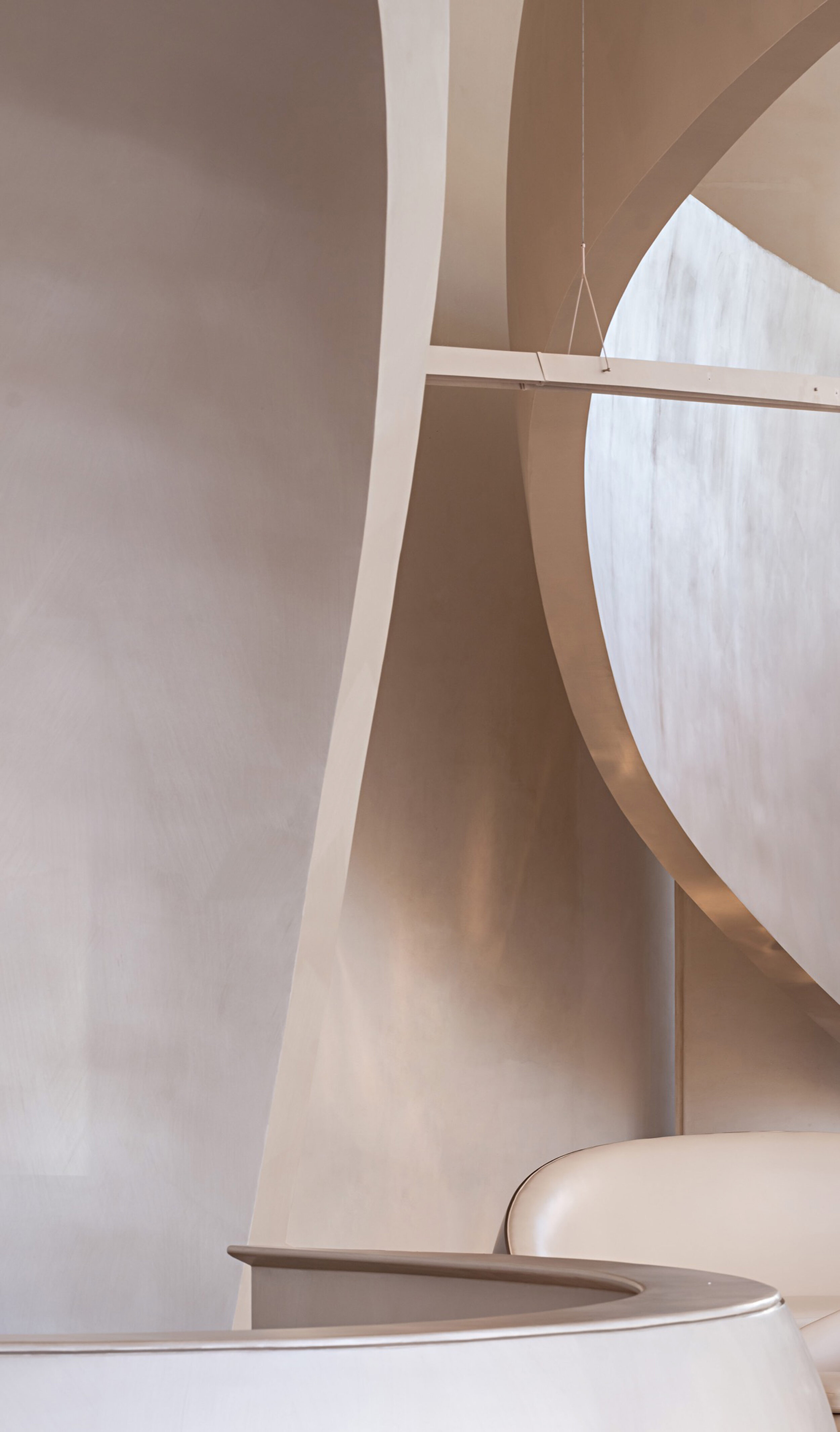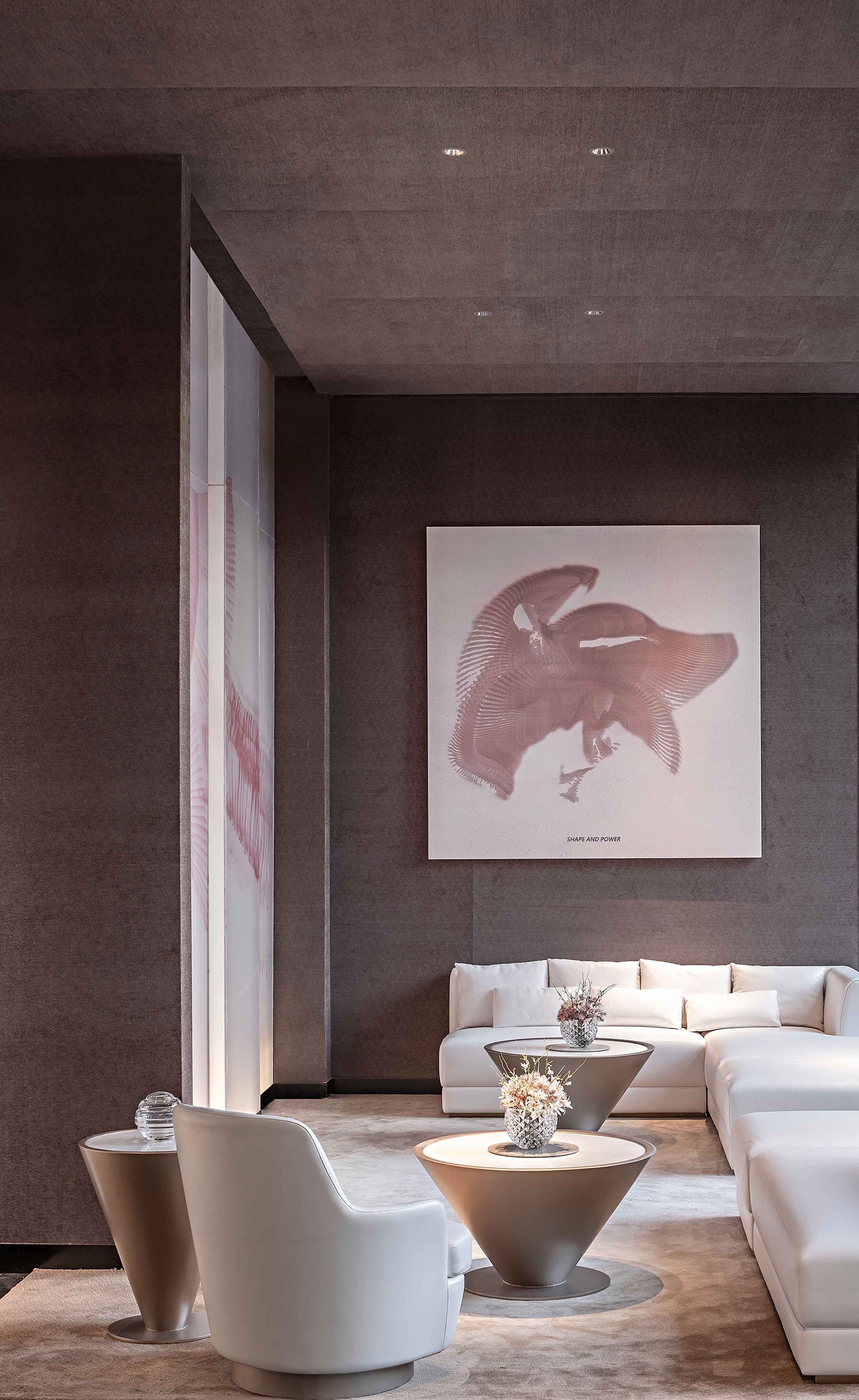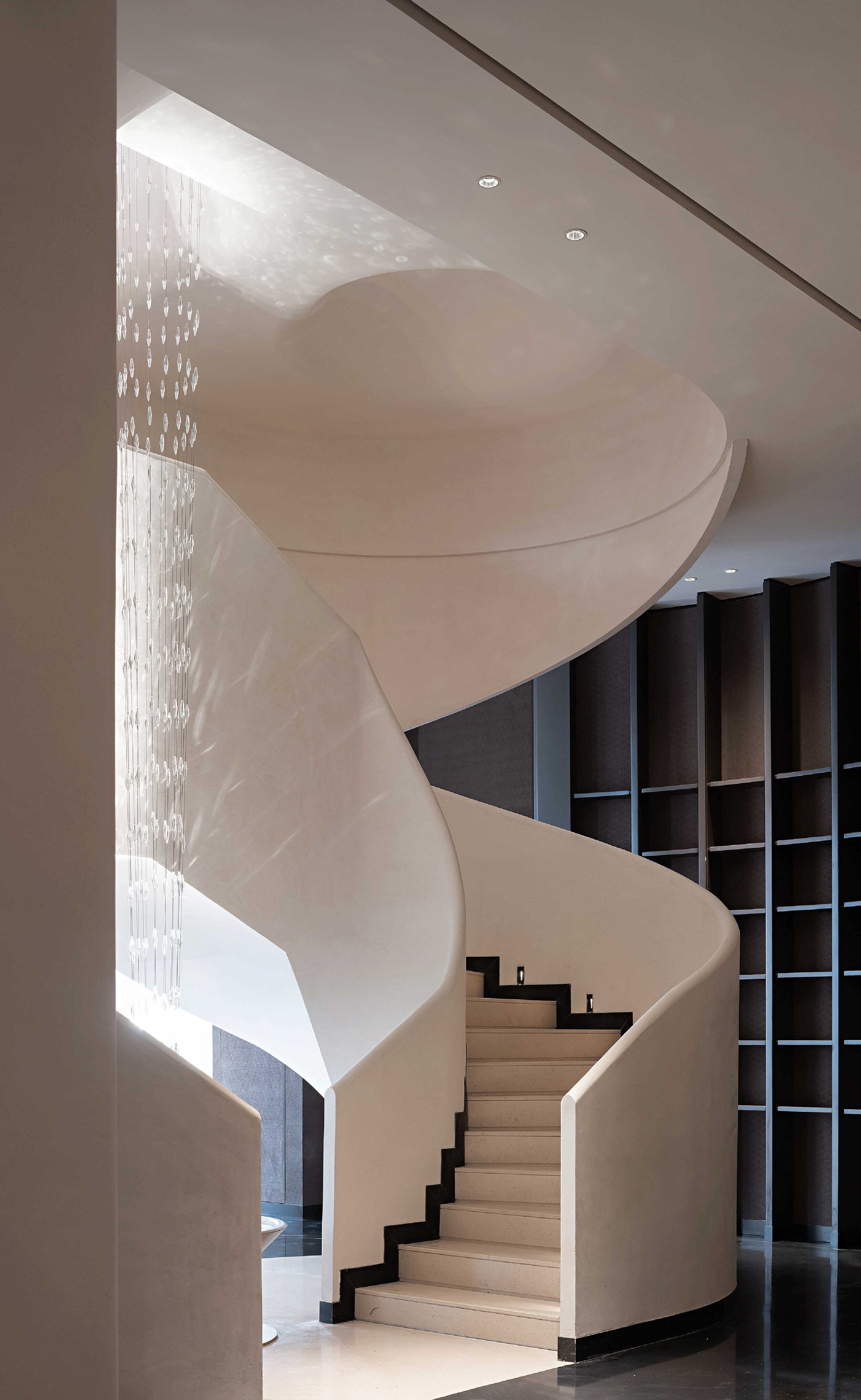Dazzling Brilliance: Atsushi Shindo Unveils Award-Winning HAORI Lighting Masterpiece at Ambiente 2024 in Frankfurt
An artistic endeavor that transcends the ordinary by combining the Haori, a traditional Japanese Kimono with the distinctive form of a lampshade. Light is elegantly controlled by the Haori, which elegantly encloses the luminous object within.
An artistic endeavor that transcends the ordinary by combining the Haori, a traditional Japanese Kimono with the distinctive form of a lampshade. Light is elegantly controlled by the Haori, which elegantly encloses the luminous object within. Shindo's jubilant and contented emotions when donning his first Haori inspired this unique creation. The timeless appeal of the "Kimono" and the refined contours of the Haori are ingeniously incorporated into the world of interior design, despite the scarcity of opportunities for wearing such traditional garments in our contemporary lives.
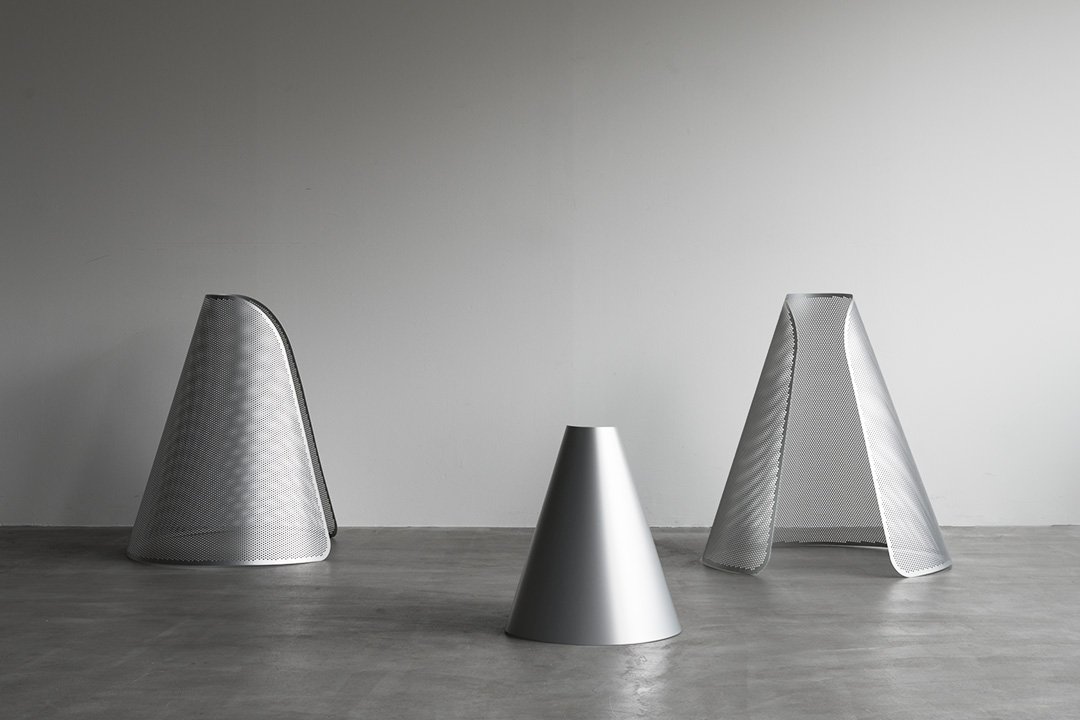
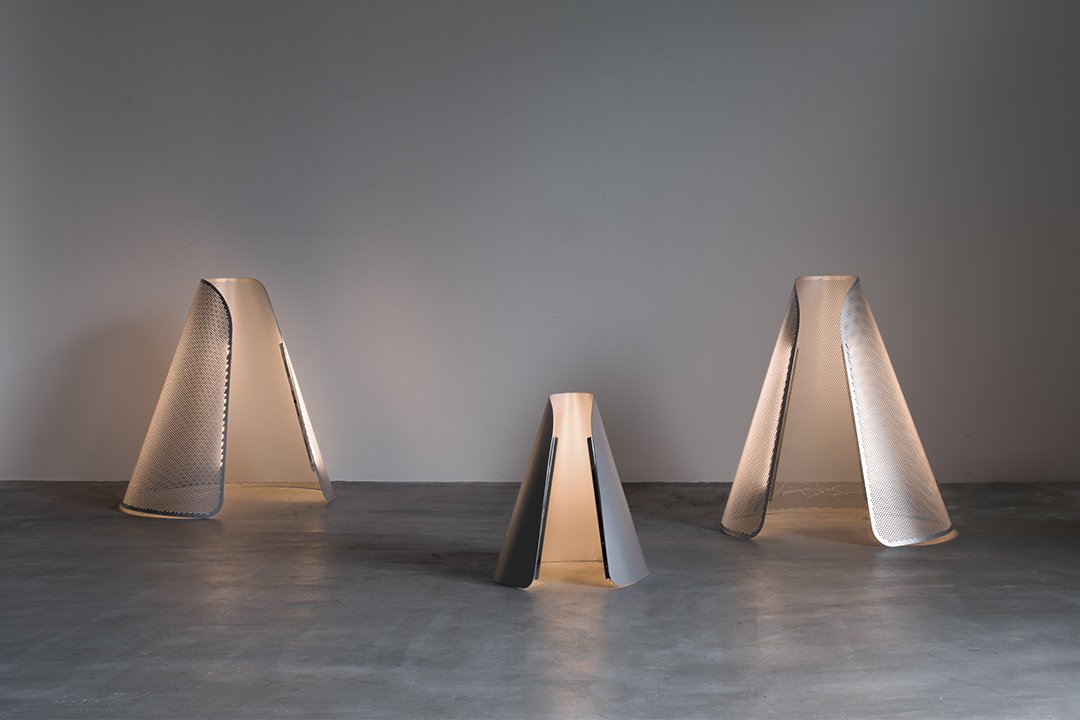
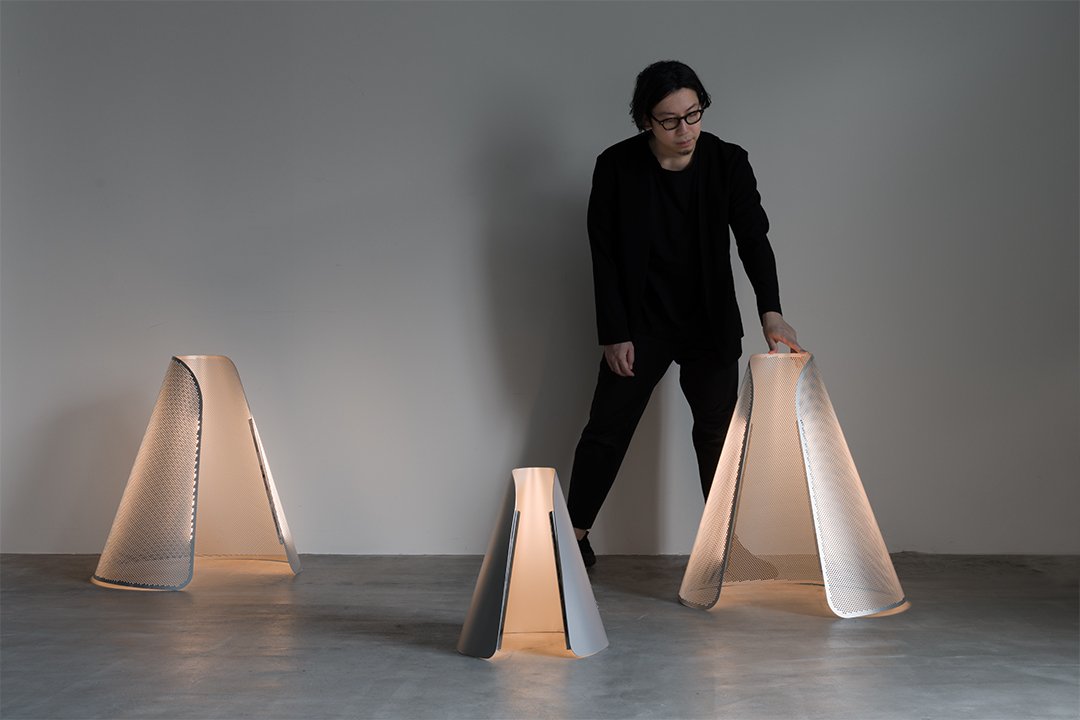
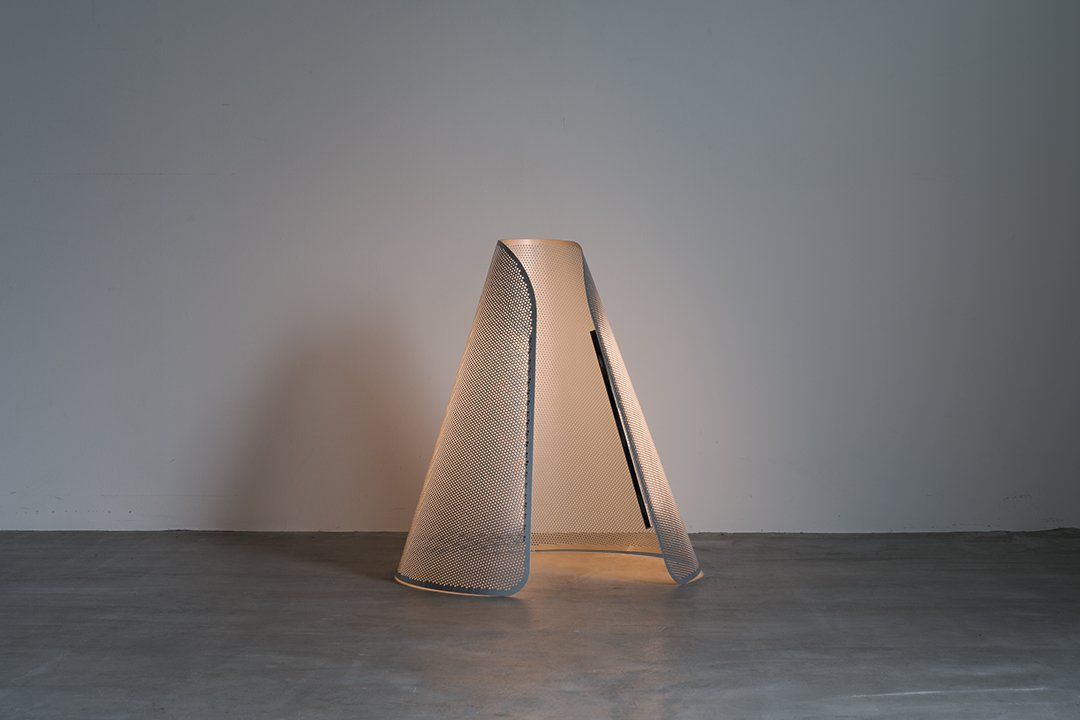
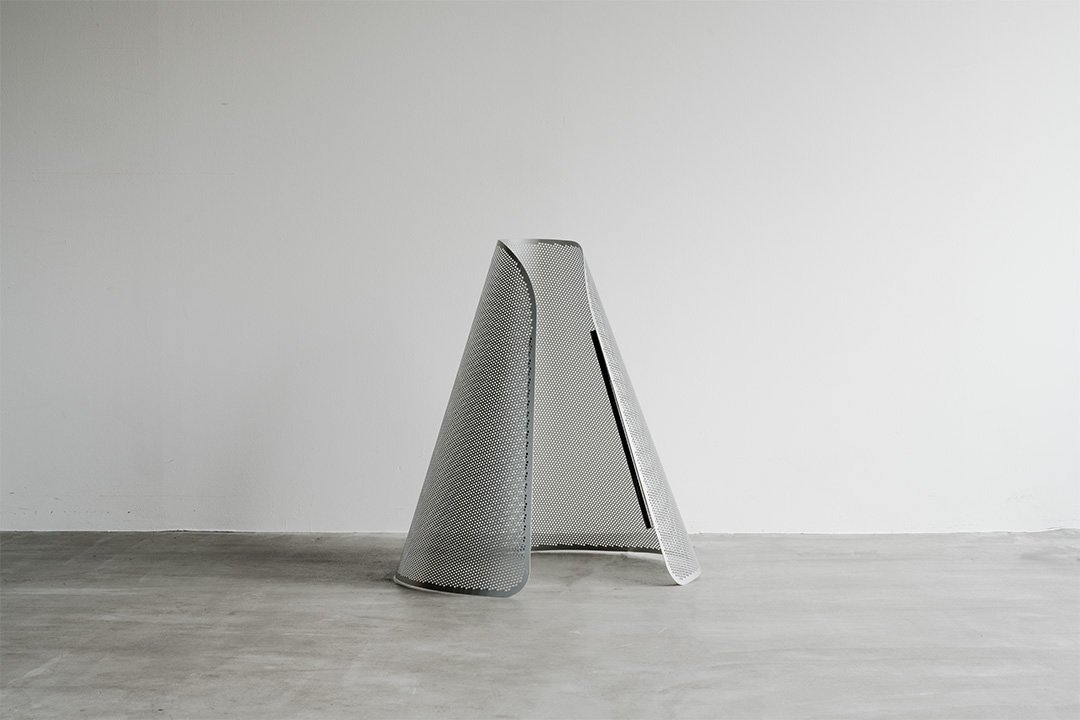

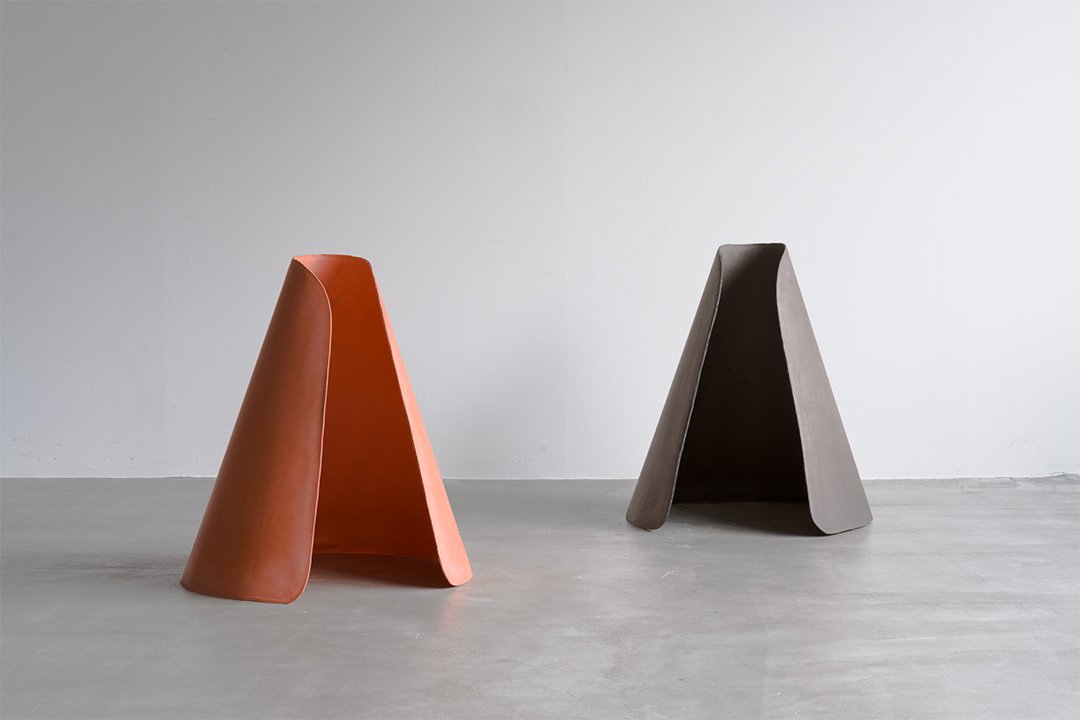
Complexity often prevails when creating intricate, artificial three-dimensional shapes. In contrast, Shindo's methodology introduces a simplicity that defies convention. In order to create the final, three-dimensional prototype, a two-dimensional pattern is cut from paper. As a result of this ingenious approach, replicable products can be created using a variety of materials. Due to the complexity of design and fabrication, creating intricate, artificial three-dimensional shapes can be challenging. Assembling and constructing it requires precise measurements, intricate detailing, and careful craftsmanship.Further complicating the endeavor is ensuring that the final product functions properly and meets the desired aesthetic standards.
A stick-type LED light source is detachable from the shade, housing the LED lights. A diverse collection of ambient tones is created by various Haoris, each with unique material properties. Through HAORI, the space is metamorphosed, offering a fresh aesthetic based on its surroundings. By replacing the shade material with artisanal materials such as leather, cloth, wood, rattan, and more, this transformation is achieved.
There are two distinctive shades in this exhibit, each offering a captivating narrative. Sculpted from sustainable aluminum, the first casts a gentle, tactile illumination into its surroundings with perforations. With opulent gloss and dignified elegance, the second uses a byproduct of beef cowhide.
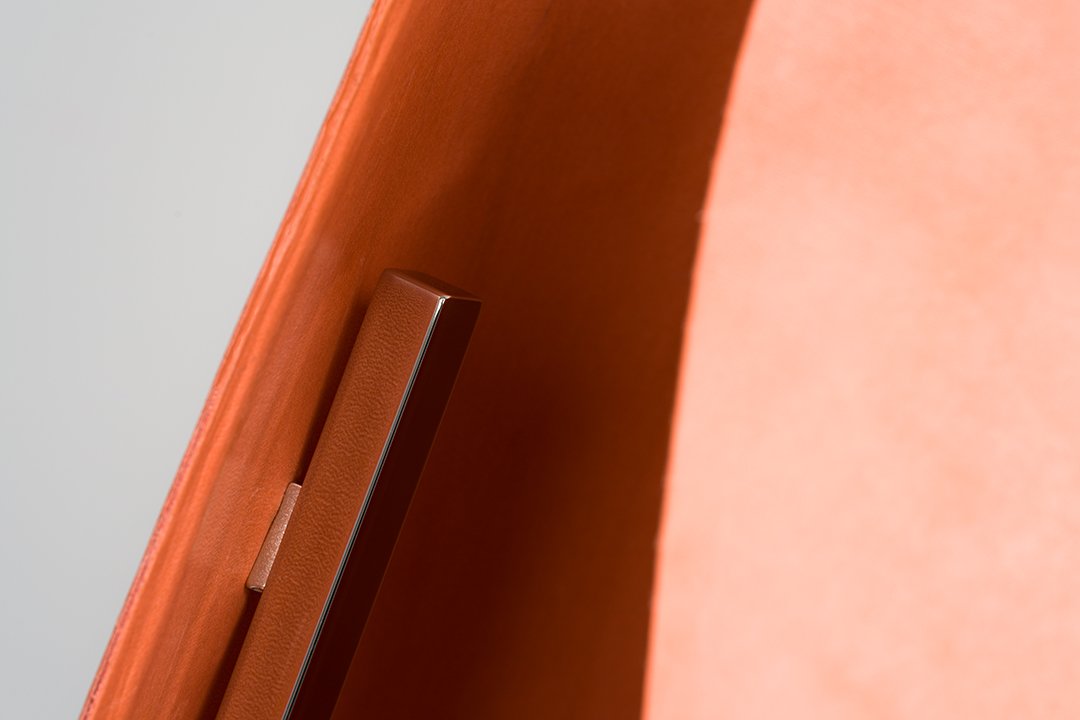
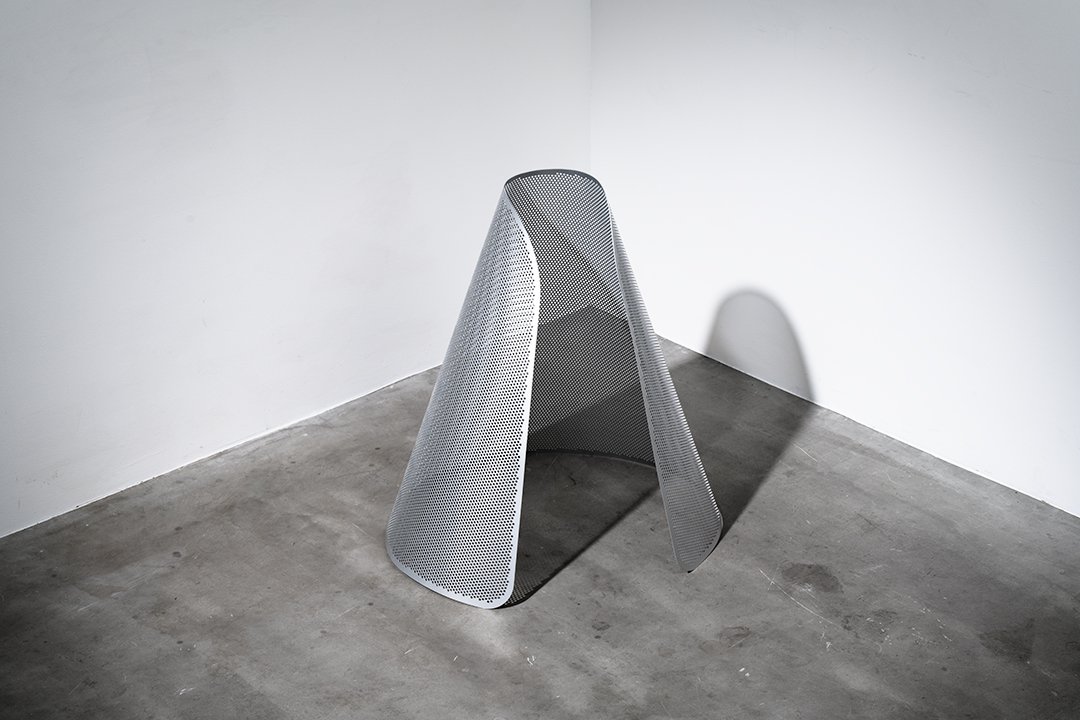
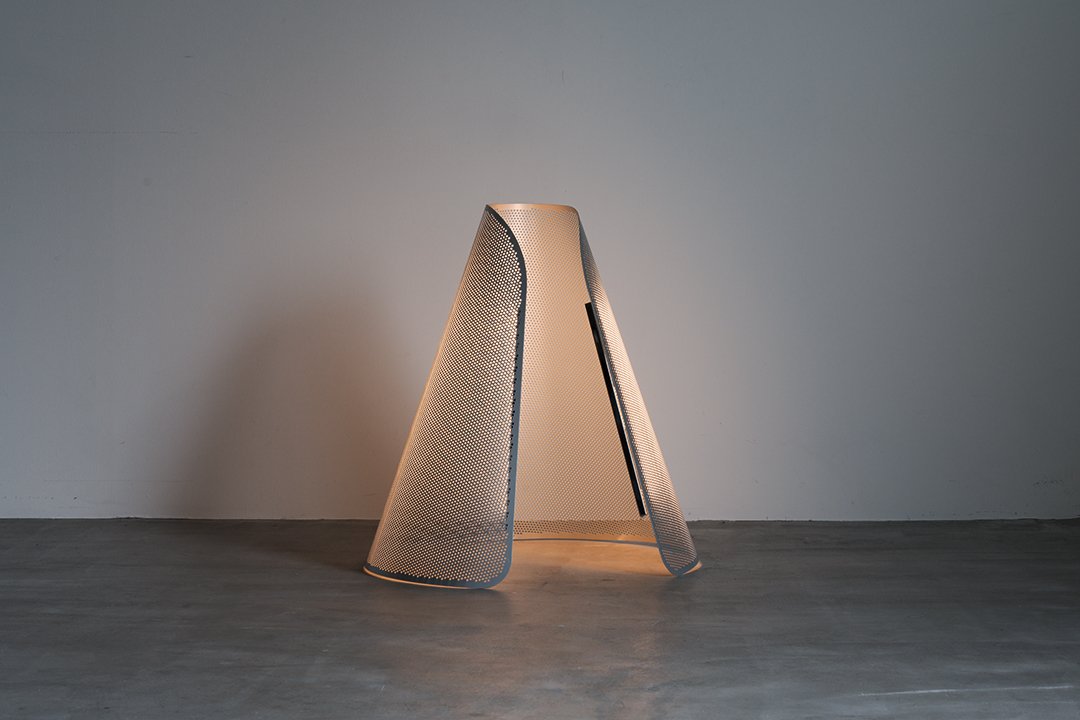
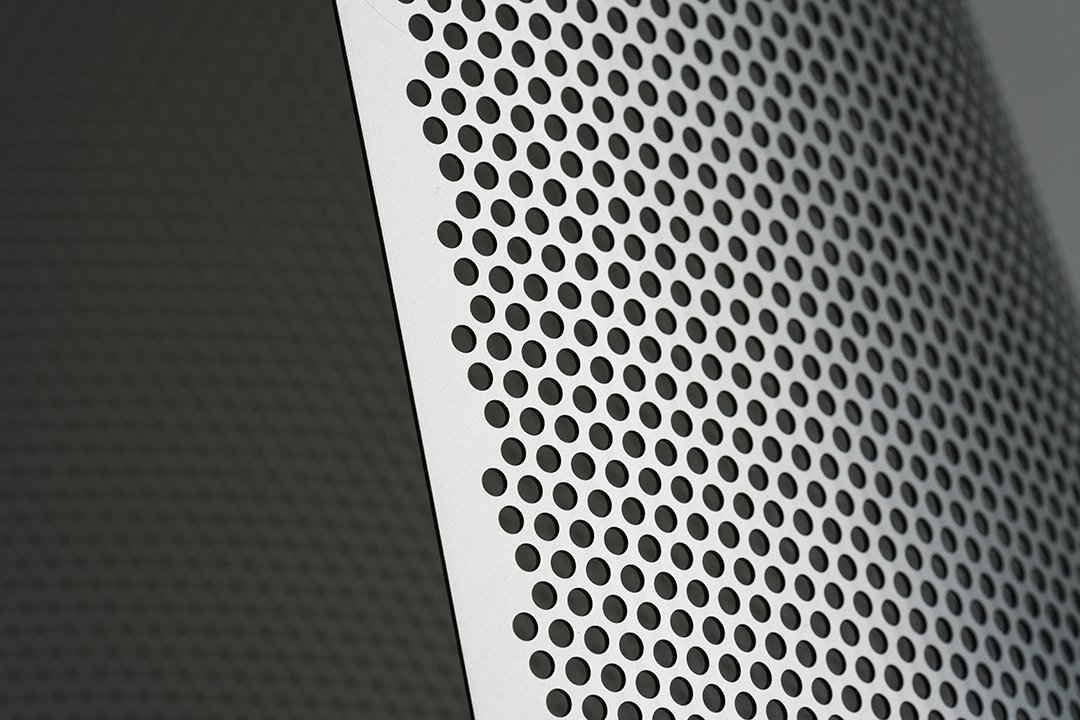
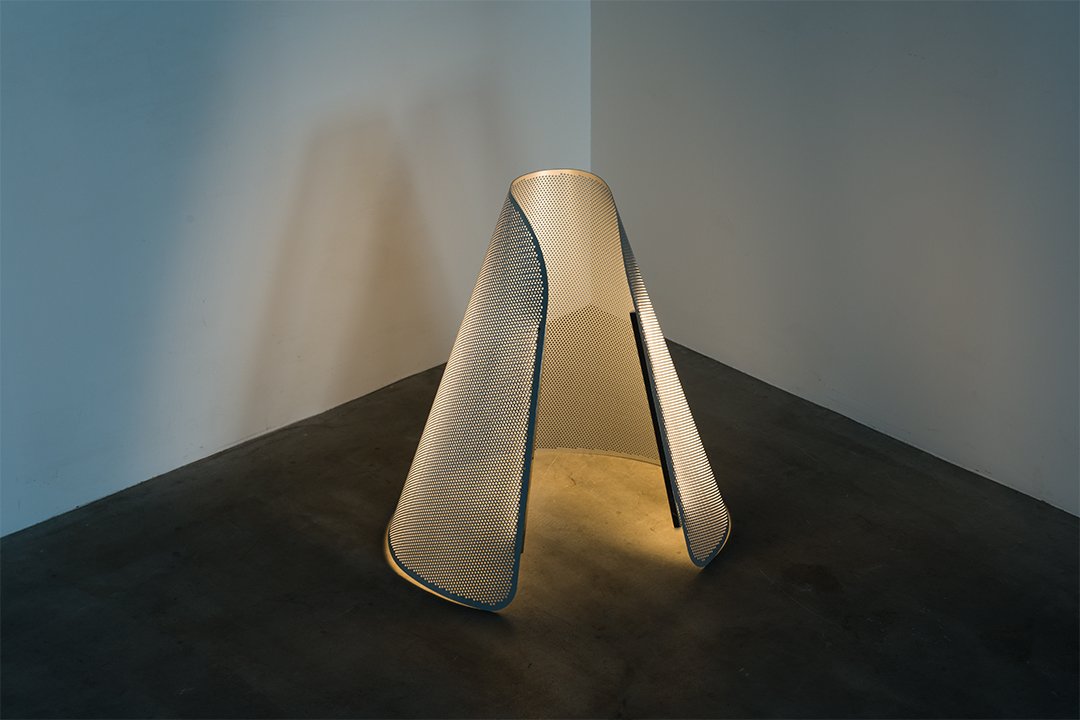
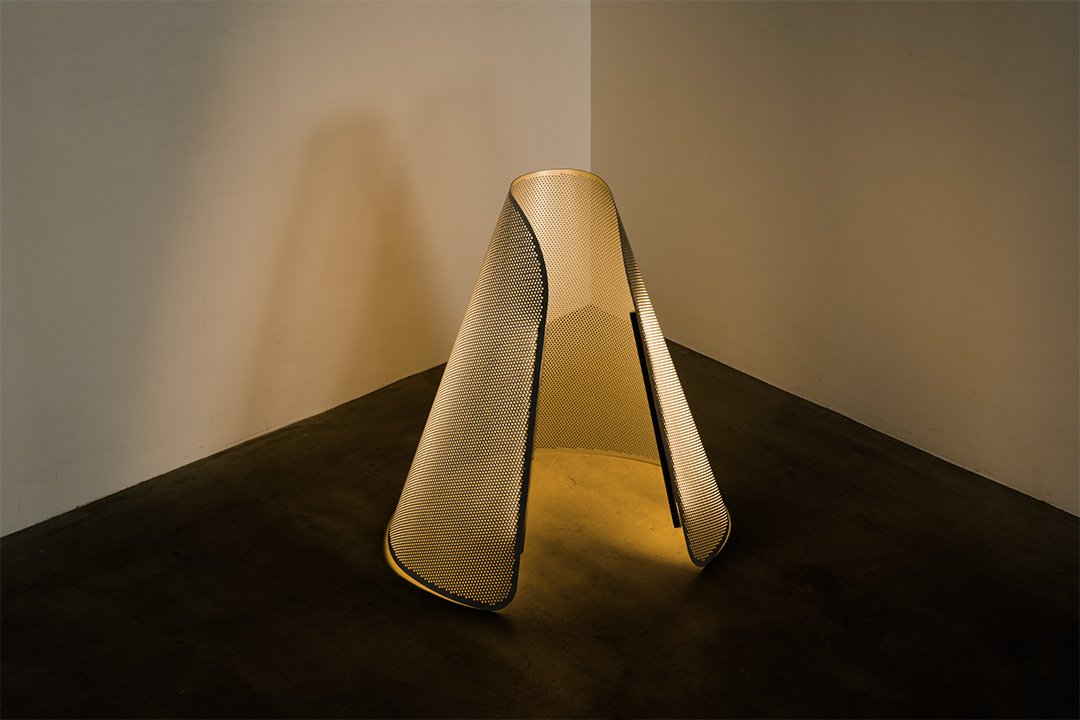
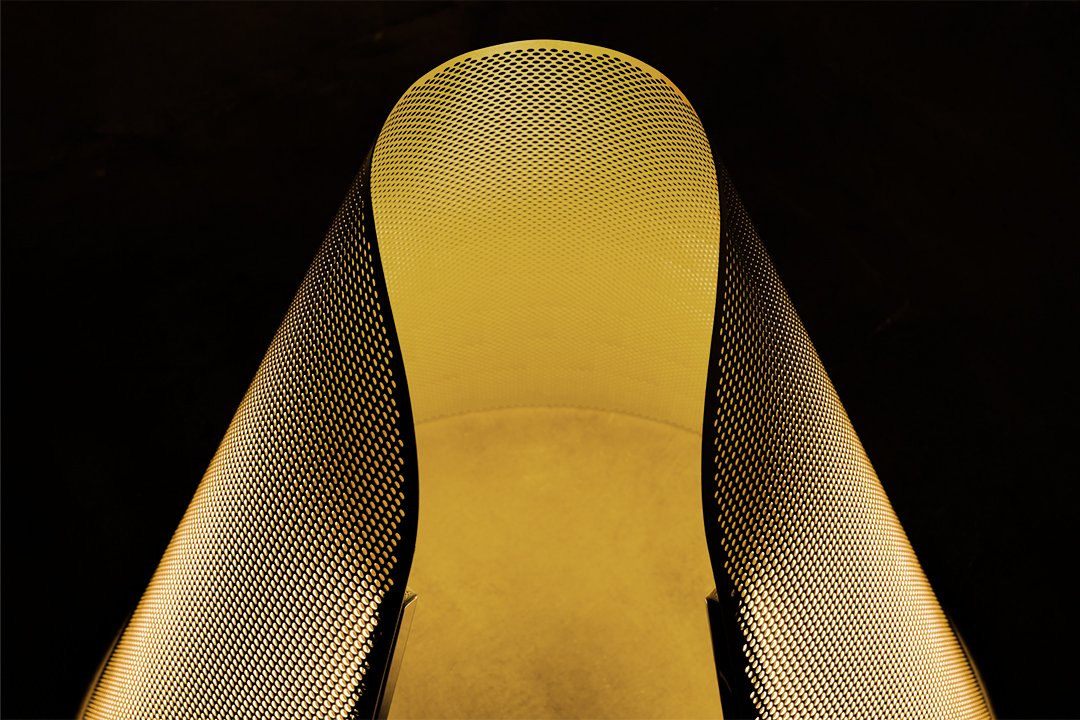
The artist encourages you to appreciate the interplay between size and form in this presentation. Invoking comfort and tranquility, light gracefully permeates the Haori. The dimensions of the artwork are: 500mm x 700mm (solid form), 1370mm x 730mm (flat plate). KOBE LEATHER® TSUYU "PINK" leather, anodized aluminum plate, and LED lighting are the materials used.
Exhibit at 'Ambiente 2024', Germany
Atsushi Shindo's lighting work HAORI will be exhibited at Ambiente 2024, one of the world's largest lighting exhibitions in Frankfurt, Germany, for five days.
This year's Ambiente 2024 will take place from January 26th to 30th.
In April 2023, this work was presented at the Milano Salone, which was followed by an exhibition in Japan.
Details:
Ambiente 2024
Dates|26-30 January 2024
Hours|9:00〜18:00 (Until 17:00 on the last day.)
Location|Messe Frankfurt, Ludwig-Erhard-Anlage 1, 60327 Frankfurt am Main, Germany
Booth|J10H(Hall 3.1「TALENT」)
https://www.jp.messefrankfurt.com/tokyo/ja/events/consumer-goods-outgoing/Ambiente.html
※A 'visitor ticket' is required for entry. Please click on the QR code above for more information.
About the Designer
ATSUSHI SHINDO
Atsushi Shindo is a designer and artist born in 1991. Shindo graduated from Tokyo University of the Arts in 2015 and has been working as an interior designer for hotels, offices, and large commercial spaces, as well as working on personal projects. To explore the fundamental appeal of design and art, he has presented experimental products, spaces, and artwork. Shindo explores new values and beauty through everyday objects and materials.
Blue Bottle Zhang Yuan Cafe design by Neri&Hu
The most famous garden in Shanghai, Zhang Yuan, developed into one of the earliest public and commercial spaces in modern China, exemplifying and leading the emergence of a new Chinese urban lifestyle at the end of the 19th century. After a complete rehabilitation of Zhang Yuan's historic buildings, Blue Bottle commissioned Neri&Hu to create a retail space within one of the old Shikumen typology residences in 2022. In Shanghai, coffee initiates a dialogue between the city's rich history and its contemporary social landscape.
The most famous garden in Shanghai, Zhang Yuan, developed into one of the earliest public and commercial spaces in modern China, exemplifying and leading the emergence of a new Chinese urban lifestyle at the end of the 19th century. After a complete rehabilitation of Zhang Yuan's historic buildings, Blue Bottle commissioned Neri&Hu to create a retail space within one of the old Shikumen typology residences in 2022. In Shanghai, coffee initiates a dialogue between the city's rich history and its contemporary social landscape.

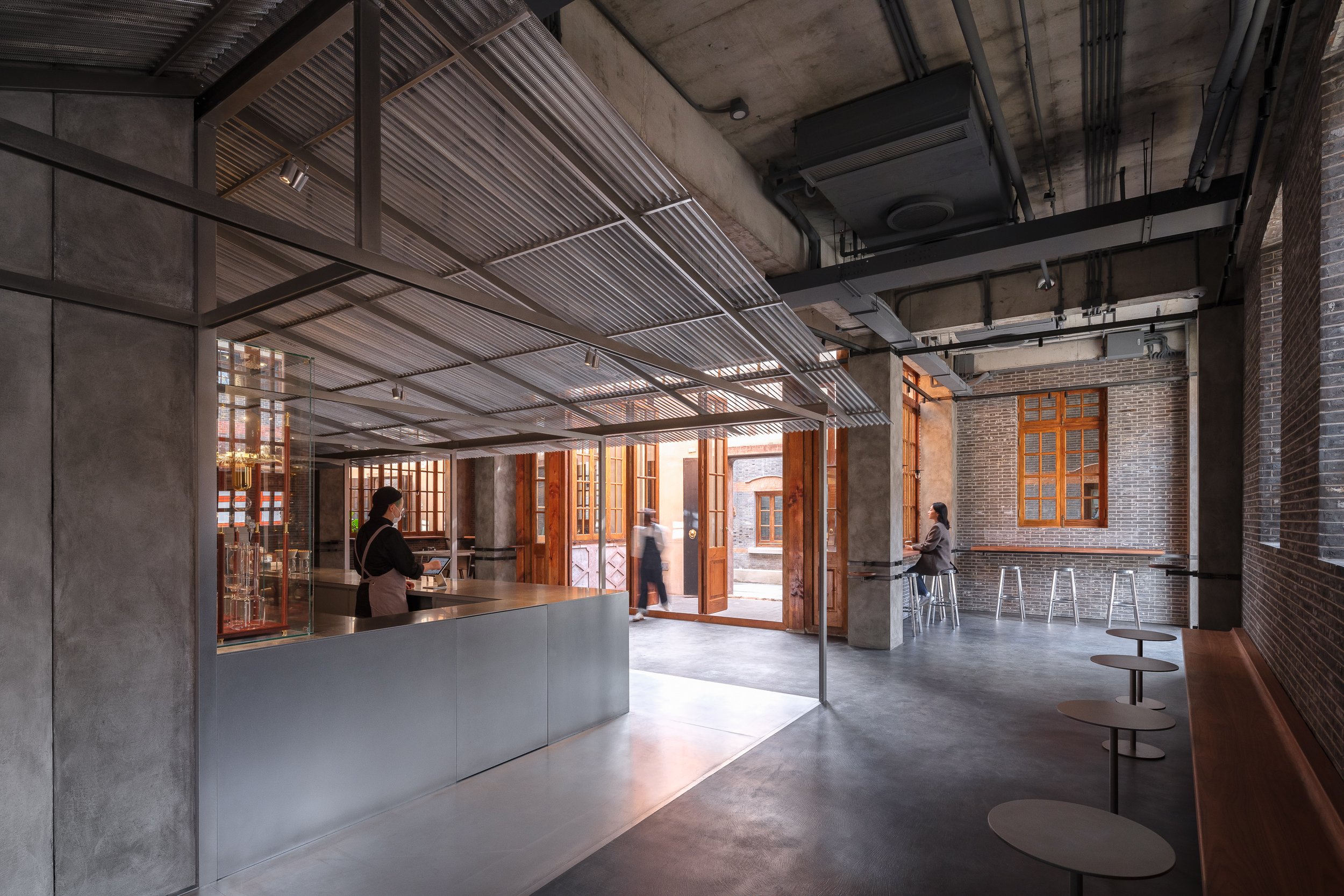
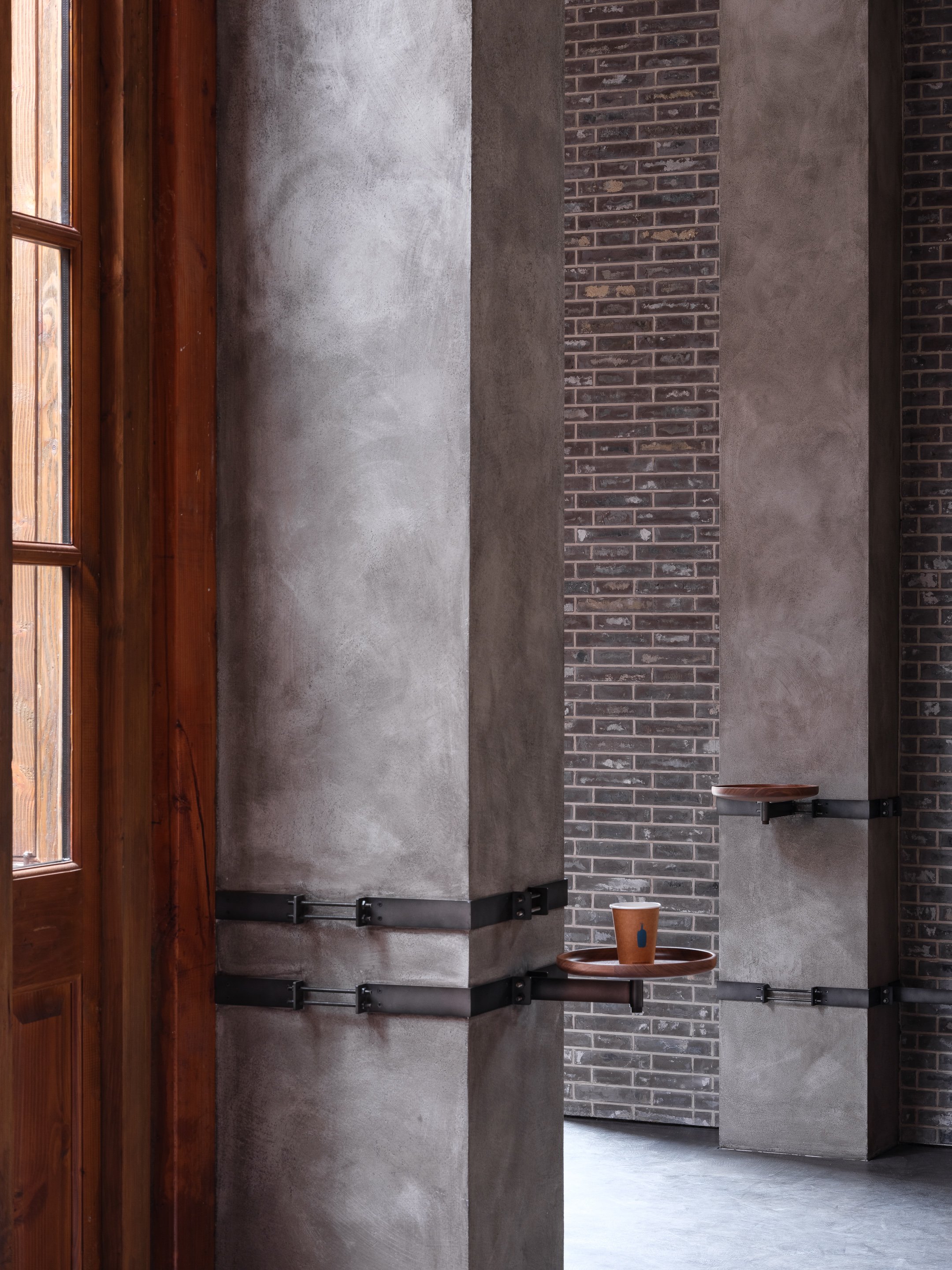

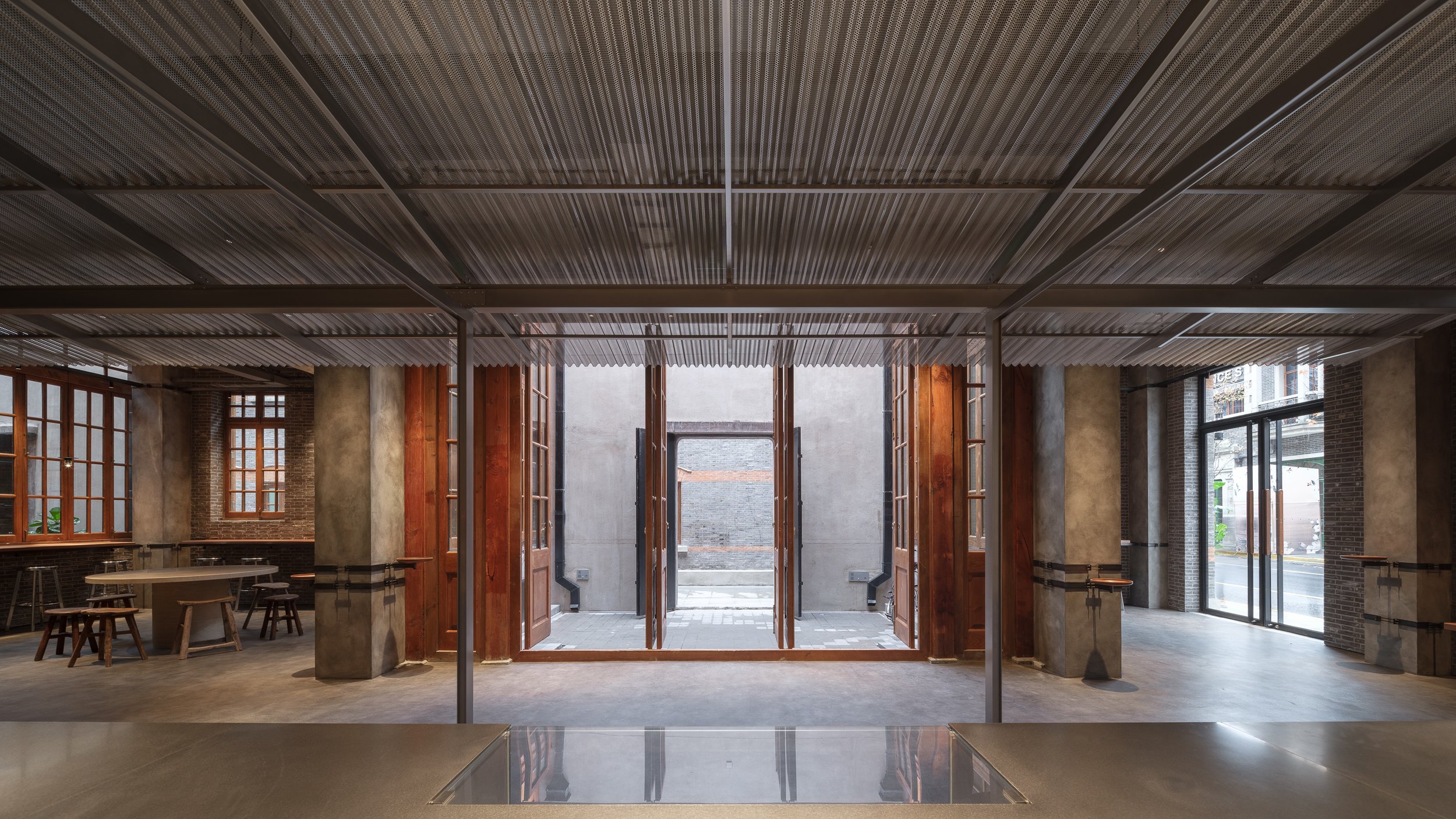

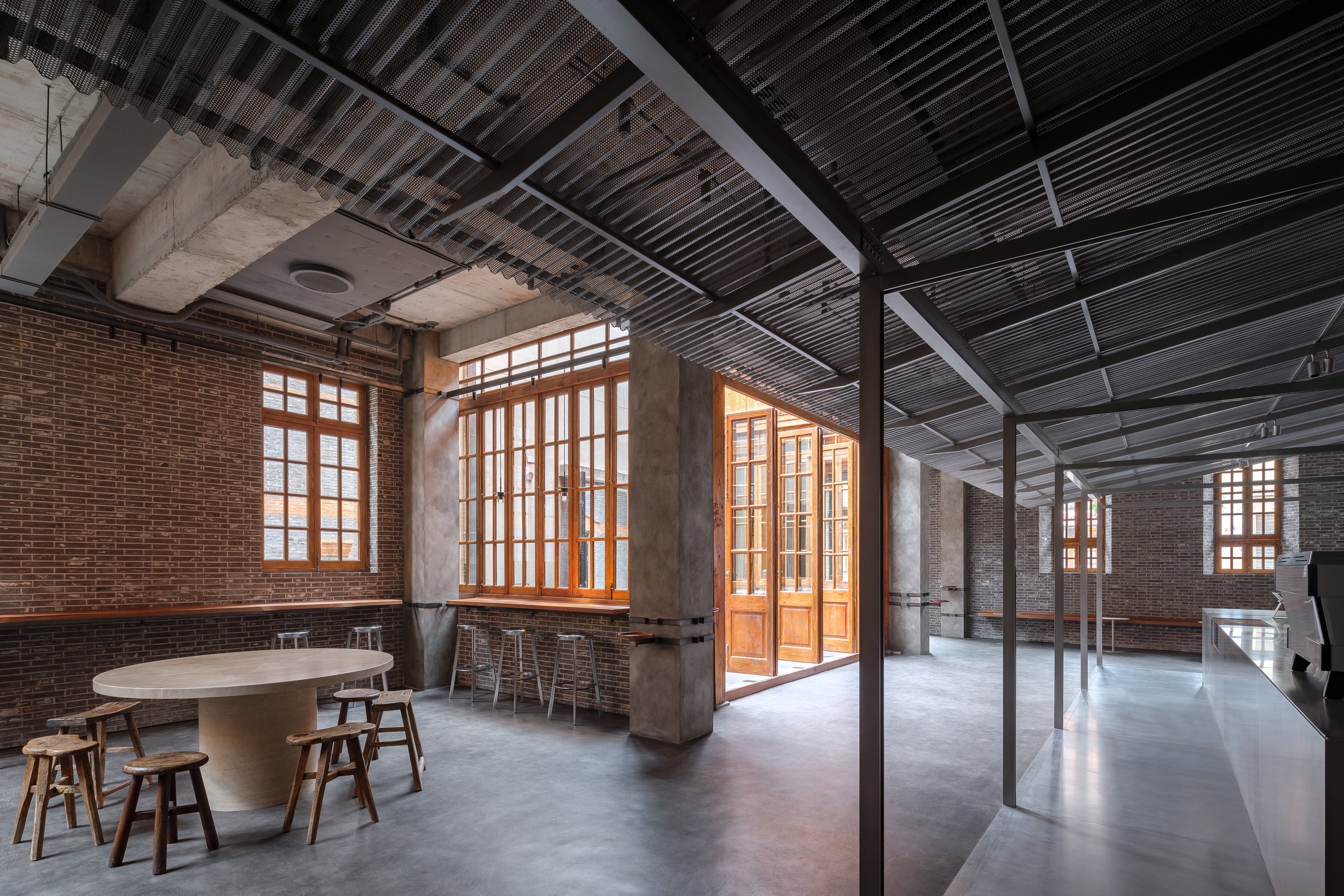
Amidst the architectural relics of Zhang Yuan, where the city’s collective memory resides, one can imagine this scene described by Chinese writer Mu Xin - people scattered about in the shadowy lanes of Shanghai at sunset like tiny crabs scurrying in and out of their sandy shelters. In this vast network of alleys, people carried on about their daily lives, but there was always time for leisure for the Shanghainese. Both locals and visitors can enjoy Neri&Hu's narrative journey by capturing the spirit of the local urban fabric.
The existing brick walls, doors, and windows of the original architectural façades and atriums are preserved according to historic preservation guidelines. This leaves them as a continuous backdrop for the addition of new design elements. A primitive shelter forms the visual and circulatory focal point of the project; it is where coffee is prepared and served, and represents a return to the origins of architecture. An elongated space connects the main street to the atrium along the old building's exterior wall. As a nod to the leisurely social moments of life in Shikumen, this alley-like building space includes benches and small tables against the windows and walls.
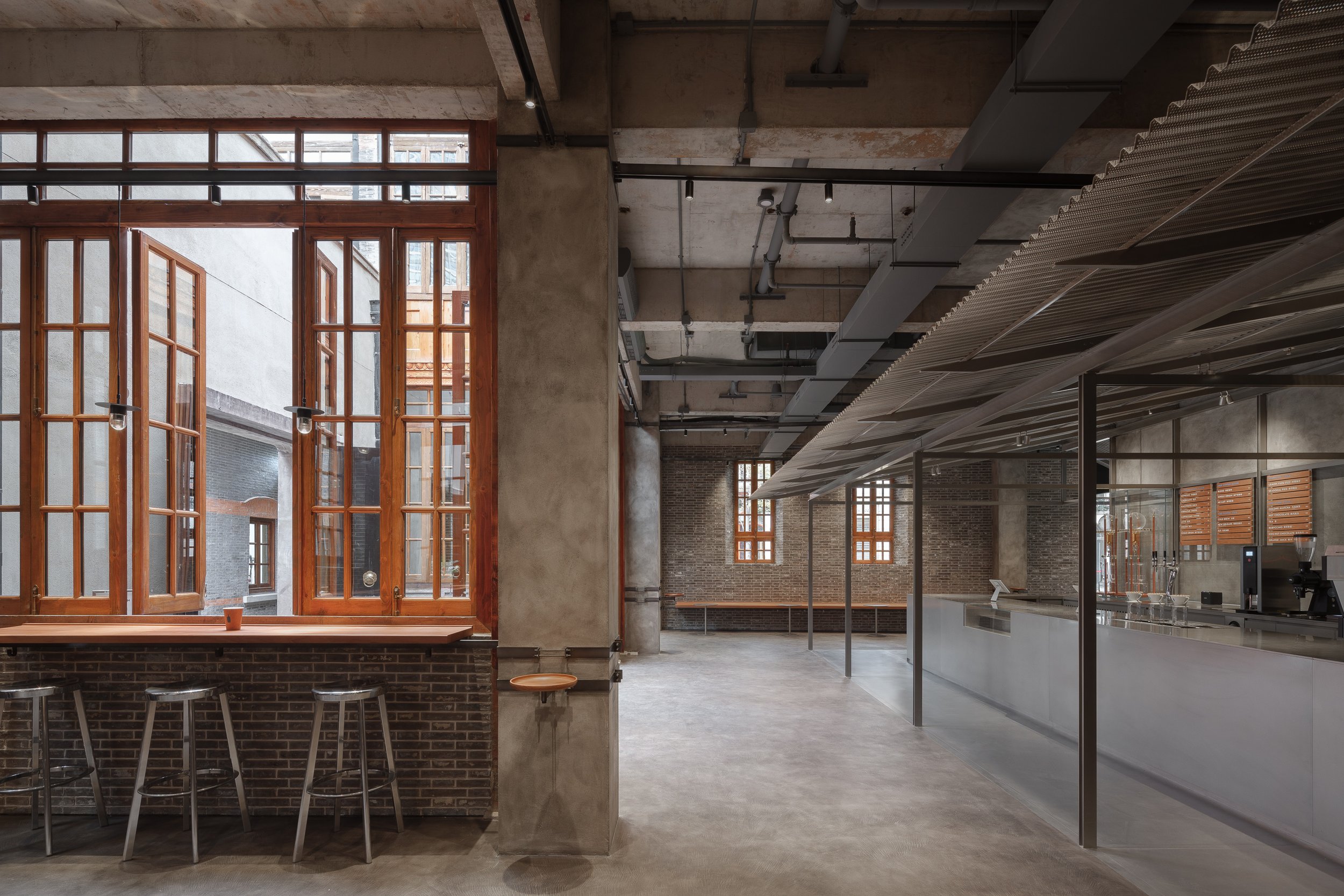
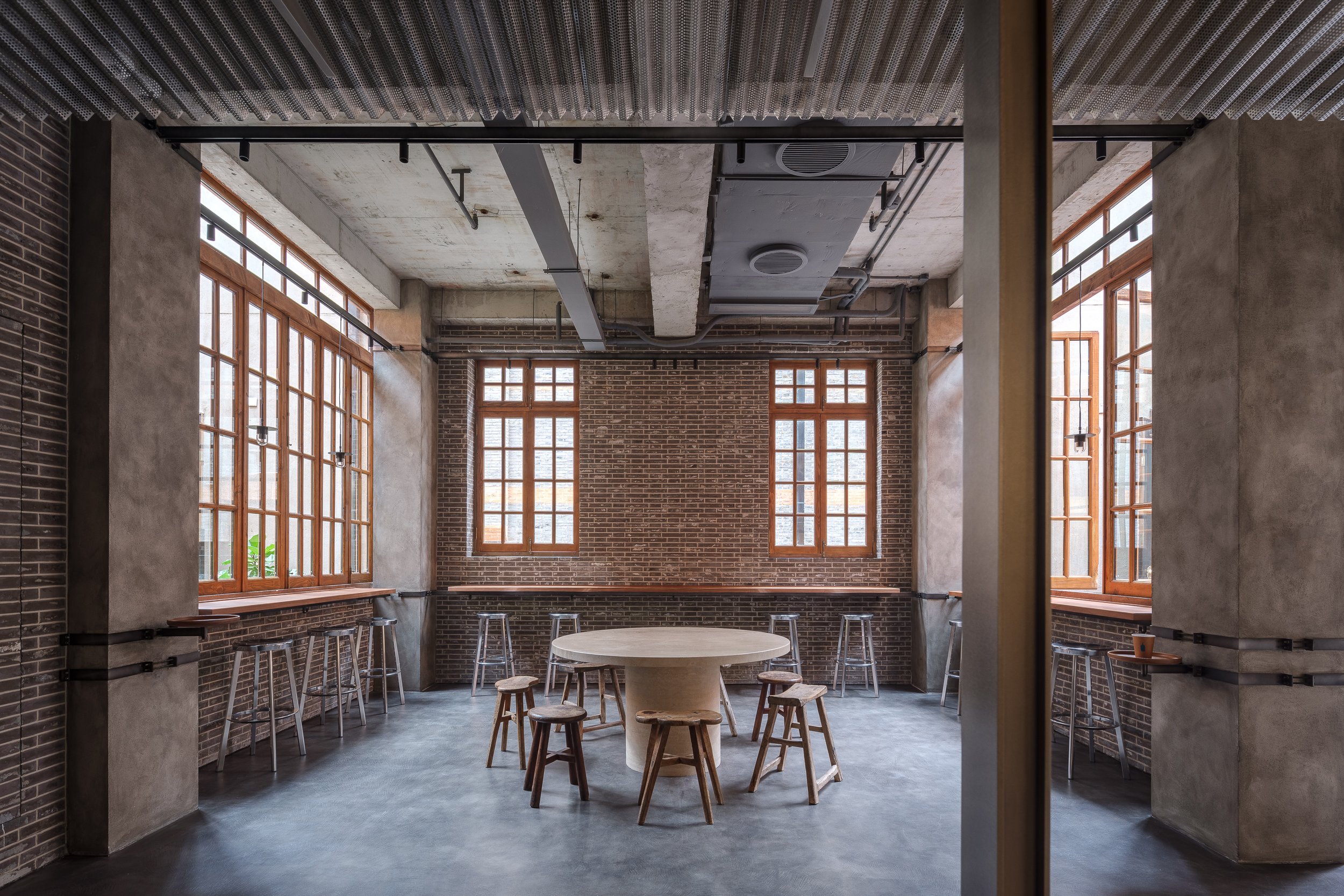

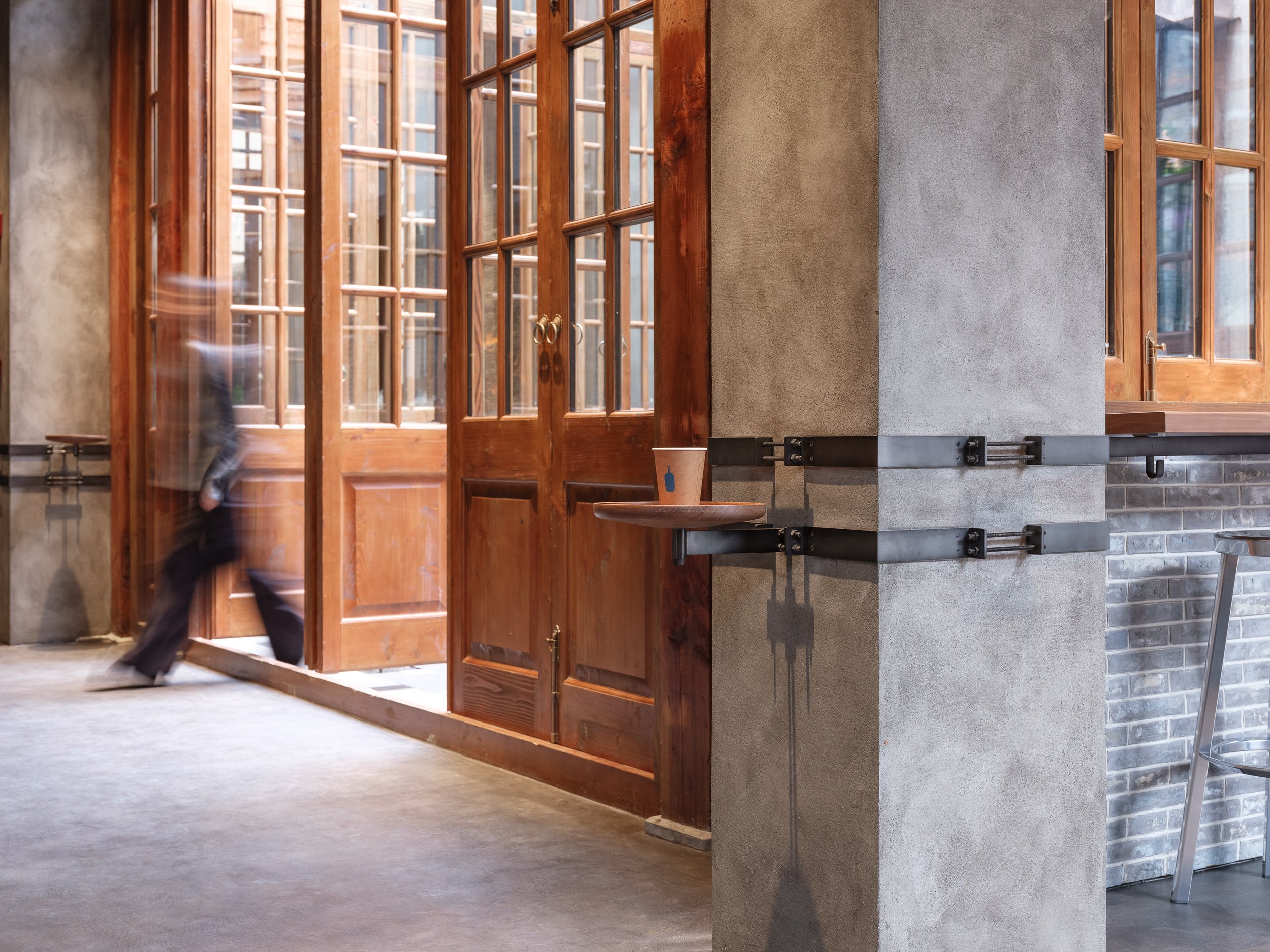
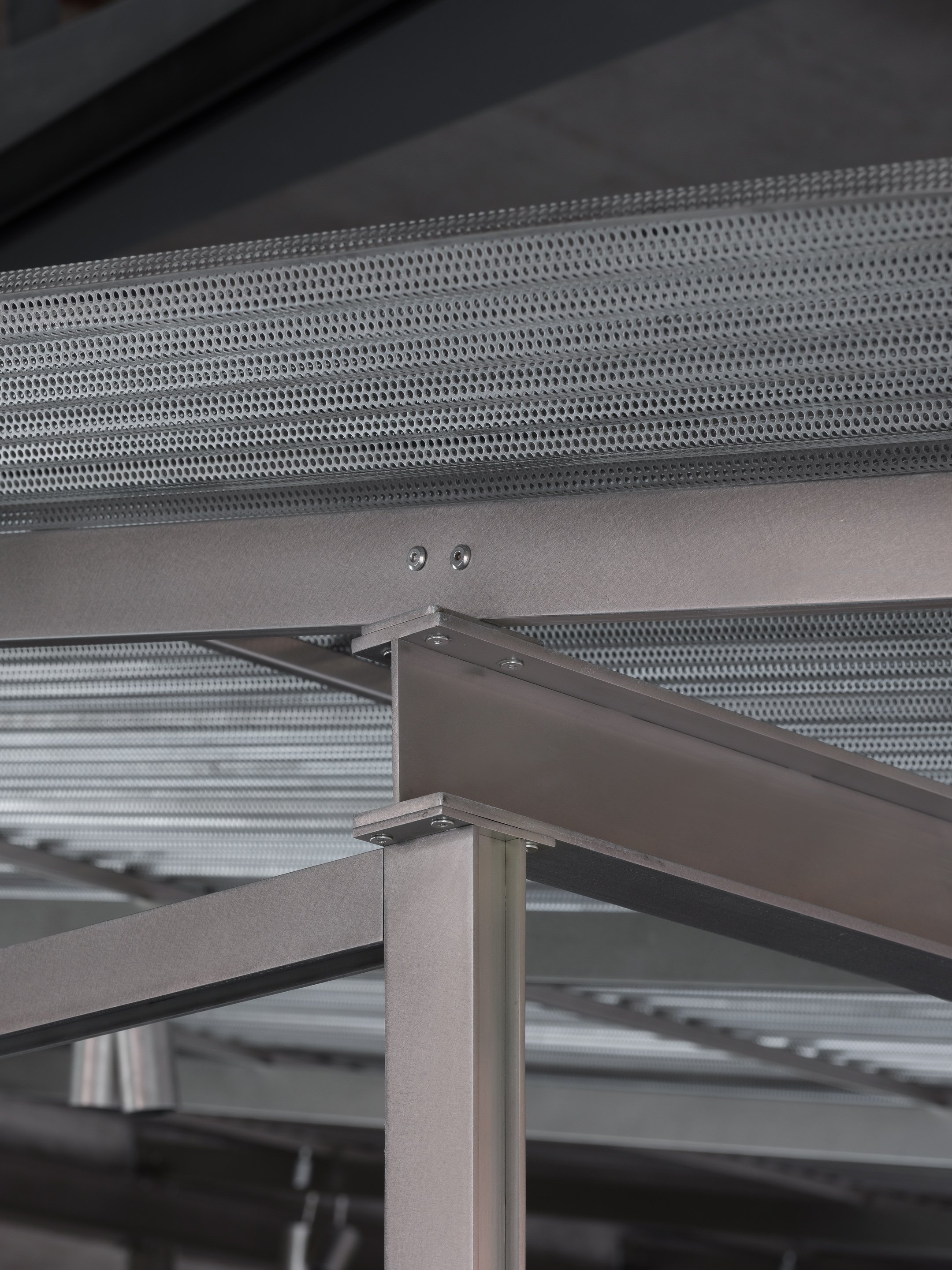
Neri&Hu studied the structure and its tectonic joinery meticulously to make it as light as possible, in contrast to the heavy palette of the existing architecture. Stainless steel is used for the roof structure while perforated and bent steel is used for the roof surface, reflecting the surroundings subtly and fuzzy. Neri&Hu also were inspired by the informal construction and simple attachments that people once used to extend their private spaces into the alley, so the existing structural columns are commandeered with metal rods and small platforms that serve as light rails, benches, side tables, and objects. This project incorporates repurposed traditional old furniture, whose traces of time impart a sense of warmth and familiarity, merging the old and the new, Blue Bottle and Shanghai.



Primitive Shelter
Blue Bottle Zhang Yuan Cafe
Site Address: W5-1A, 240 North Maoming Road, Jing'an District, Shanghai, China
Completion: November 2022
Client: Blue Bottle Coffee
Project Type: Interior
Program: Cafe
Gross area: 175 sqm
Partners-in-charge: Lyndon Neri, Rossana Hu
Associate-in-charge: Qiucheng Li
Design team: Jiaxin Zhang, Xi Chen, Peizheng Zou, Shangyun Zhou, Greg Wu, Luna Hong
Interior design: Neri&Hu Design and Research Office
FF&E design and procurement: Design Republic
General contractor: Blue Peak Image Producing Co., Ltd
Photos: Zhu Runzi
Unlock your Imagination, Open your Mind to a Brilliant Prospect
The Existence of a City Depends on Memory
By naming the project in Chinese after the “Nanjing Brocade” –a traditional article famous for its cloud-like colours and intricate patterns, China Overseas Land & Investment pays homage to the heritage of a city, the place where the best fabrics in the country are produced: the “Fifth Cotton Mill.”
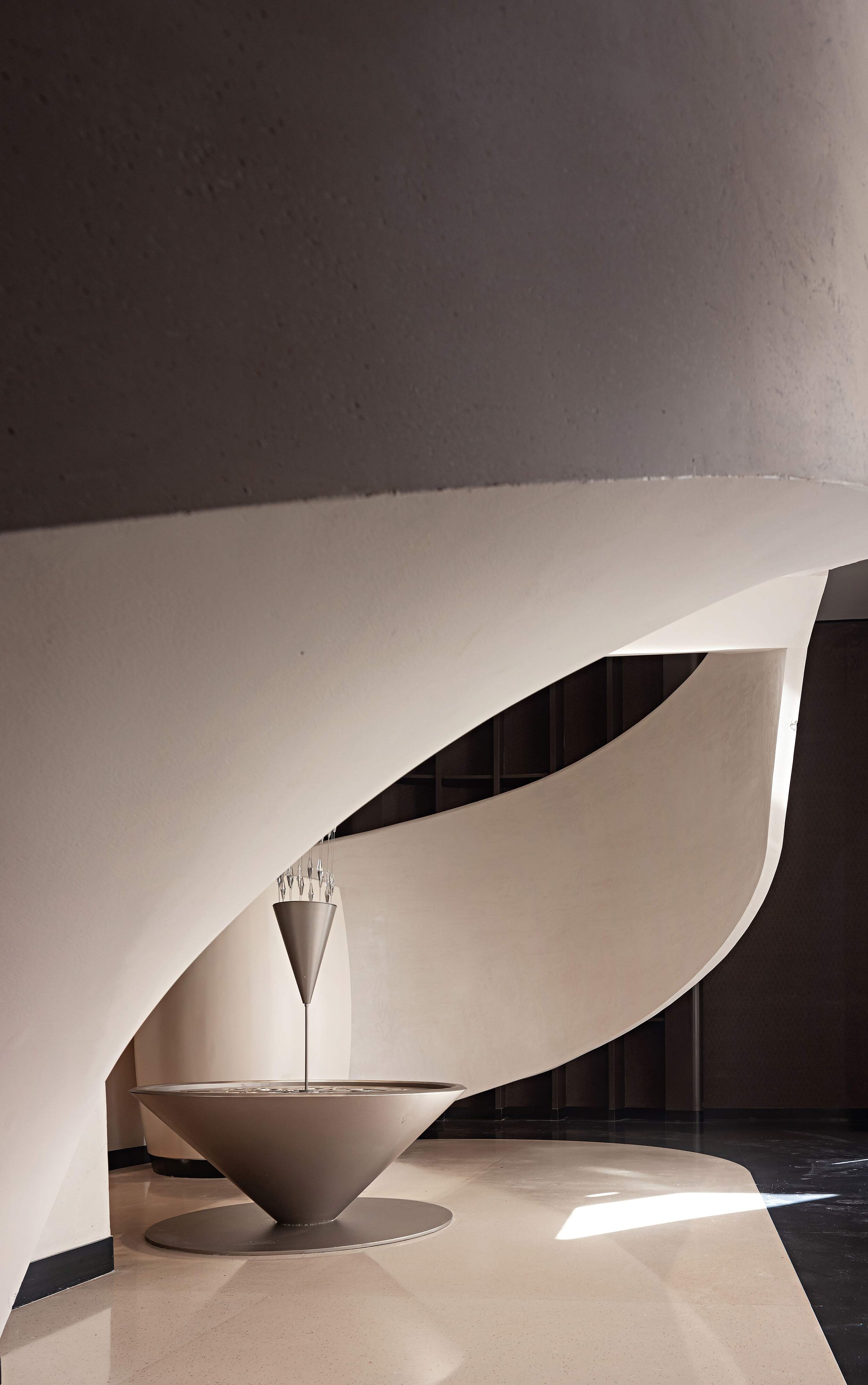
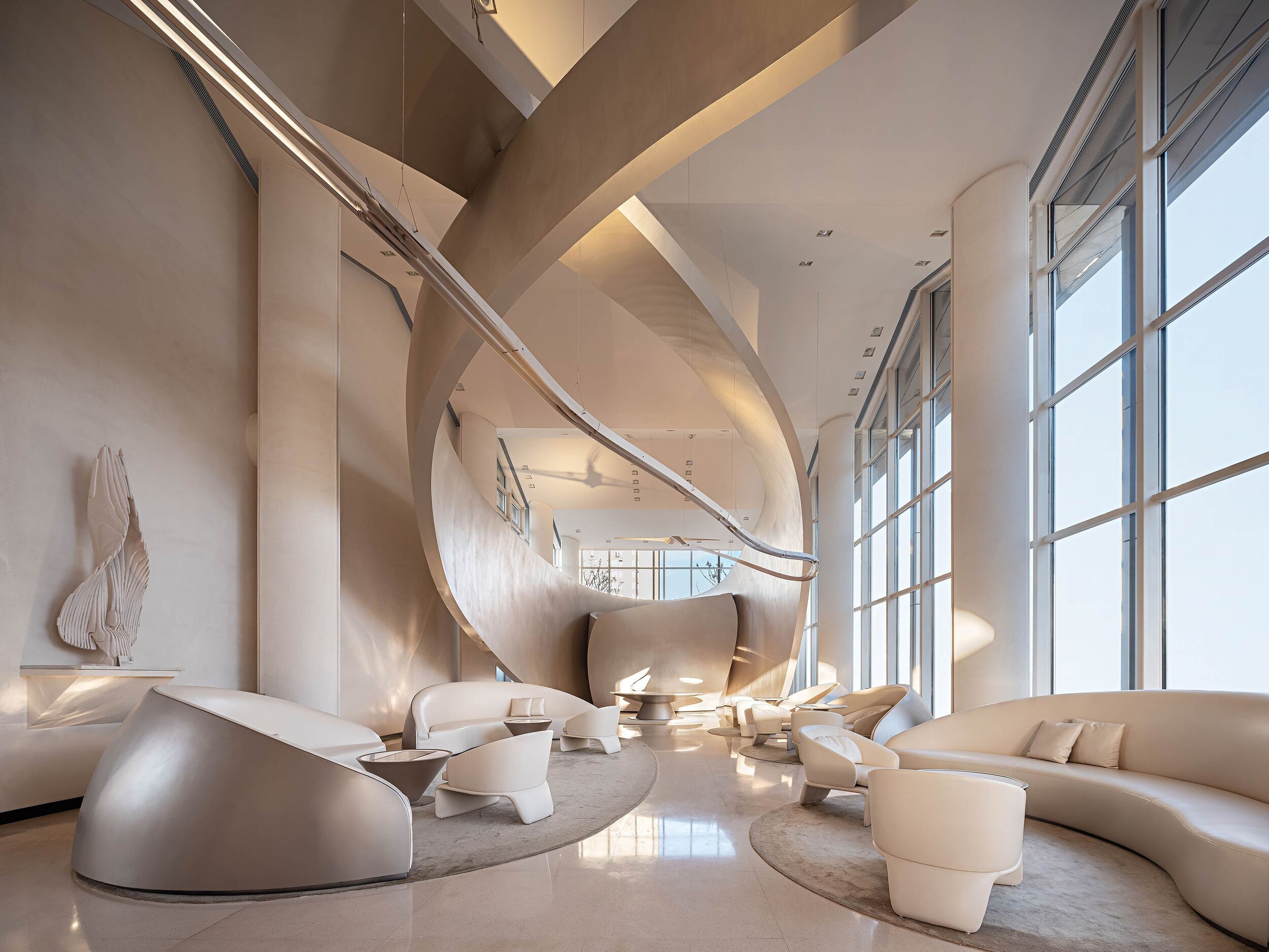
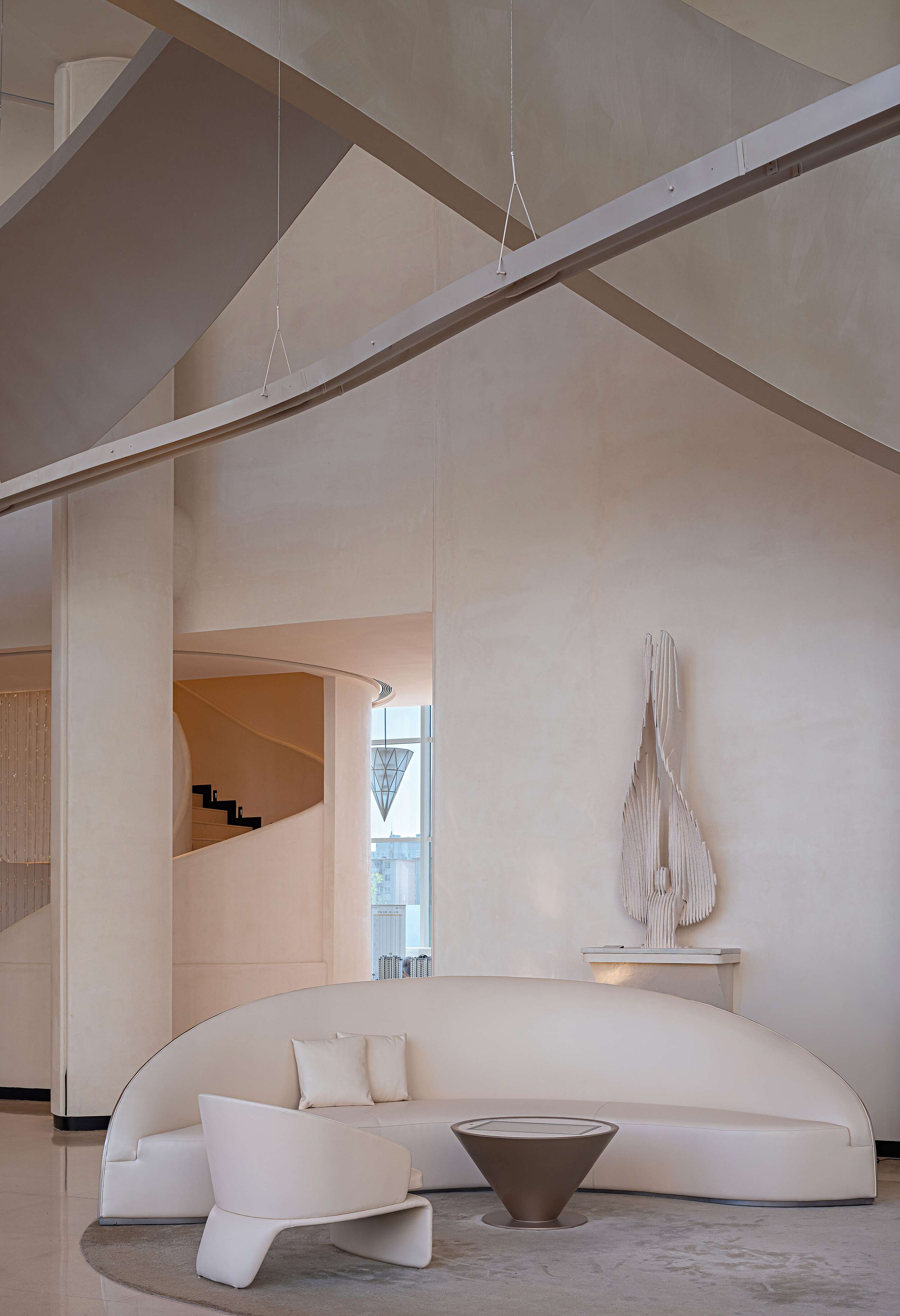
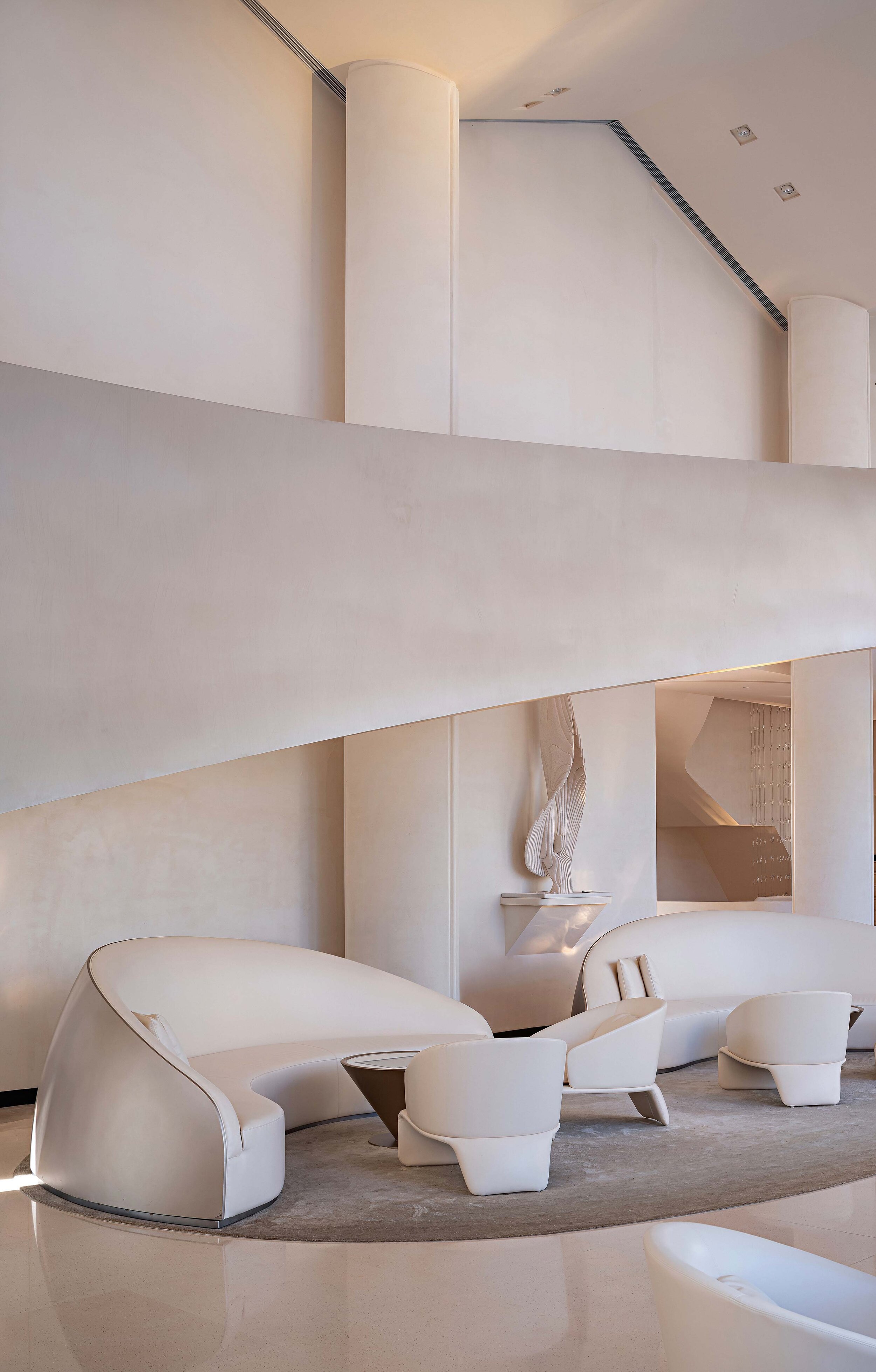
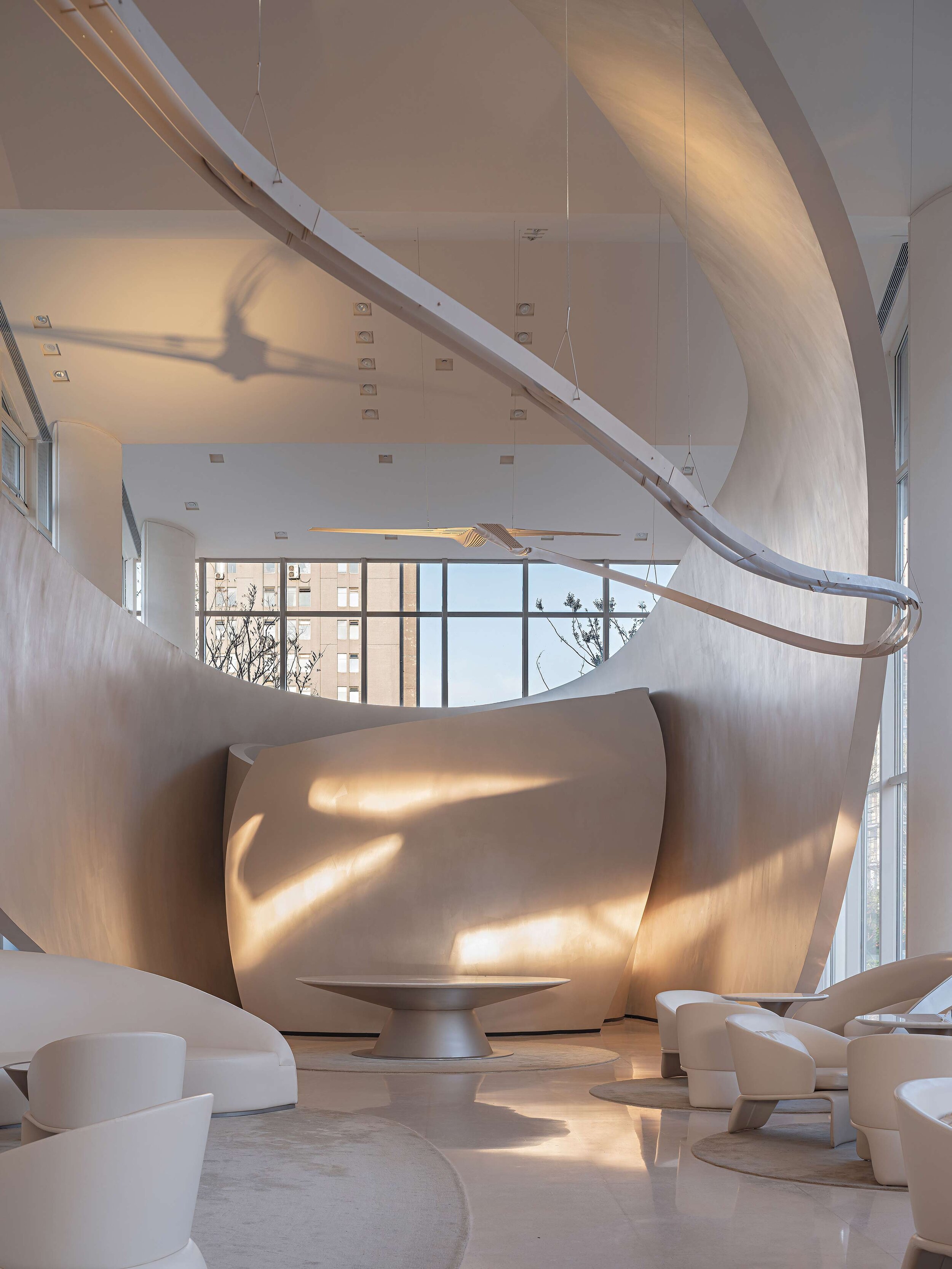
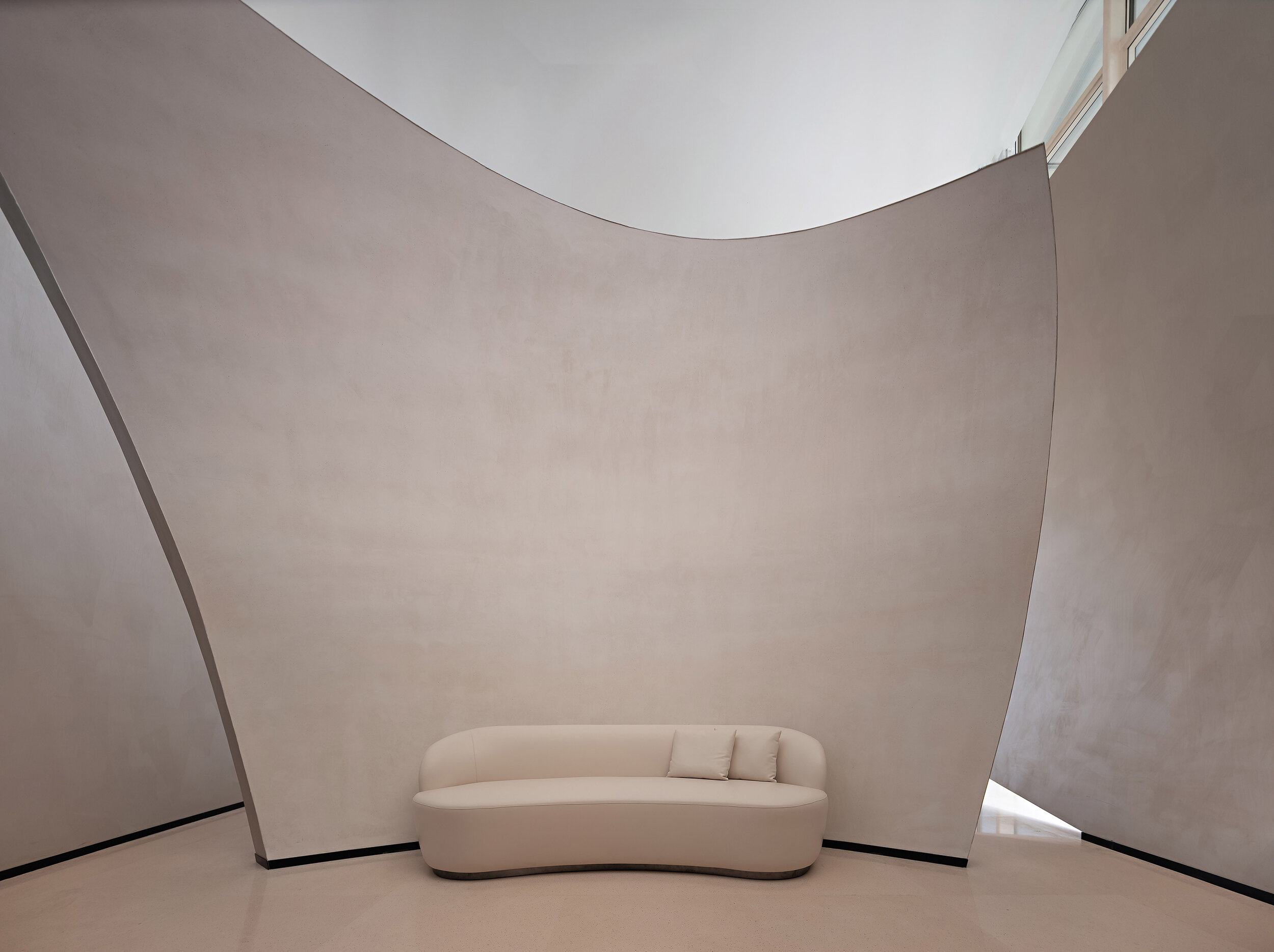
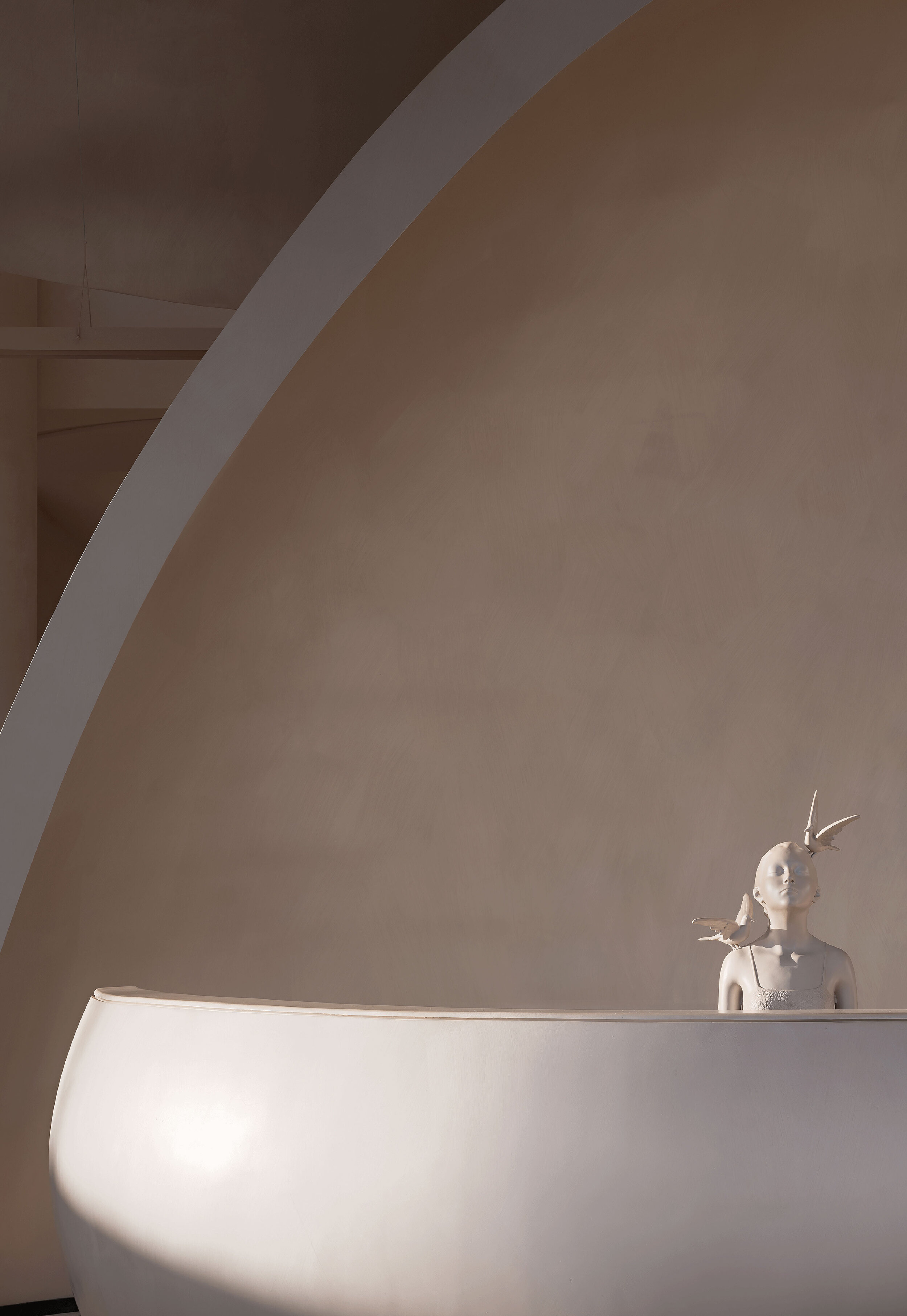
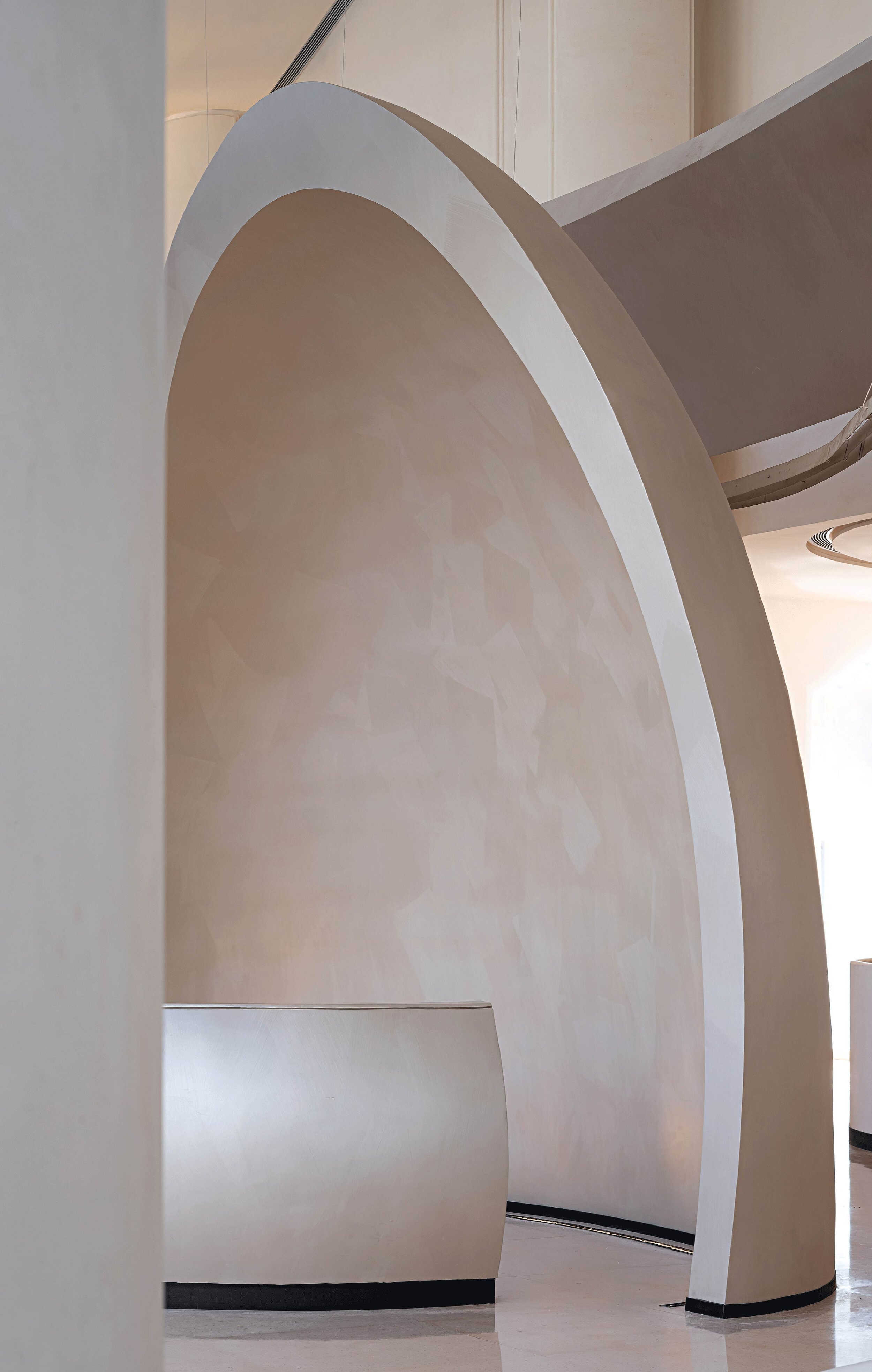
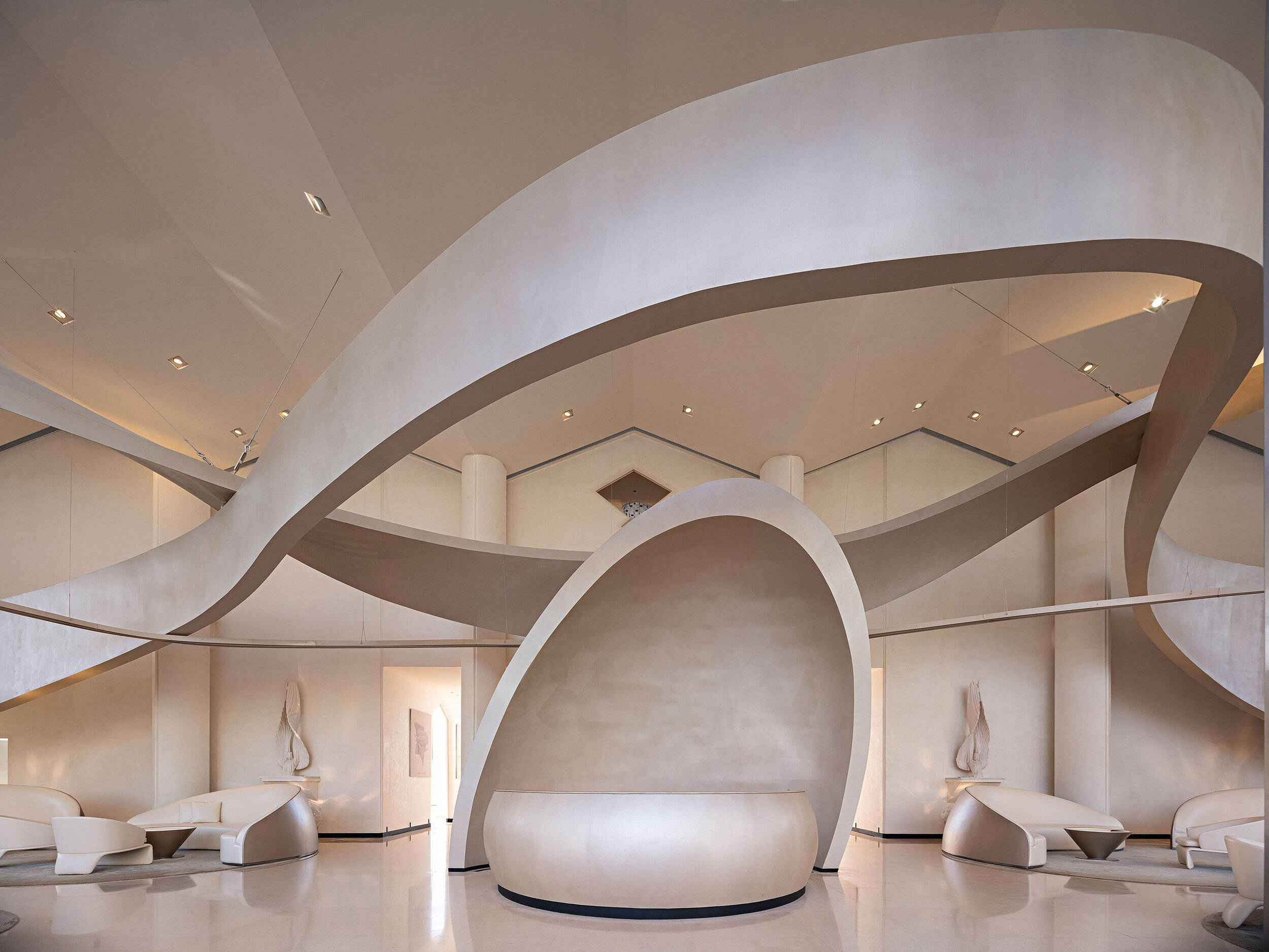
The Existence of a City Depends on Memory
By naming the project in Chinese after the “Nanjing Brocade” –a traditional article famous for its cloud-like colours and intricate patterns, China Overseas Land & Investment pays homage to the heritage of a city, the place where the best fabrics in the country are produced: the “Fifth Cotton Mill.”
The mill has been a part of Chinese culture for different generations. It is the prime model of how space can become a symbolic memory. The connection between the mill, the city, and society creates a dialogue between architecture, space, and people.
The designer had arranged the space created similar to a carrier inside a glass box to generate fluid forms and dynamic sculptures resembling the sinuous shapes of the Nanjing brocade, extensive sand dunes that transform time into organic musical patterns.
In Art, Past and Present Overlap while the Old and the New Establish a Unique Dialogue.
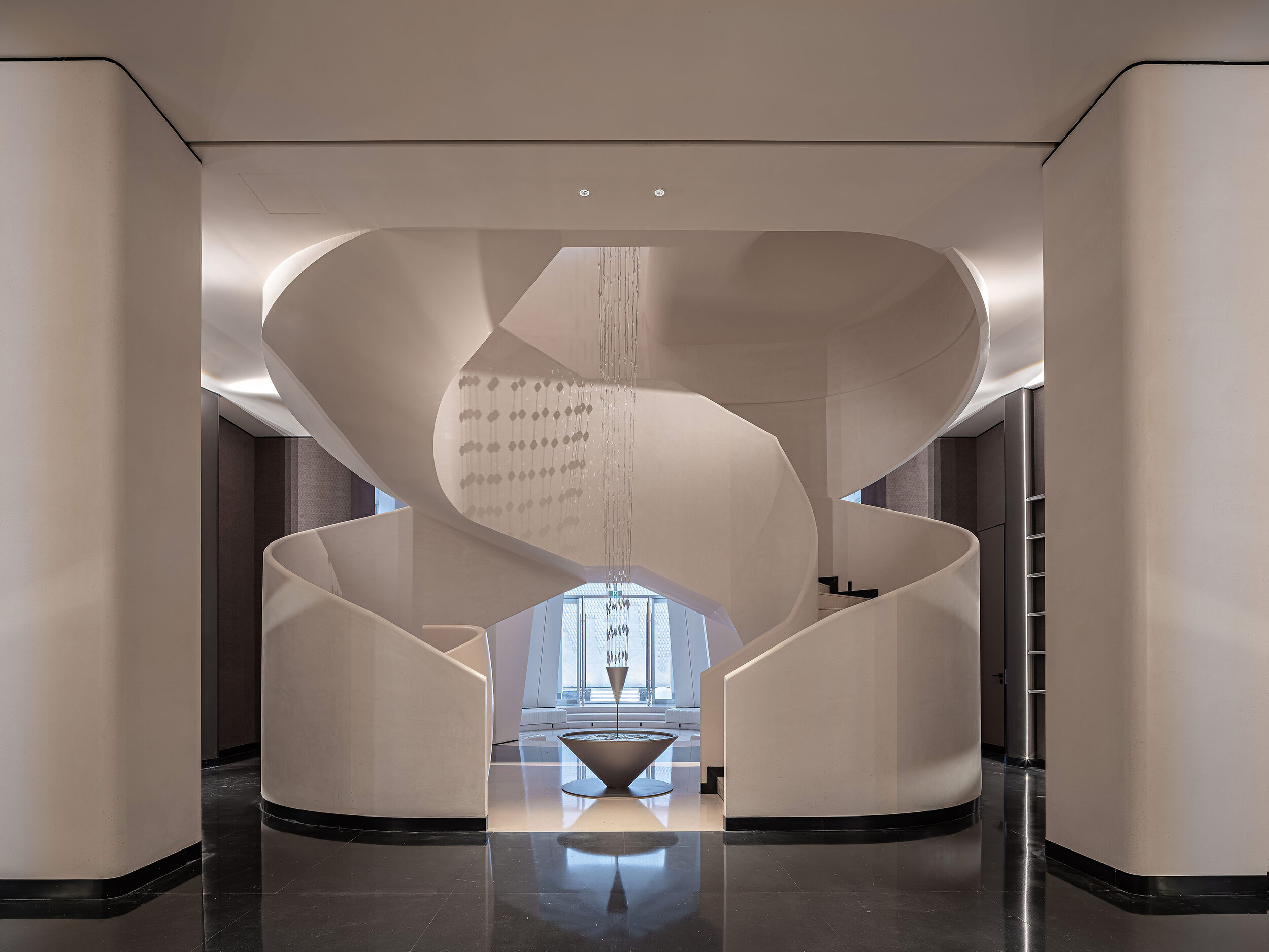
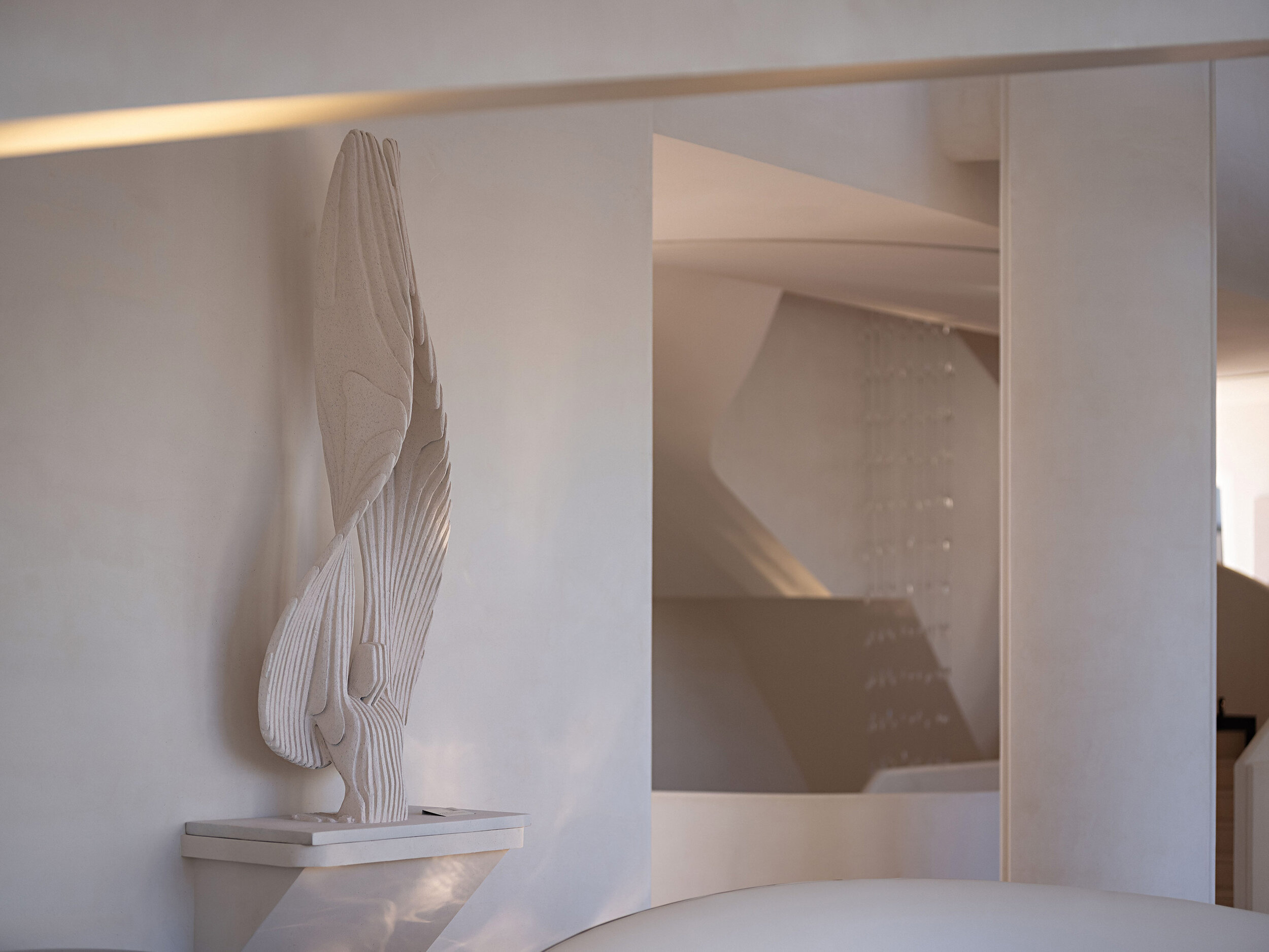
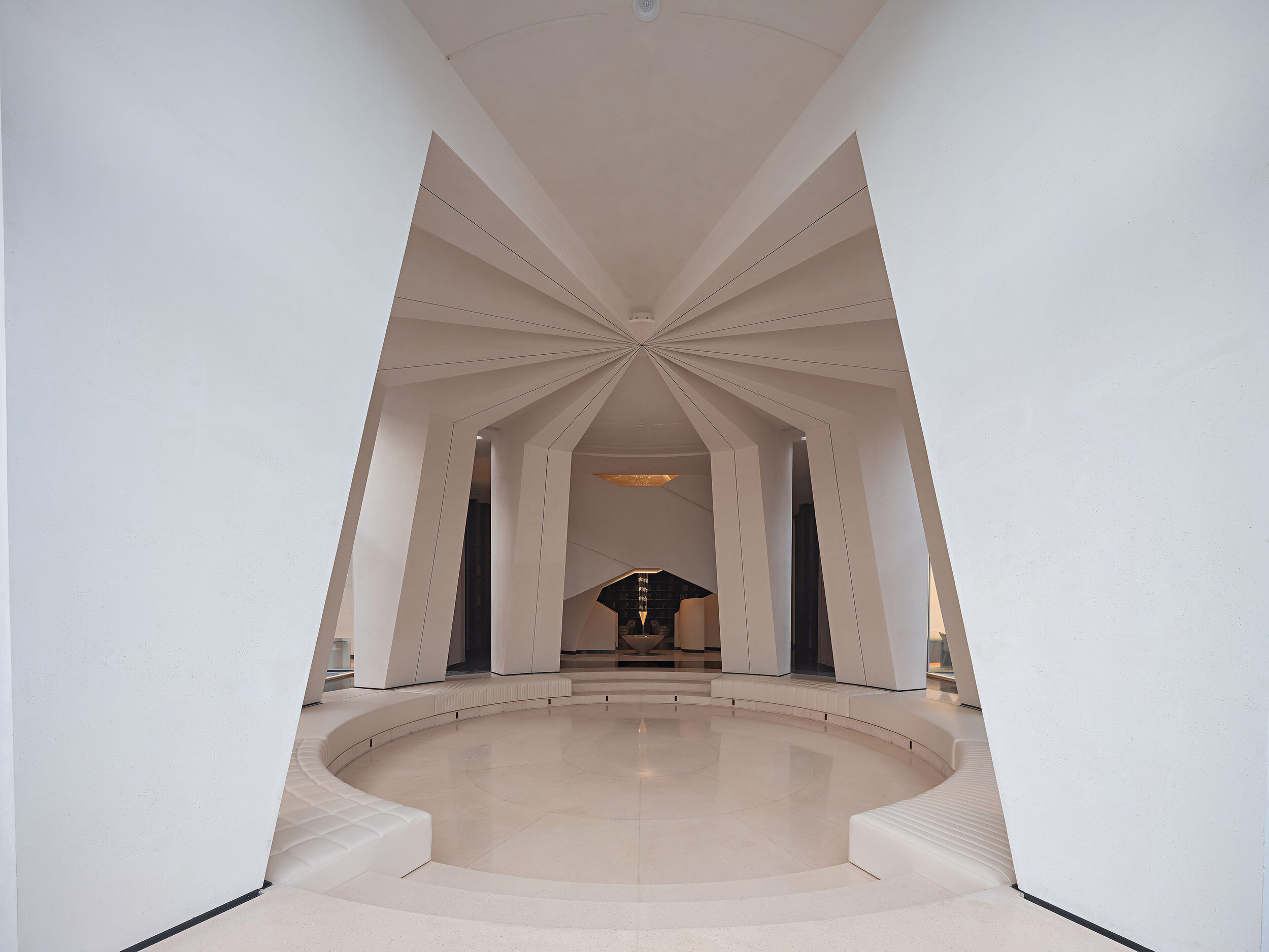
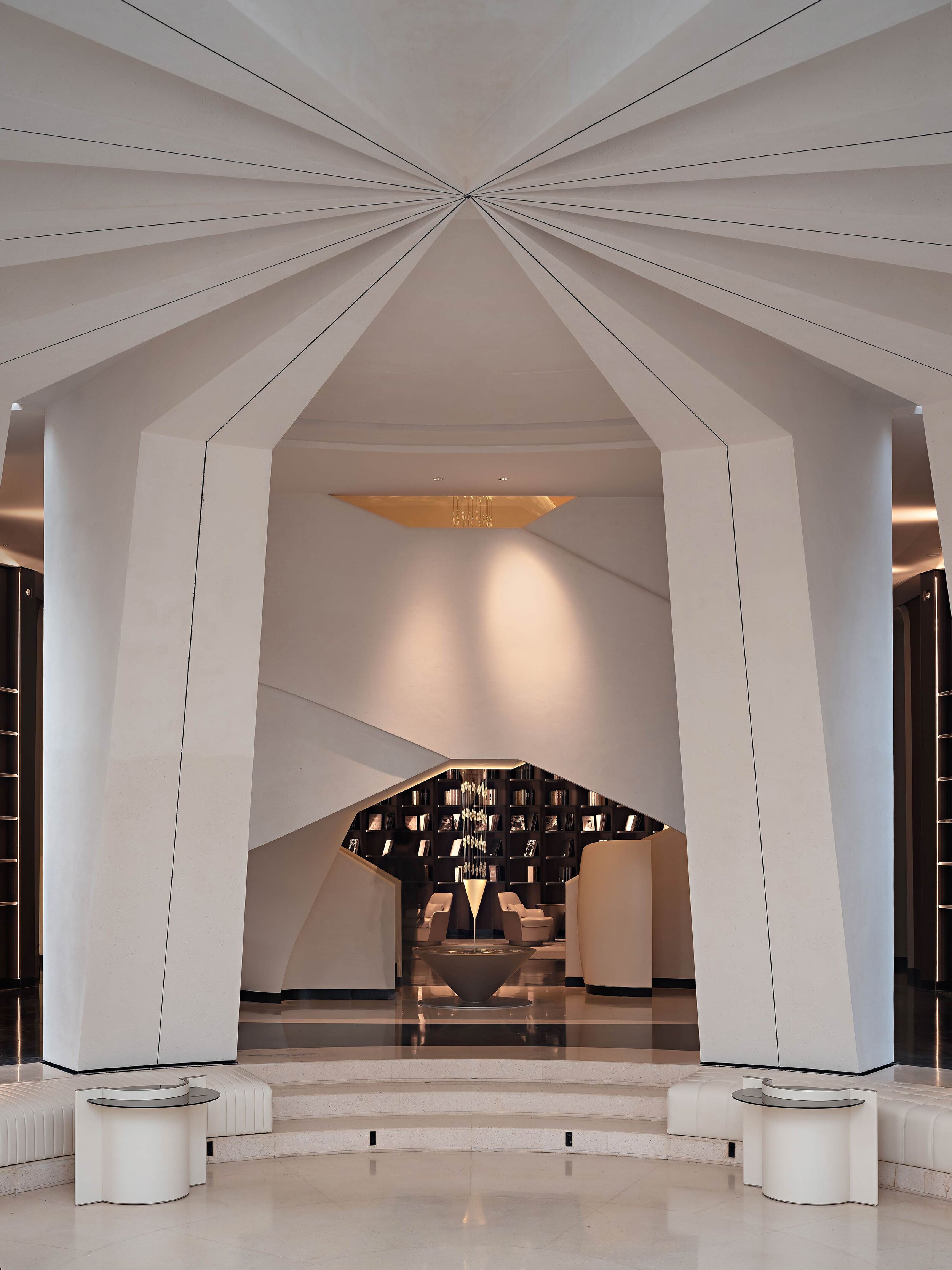
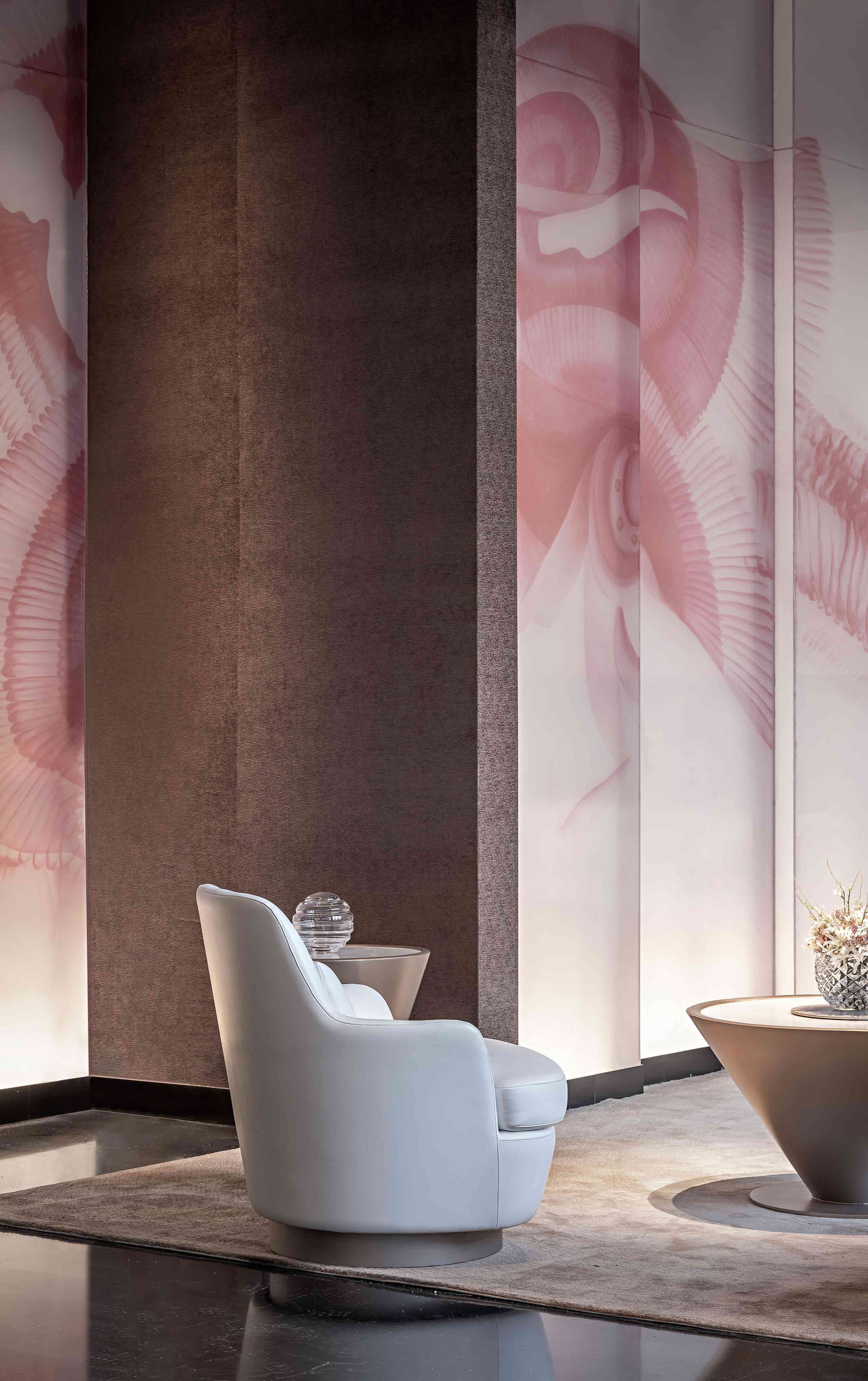
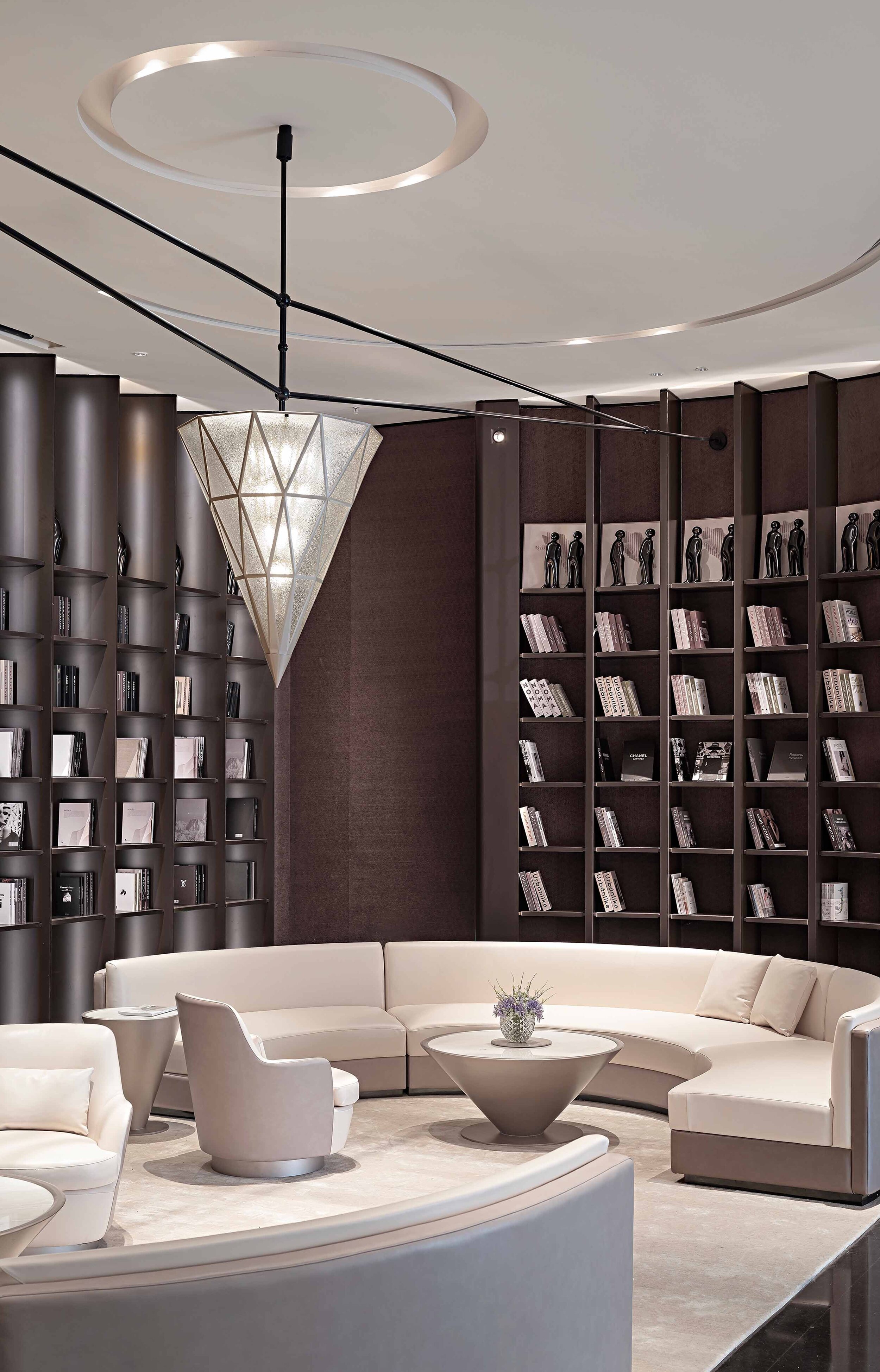
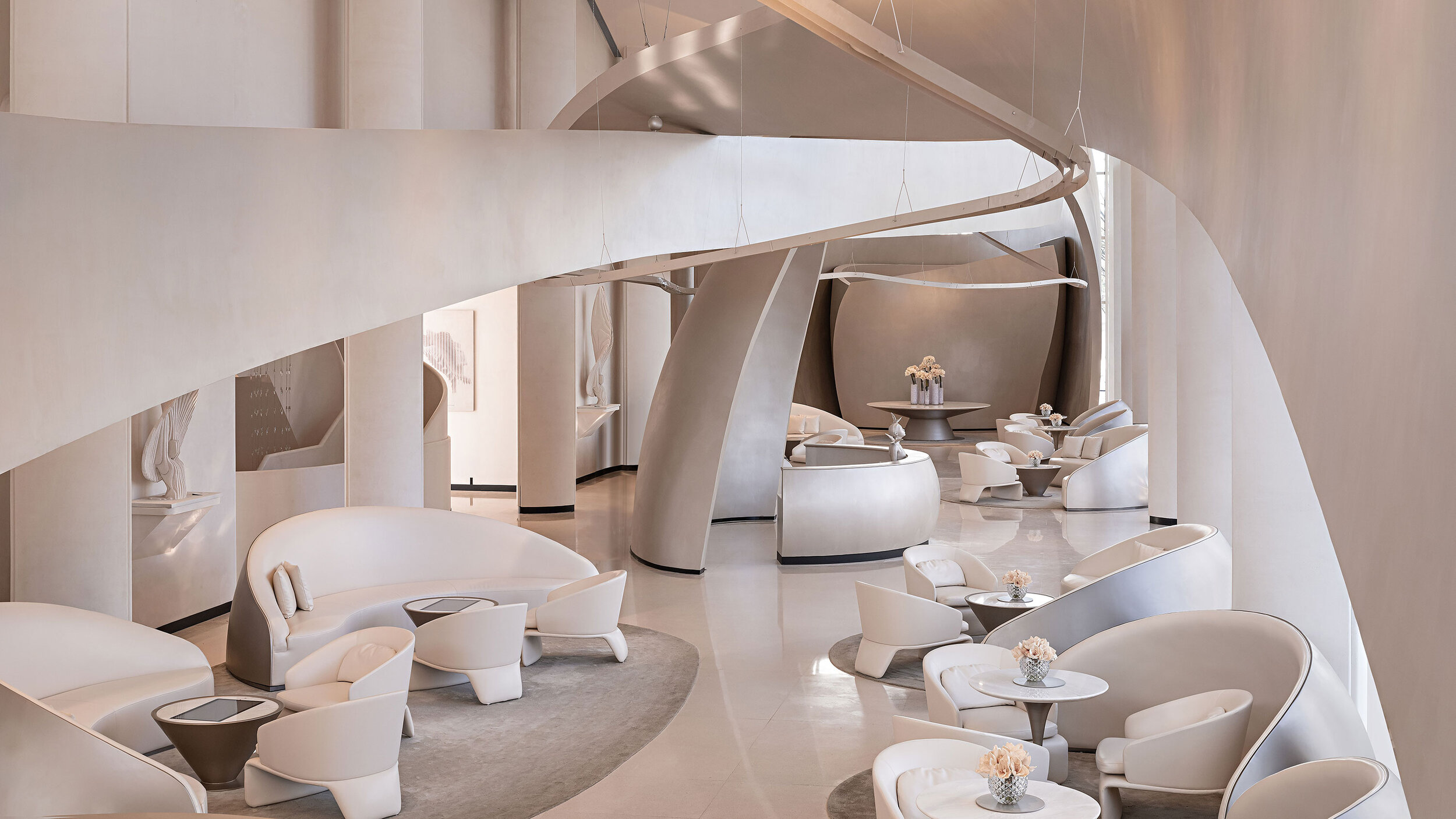

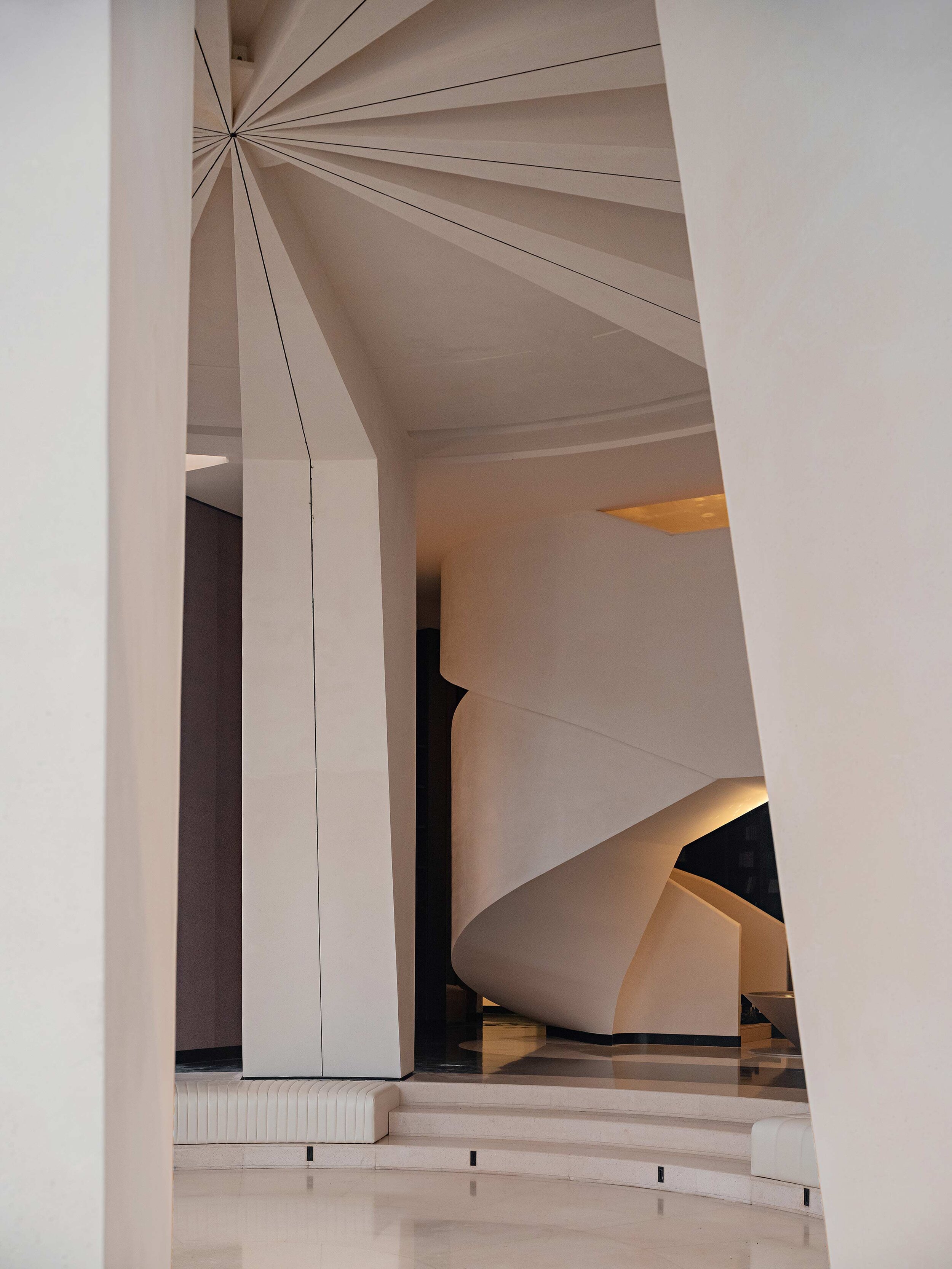
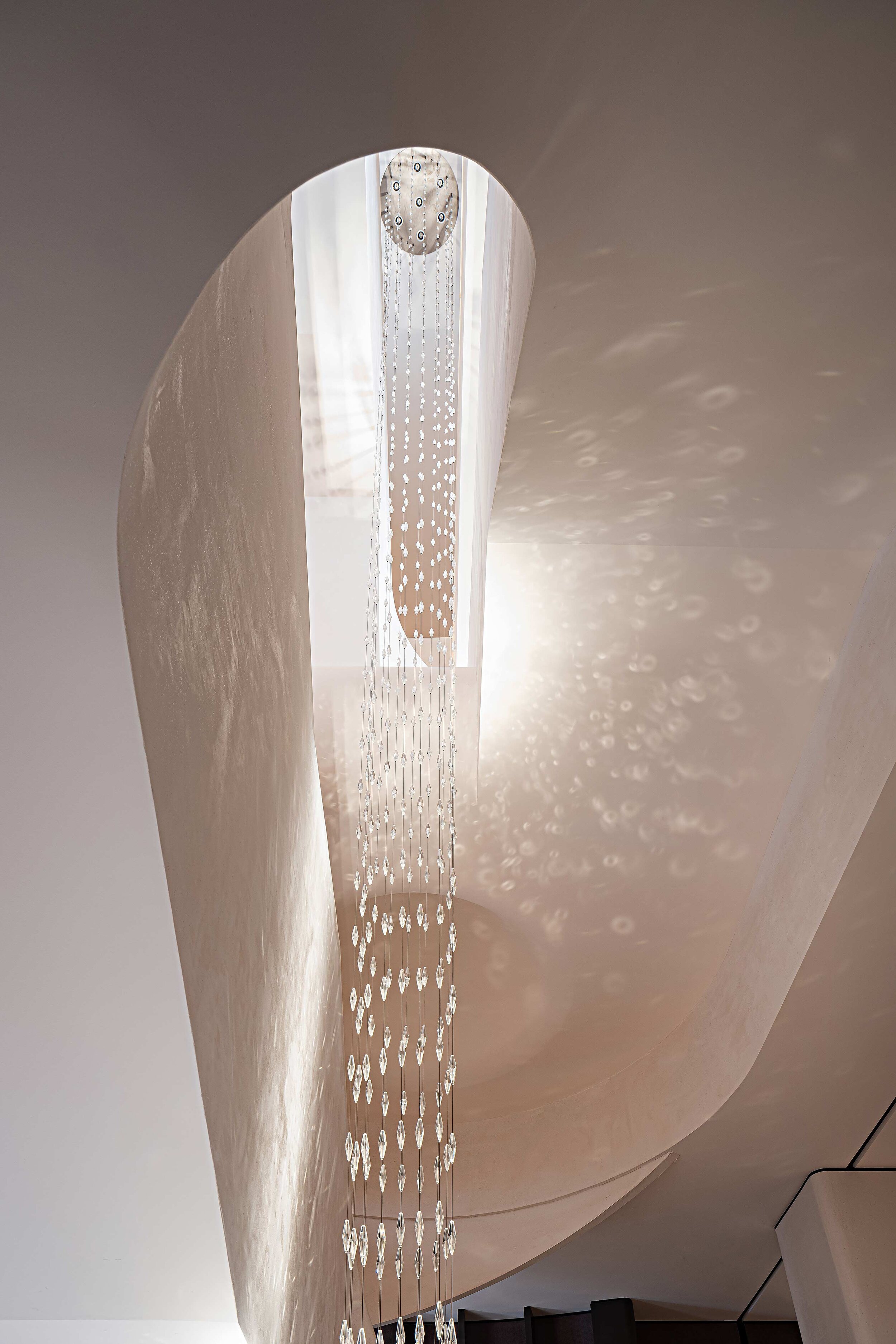
The designer takes elements from nature and memory and twists them into threads that weave an architectural brocade, using flexible curves to provide artistic tension to the surrounding environment, combining memories with physical space.
Memories evolve before our eyes as if weaved with fine silk threads. Countless flying yarns condense day and night into a winged sculpture, a threader moving swiftly between giant ribbons in space.
A fifty-two-meter-long and nine-meter-wide sculpture rises toward the sky and extends through the whole interior space of the property. Inspiration for the piece comes from Chinese brocade, revolving and dancing around, both intertwined and scattered simultaneously, outlining the shape of an infinite loop, aiming toward the future.
“We highlight the cultural features of the cotton industry in China. Using space to connects the past with the future. Through a dynamic momentum to create outlines, the beauty of life in bloom with unique elements from the past and formidable sights into future”. – said the designer.
“Time” is the Essence behind Brilliant Prospect
The designer adopted a unique artistic language to define Brilliant Prospect –the project’s name in English. Such a creative approach represents a distinctive landmark composed of artistic and cultural elements.
And thus, sinuous curves grow around the space, weaving segments of time into particular groups, orchestrating multiple ideas into one. Like an epic opera, its magnificent forms fascinate people with a distinctive charm.
Unlock your Imagination, Open your Mind to a Brilliant Prospect
Complementing the central sculpture, an artistic staircase becomes the symbolic entrance to a time tunnel that distributes imaginative elements above and below ground. At the center of two sculptural curved stairs lies an installation called the “Time Shuttle.”
The designer sets the central functional zone of the property in a sunken courtyard where mirrored are as vast as the skies, and lakes provide a deep depth of field, separating everything inside the property from the complexities of the external world. The salon area opposite the book bar interprets the convergence of time with geometric shapes.
The whole space is bestowed with church-like sacredness and tranquillity. It cultivates a life of elegance with poetry, wine, flowers and tea, gathering the essence of life through elements such as rhythm, softness and comfortable surroundings to enjoy the company of old and new friends.
The clubhouse is an extension of the household, a unique kind of companionship that further refines and integrates social circles. Once again, the “spindle” becomes the main artistic symbol of the space. This time, the shape hangs down from the ceiling, concentrating the light coming from a surrounding “ocean of knowledge.”
Thus, the designer transforms space into a petri dish of curiosity and creativity, awaking memories and shaping them. The area feels like a “dance frozen in time” about to begin again, prompting a breathtaking melody that transforms objects into lively and meaningful beings.
The designer hopes to create an artistic “choreography” between real and imaginary times, providing guests with endless possibilities from the future, a banquet, meeting or party in modern times.
Project info
Project name: Brilliant Prospect Project status: Completed in September, 2020
Location: Shijiazhuang, Hebei Province, China
Developer: China Overseas Land and Investment Contractor: Beijing Mingyang Hanhai Decoration LLC. Design team: GBD Lead designer: Du Wenbiao (Bill Do)
Interior design: Guangzhou GBD Design Project area: approximately 2000m2
Main Materials: Terrazzo, Faux paint, Metal paint Photographer: BenMo Studio
A feeling called Home - City Home Collective
BRABBU is a design brand that reflects an intense way of living, bringing fierceness, strength and power into an urban lifestyle. With a diverse range of furniture, casegoods, upholstery, lighting and rugs, and through sensory design, they pass on a unique experience in every product that they design and produce. Assuming that home is a lot more than a space, City Home Collective, the company responsible for this Park City House, wanted to do something exceptional with this project, creating a meaningful feeling to the client: a place where he belongs.
BRABBU is a design brand that reflects an intense way of living, bringing fierceness, strength and power into an urban lifestyle. With a diverse range of furniture, casegoods, upholstery, lighting and rugs, and through sensory design, they pass on a unique experience in every product that they design and produce. Assuming that home is a lot more than a space, City Home Collective, the company responsible for this Park City House, wanted to do something exceptional with this project, creating a meaningful feeling to the client: a place where he belongs.
The prime objective of this design firm is to match people with unique spaces, working with high-skilled designers, such as Helena Morozoff, the senior designer responsible for this Park City project, who prospects smart design with no boundaries.
As a result, the strategy here was to let the material drive the design, always opting for the most comfortable furnishing, choosing and combining materials that speak to each other, which made this warm, tactile and visual feeling of a retreat possible.
This perfect combination of neutral tones and patterns, contributed to the arising of this cosy and monochromatic space, filled with elegance and uniqueness, allowing the space to evolve over the time.
In a nutshell, City Home Collective believes that “life is better when you love where you live”, so they designed this house as the perfect place to relax, reconnect and recharge. And that is why home is so much more than a space, it is definitely a feeling.
For more information, please visit: www.brabbu.com
The Green Soul of Zegna - the Dream of Zero Waste Possible
At Zegna, they have taken care of the world we live in from the beginning, following in the footsteps of their founder Ermenegildo Zegna. This is their company mission, based on a constantly-evolving thought: looking at the future with the belief that our actions today will shape our tomorrow.
“At Zegna, we have taken care of the world we live in from the beginning, following in the footsteps of our founder Ermenegildo Zegna. This is our company mission, based on a constantly-evolving thought: looking at the future with the belief that our actions today will shape our tomorrow.”
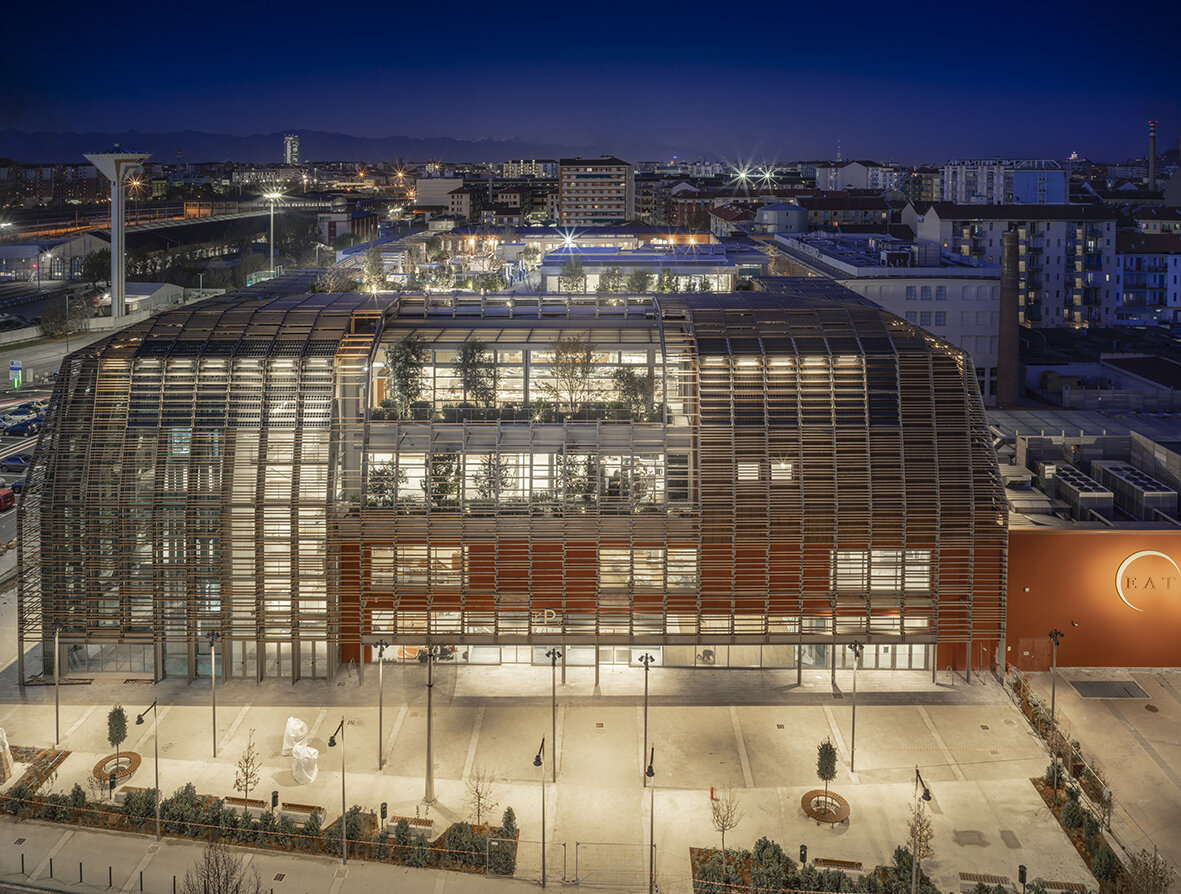
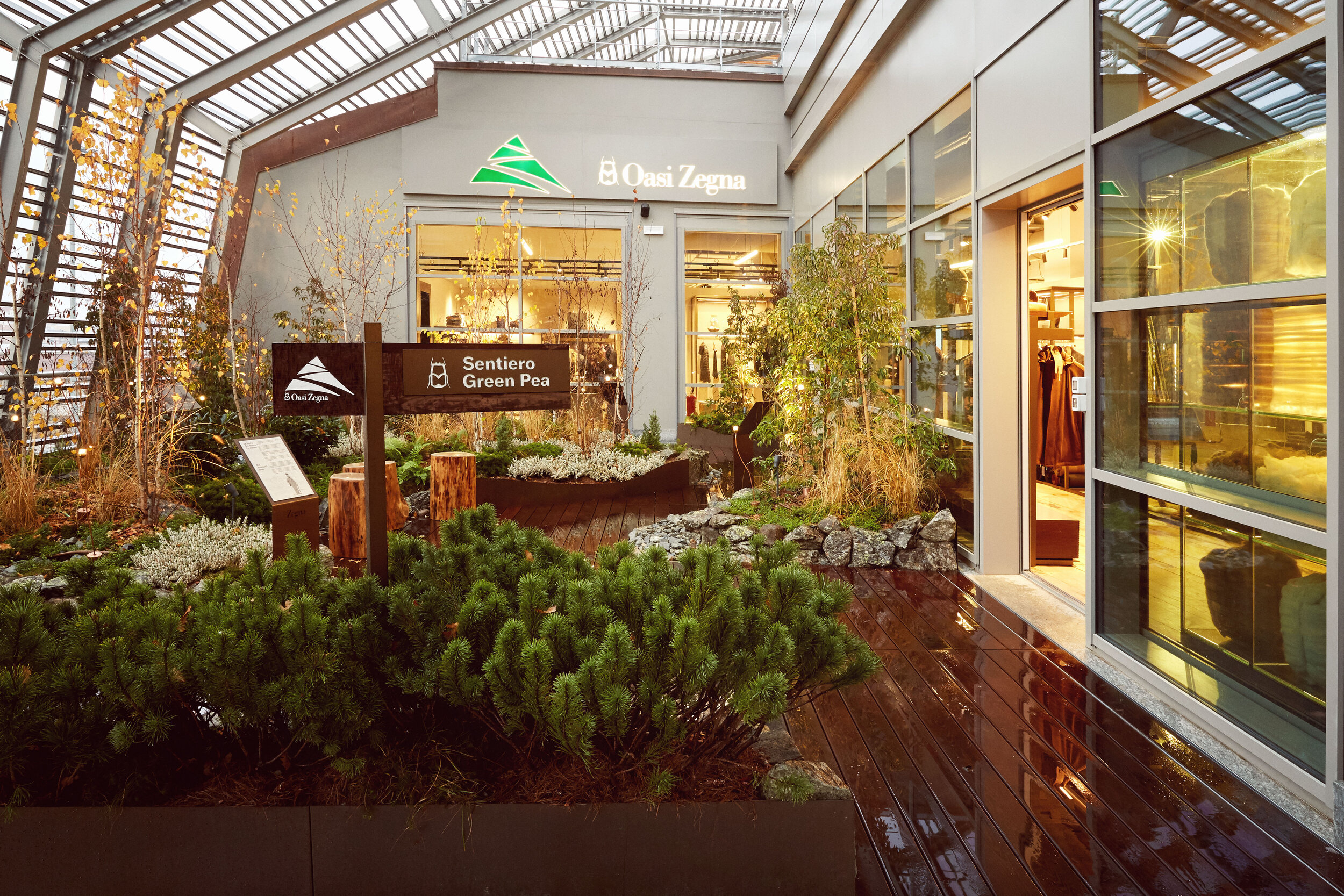
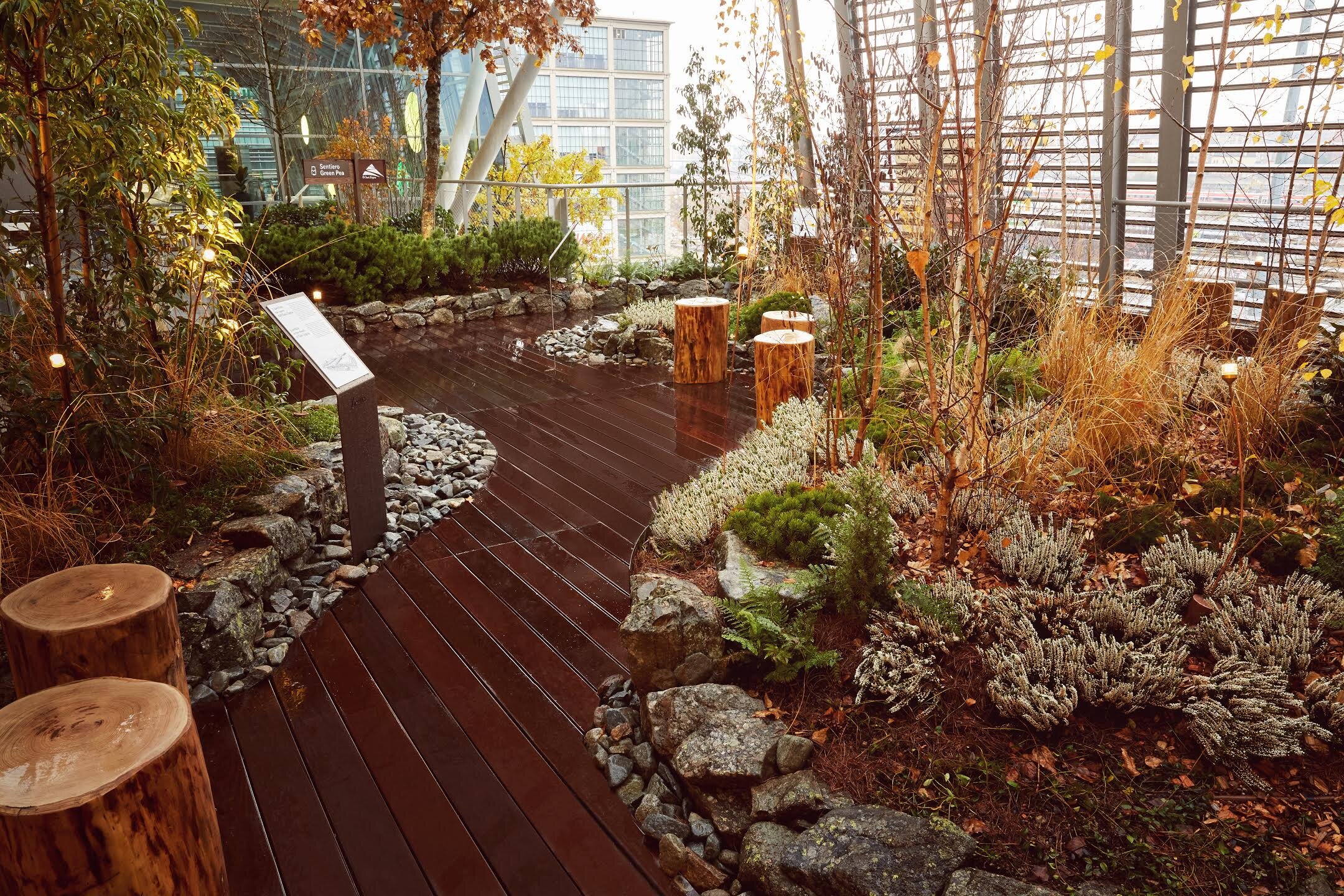
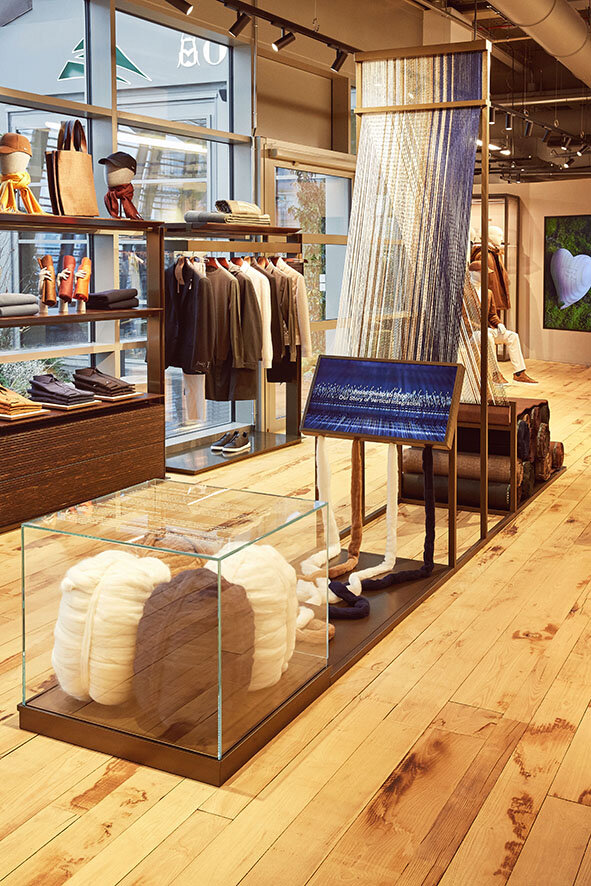

At Zegna, social and environmental responsibility have been our roots for 110 years. When they were founded in 1910, Ermenegildo Zegna’s dream was not just to create the world’s finest textiles but to make his hometown and the world around it a better place, ensuring the highest-quality products without compromising the quality of life for future generations. His vision is still the heart of everything we do. The environment is at the core of our efforts: we believe the very best garments can only come from the best natural resources, and that these resources need to be cared for. The advanced vertical integration of our business model facilitates our journey towards a sustainable product and holds us accountable for responsible practices and processes.
2020 marks our 110th anniversary. On this landmark year, we are proud to renew our sustainability pledge, exemplified by OASI Zegna, where our Lanificio Zegna was established and our green philosophy was ignited. OASI Zegna is a unique model of our environmental consciousness, a territory that now covers 100km2 from Trivero to Valle Cervo in the Alpi Biellesi, which would not have been possible without the visionary approach of our founder.
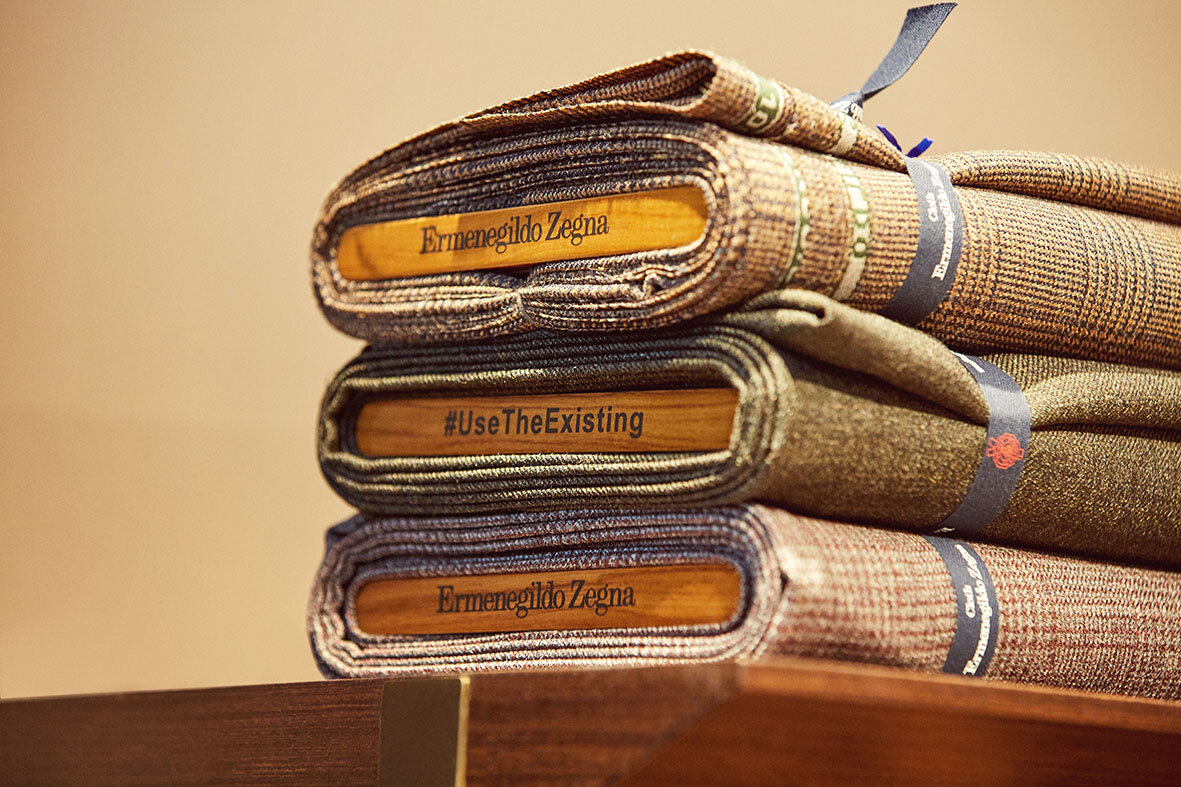
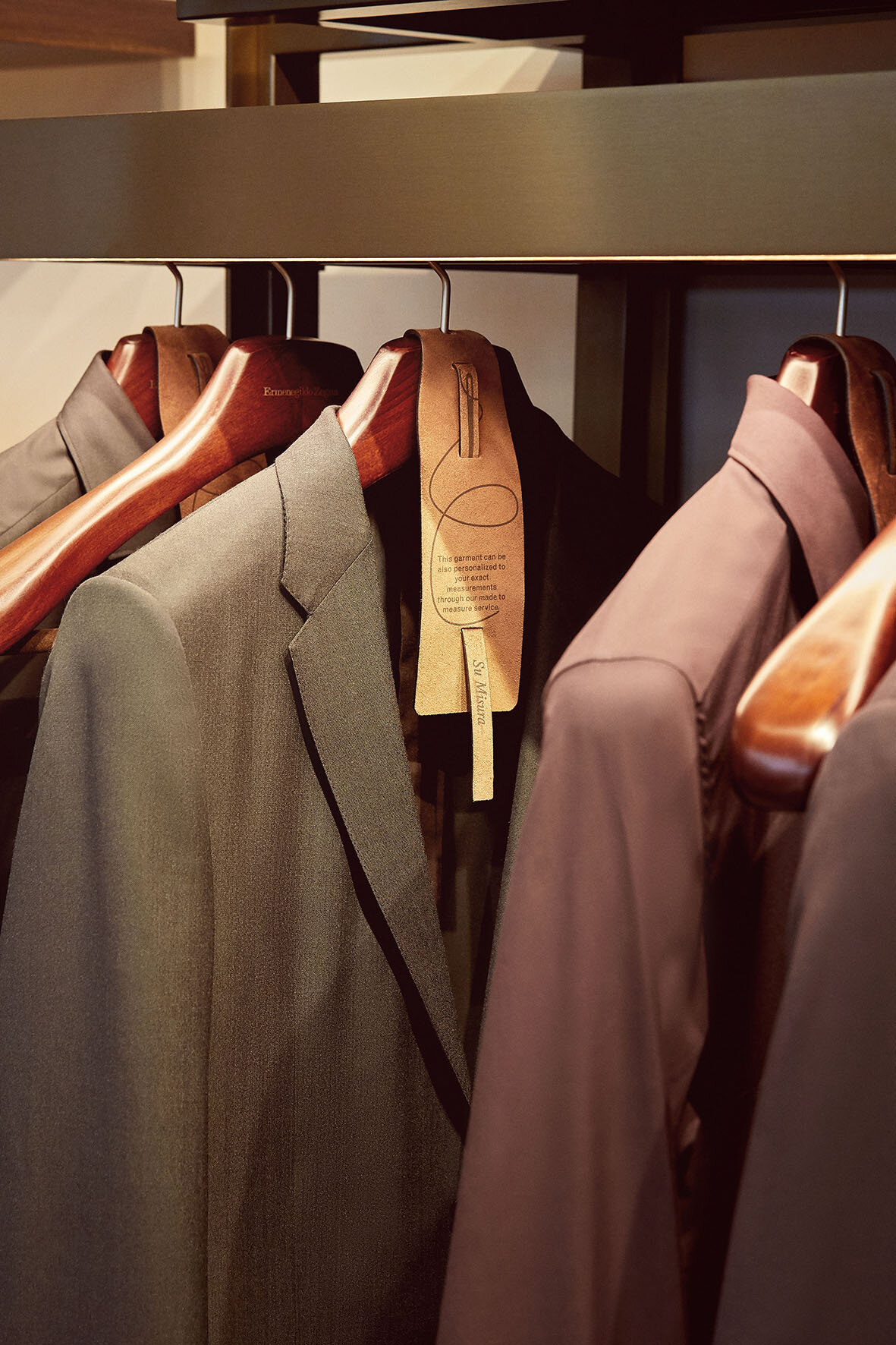
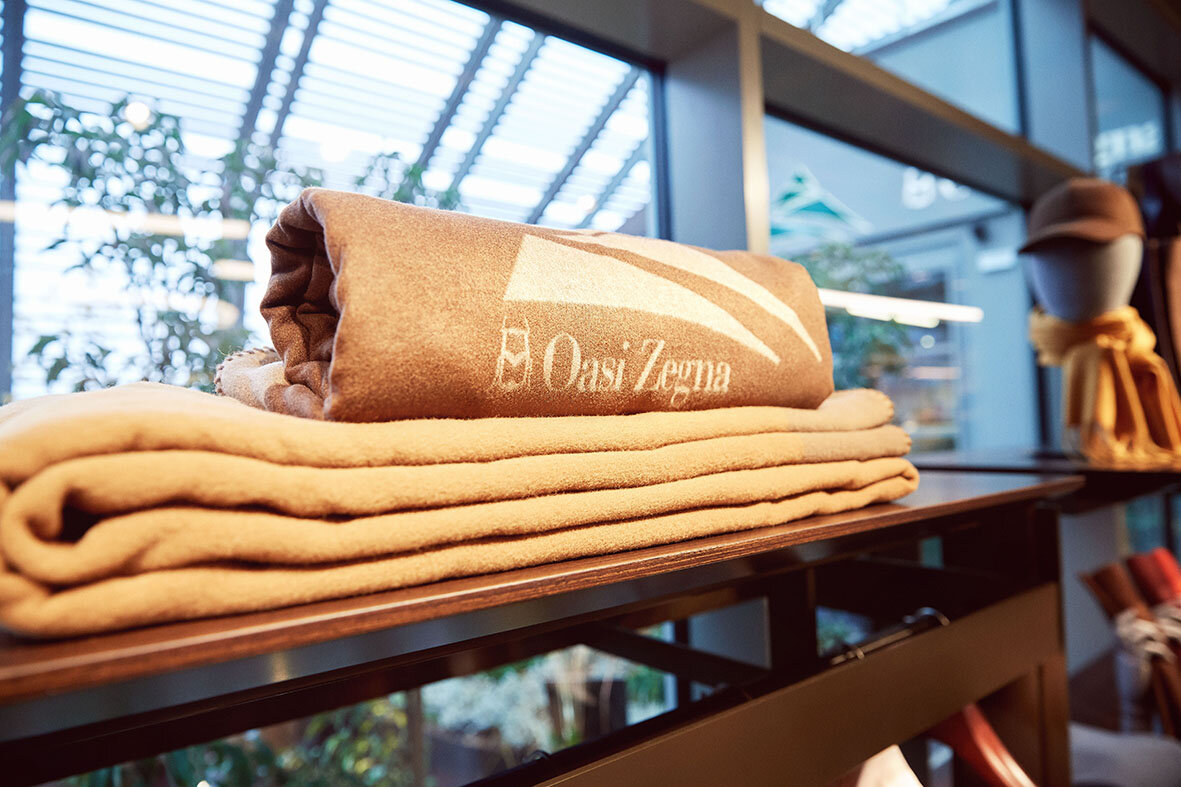
“In an ever-changing world, luxury companies can simply adapt to changes or choose to be a positive force in driving these changes. Our responsibility is to leverage our past to build a better present and future. This carries over into everything we do, following our founder’s legacy. I’m very pleased that Zegna is part of the Green Pea project, partnering with Oscar Farinetti who shares the same sustainability ethos with us”, says Gildo Zegna, CEO of Ermenegildo Zegna.”
Meanwhile at Z ZEGNA, we continue to push the boundaries to explore sustainable fashion solutions, and use recyclablematerials to create the Z ZEGNA FW20 #Usetheexisting Nylon Padded Jacket and Vest. The extra-light recycled nylon stuffing creates feather-like comfort, whilst outstanding weaving and craftsmanship ensurewaterproofing and warmth. The streamlined design is ideal for outdoor adventures and city life alike, with functional details such as a patch pocket on the chest, zipper side pockets covered by a sleek, peach-skin technofabric shell, and a drawstring at the bottom. A carefree choice for contemporary gentlemen to mix and match, the Z ZEGNA FW20 #Usetheexisting Nylon Padded Jacket and Vest come in four colour options: black, red, bright yellow and dark green.
“Morethan a simple project, #UseTheExisting is a state of mind,” says Artistic Director, Alessandro Sartori. “The main goal is to rework the fashion system in order to reduce our ecological footprint. At Zegna, we are trying to reuse resources in order to not waste any materials in the production chain. It is a mission and a vision in which we are investing a lot. This is the principle behind the latest and future collections.”
Together, wecan build a better tomorrow.
For more information, please visit: www.zega.com
The modern expression Cadillac House, designed by Gensler, Shanghai, China
In Shanghai, China, Cadillac China and Gensler’s Shanghai Office sound a clear note of great latitude in expressing Cadillac House’s individuality, thus giving it the leeway to embrace deconstructivism and digital technologies.
Gensler redefines Cadillac House in Shanghai
with a sleek silhouette and defines it with a magnetic personality.
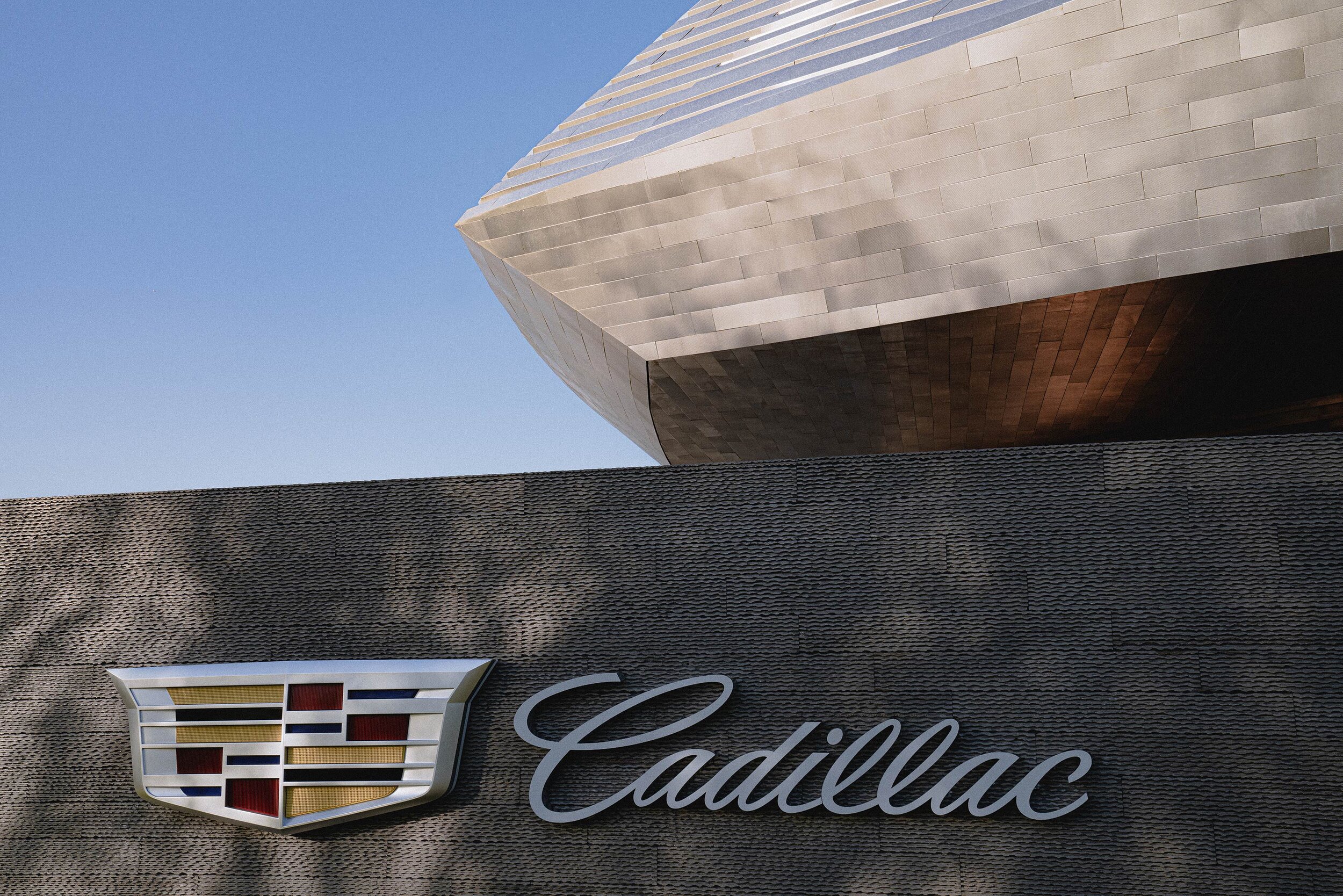
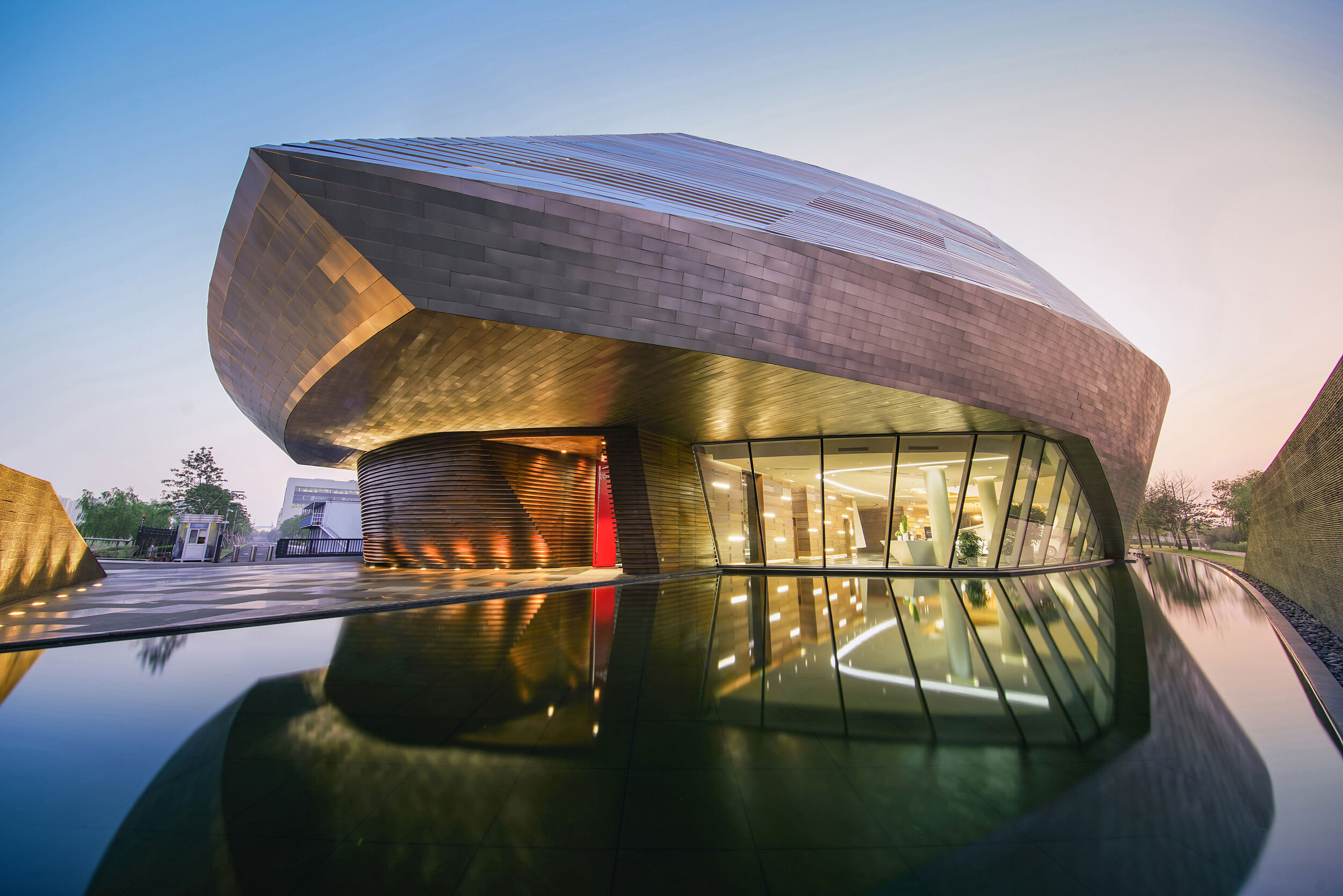
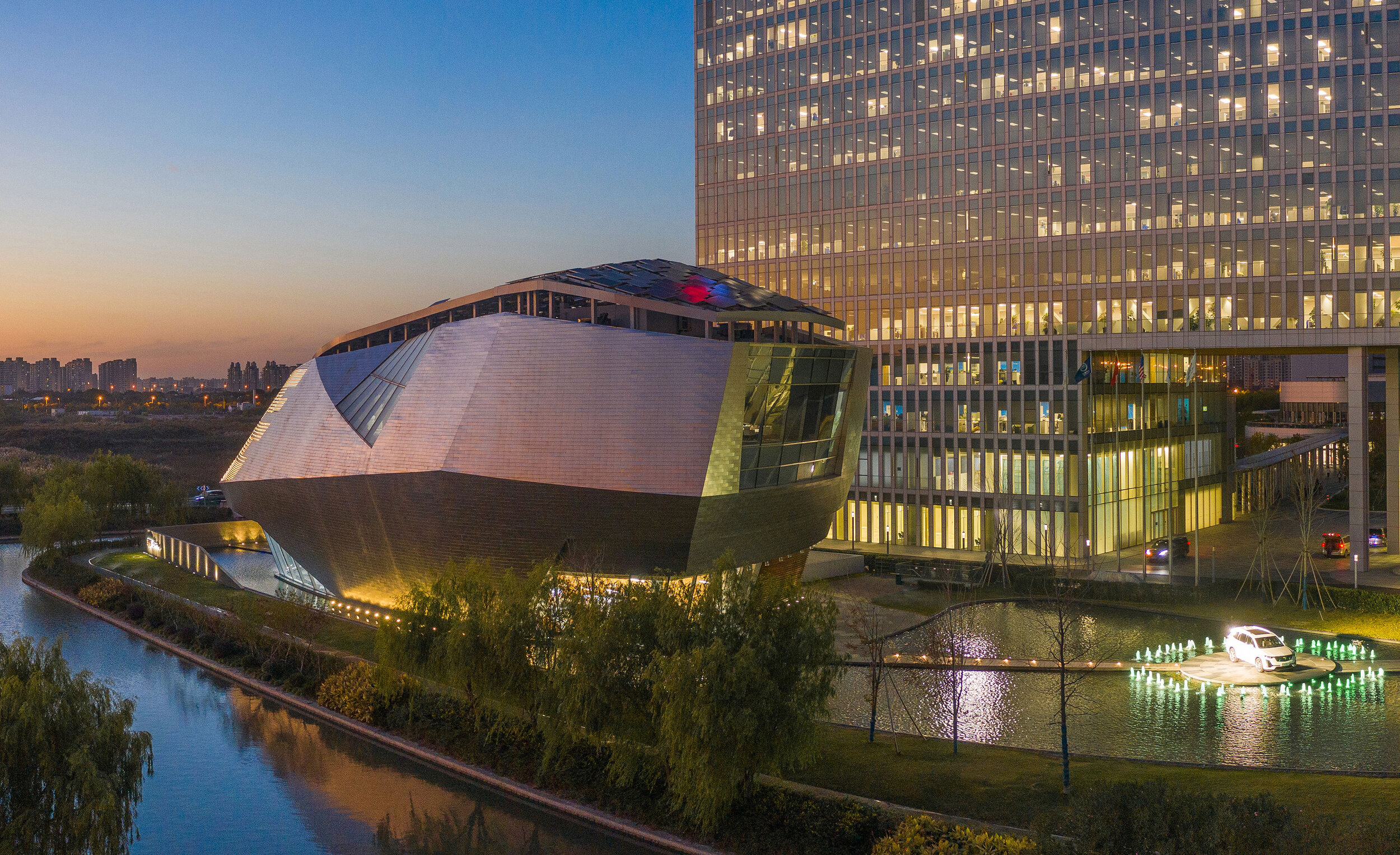
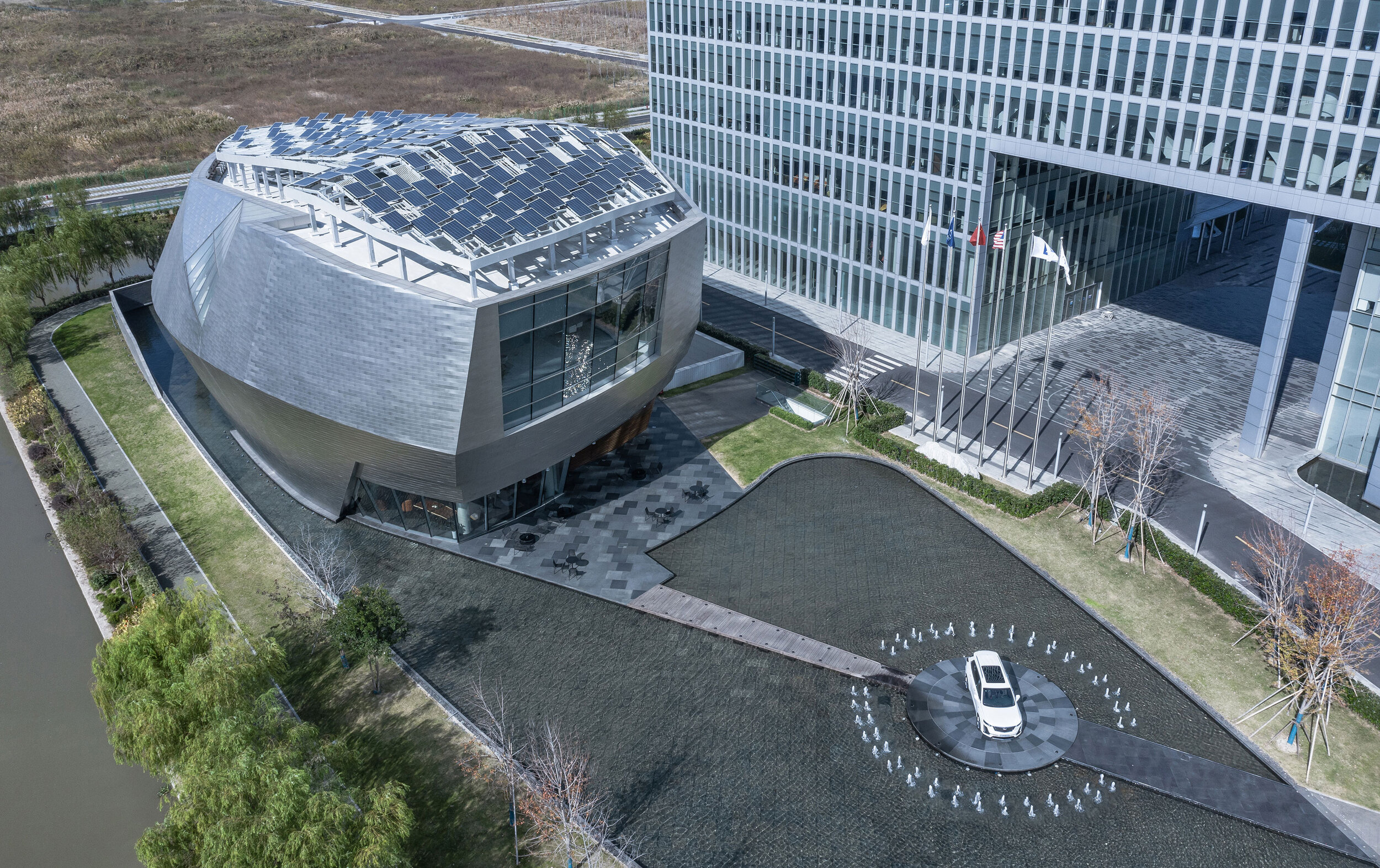
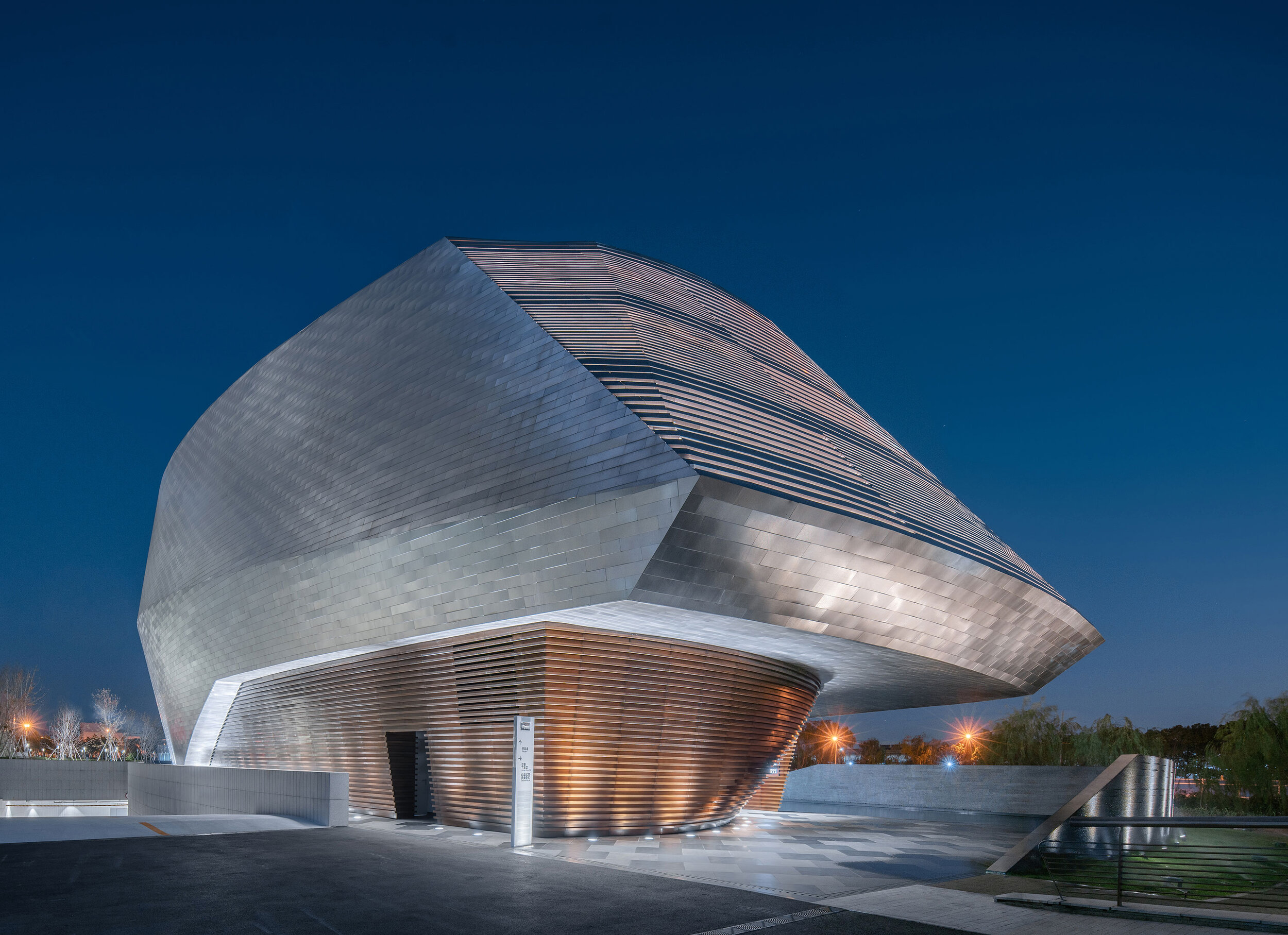
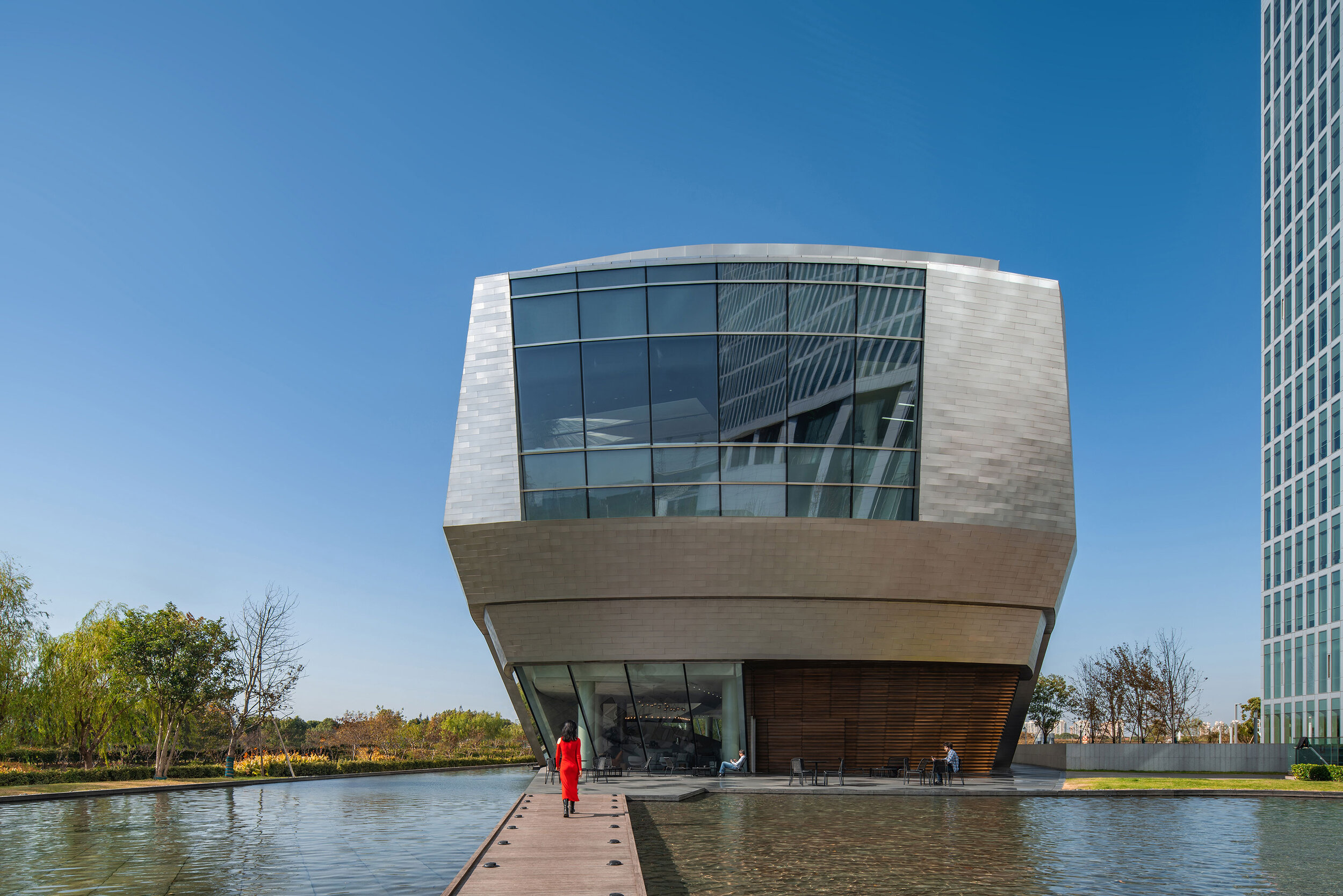
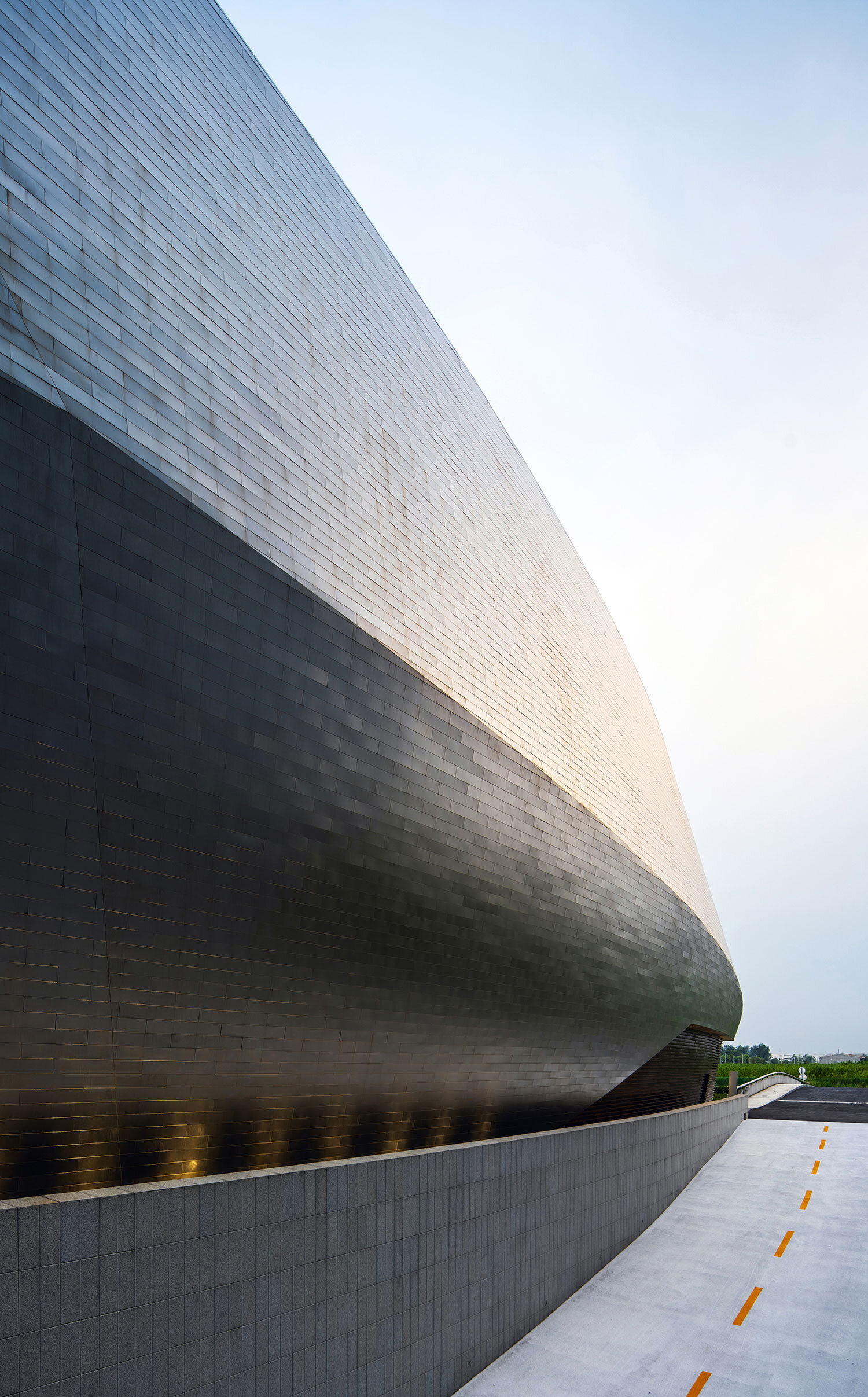

In Shanghai, China, Cadillac China and Gensler’s Shanghai Office sound a clear note of great latitude in expressing Cadillac House’s individuality, thus giving it the leeway to embrace deconstructivism and digital technologies.
Cadillac has a longstanding history now and Cadillac House is at its tender age, who is born in the ‘Me’ Generation wherein its birth is intended for exploring the stronger relation between new-technology trends and aestheticism and Self-expressing.
And Gensler, in modern expression, would care to render any visit to the House into a journey of exploration of modernism and futurism. Xiaomei Lee and Peter Weingarten, Co-Regional Managing Principals at Gensler Greater China, said that The Cadillac House project exemplifies Gensler’s One-Firm-Firm culture through combining the expertise of a global network and cross-practice collaboration from retail design, digital experience design to interior design and architecture disciplines, to leverage the power of design to create a better world.’
Nestled on a small peninsula with a lovely pool encompassing around, the House could be perceived as a vehicle-like gemstone mined out of a lake. Installed in 7,000 rectangular stainless steel plates, the façade unveils its true charm as the dusk falls — ribbons of LED underneath the metallic husk twinkle bright and Cadillac, the sign, emits beautiful light — and it dawns on you ‘what a glittering site!’.
The House is equipped with durable solar panels, with the sustainable conversion from sunlight to electricity.
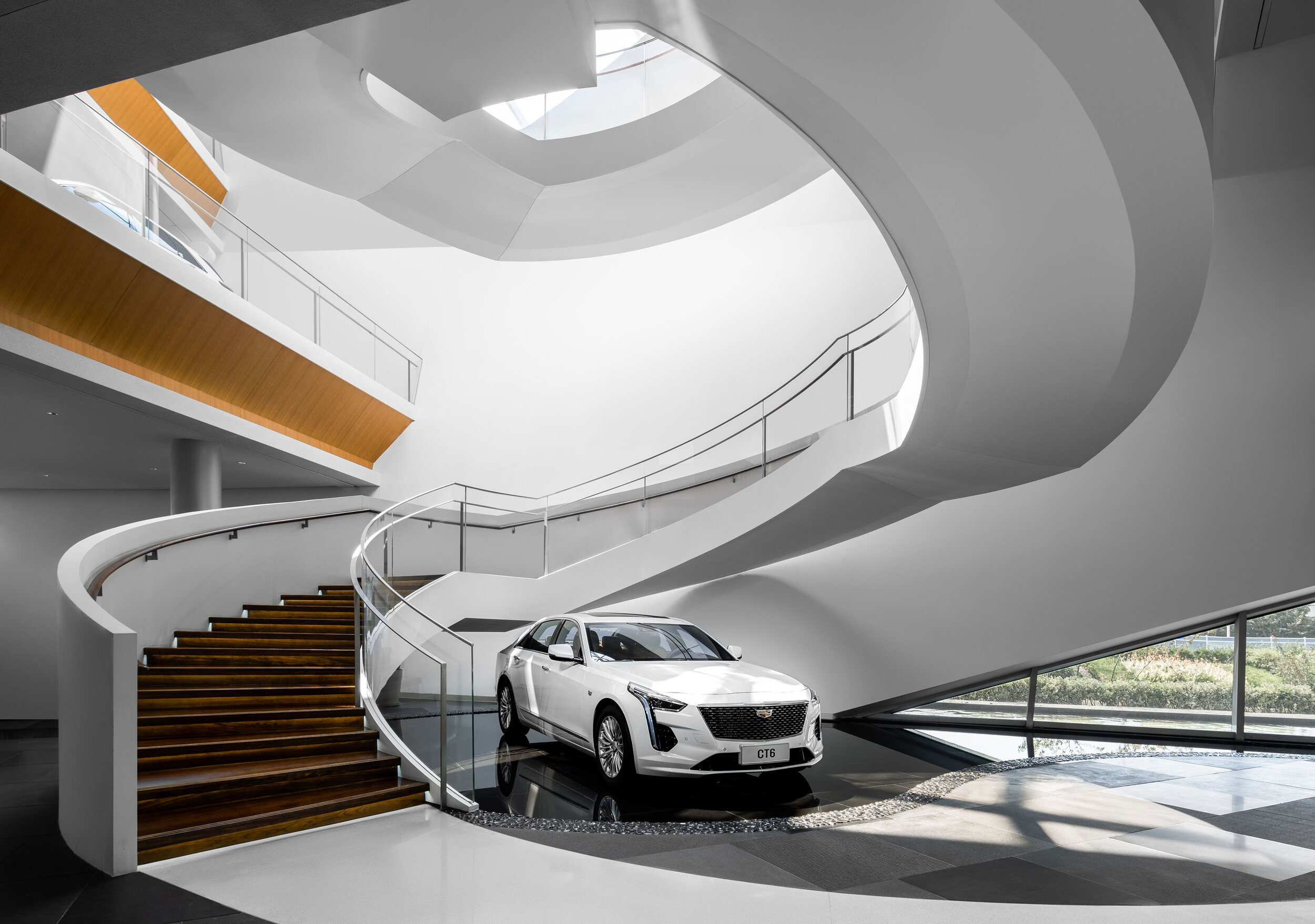
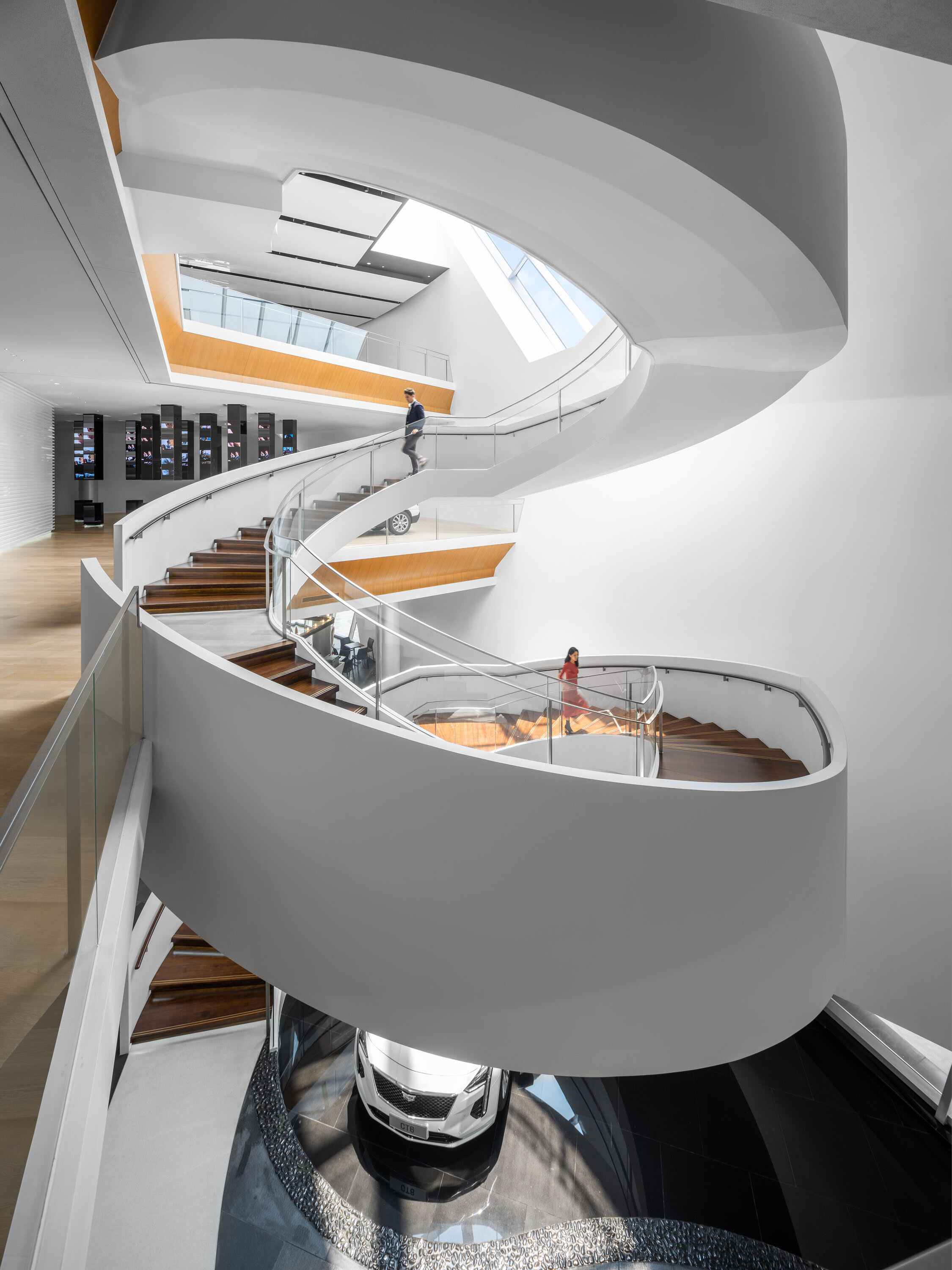
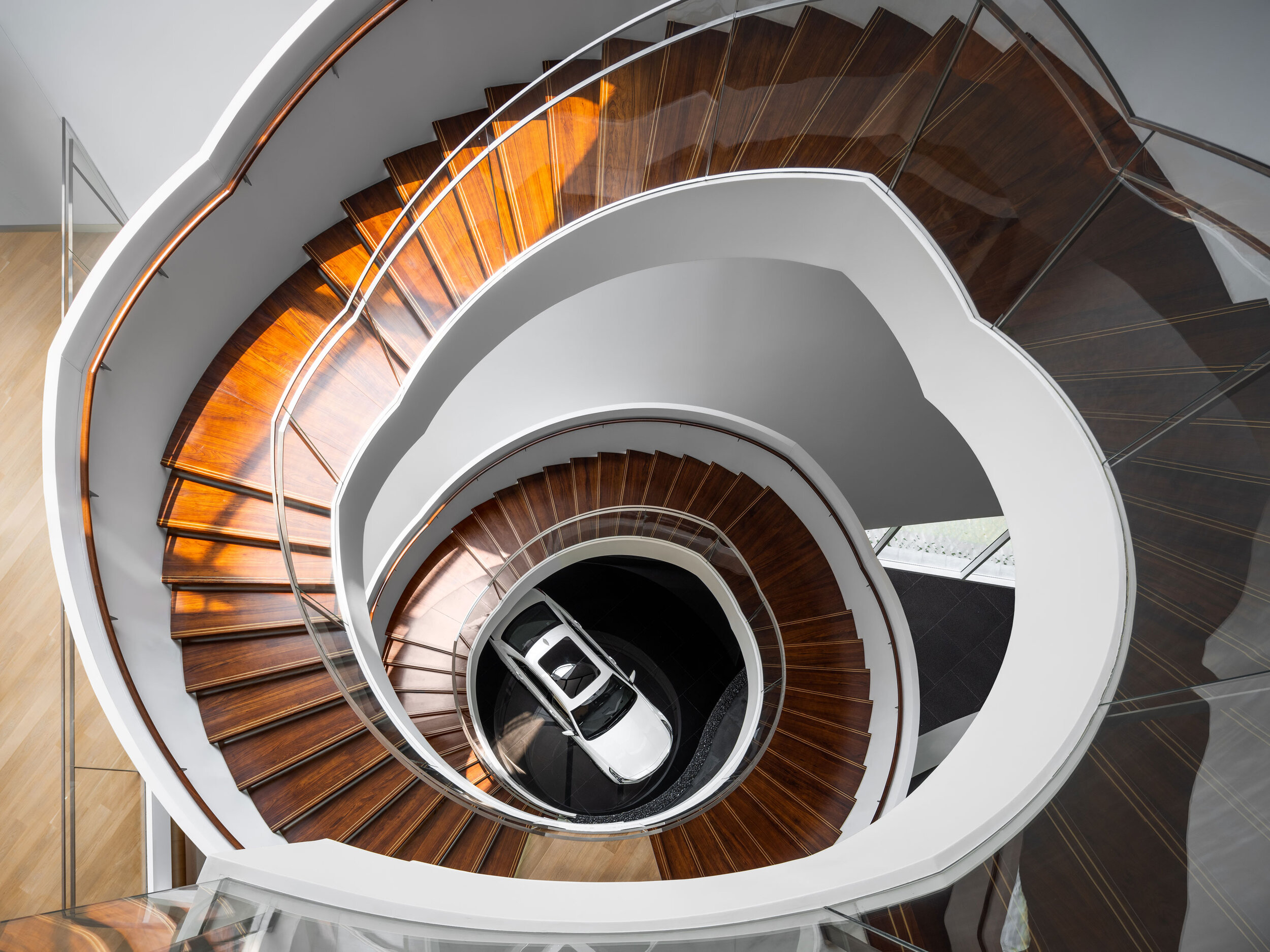
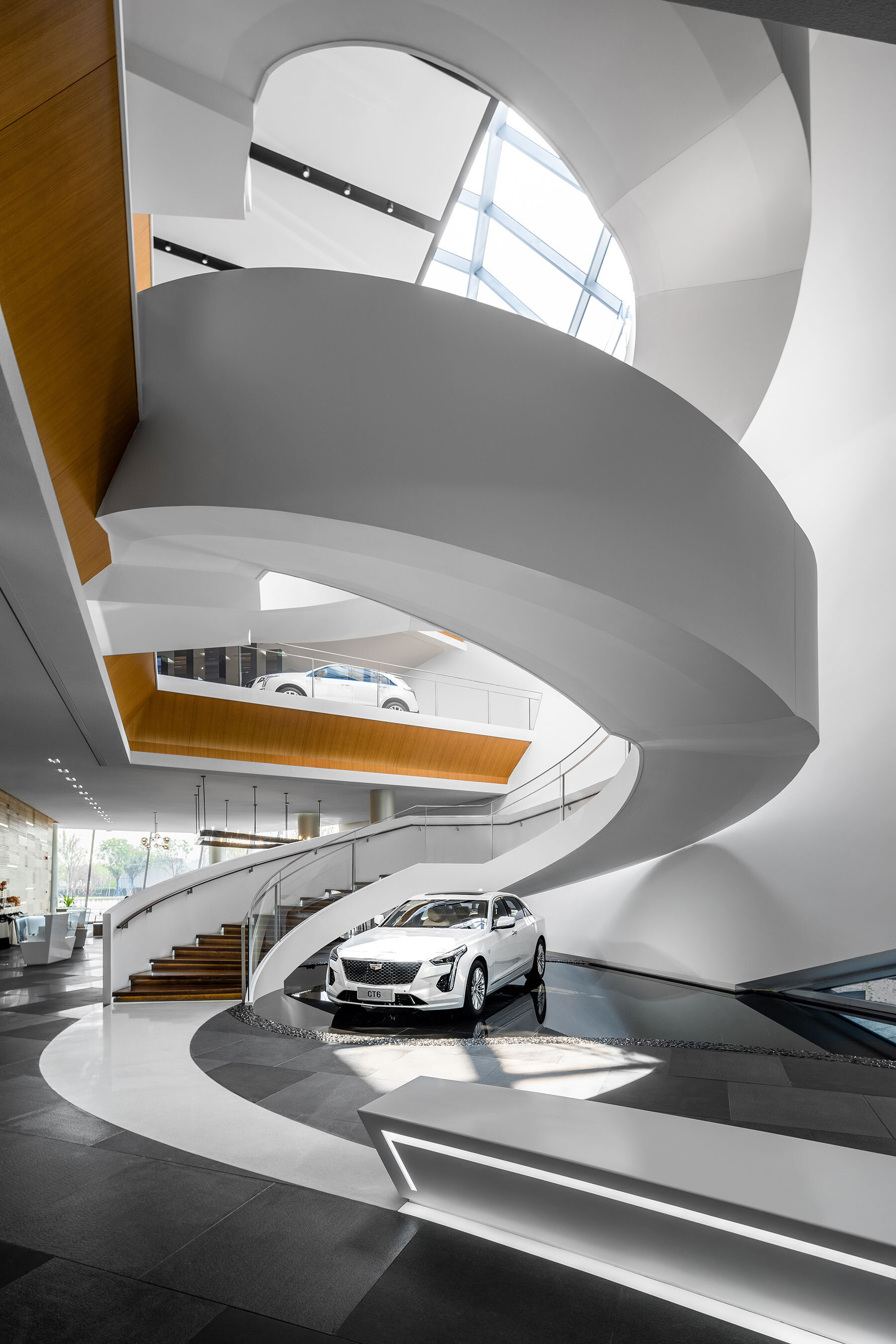
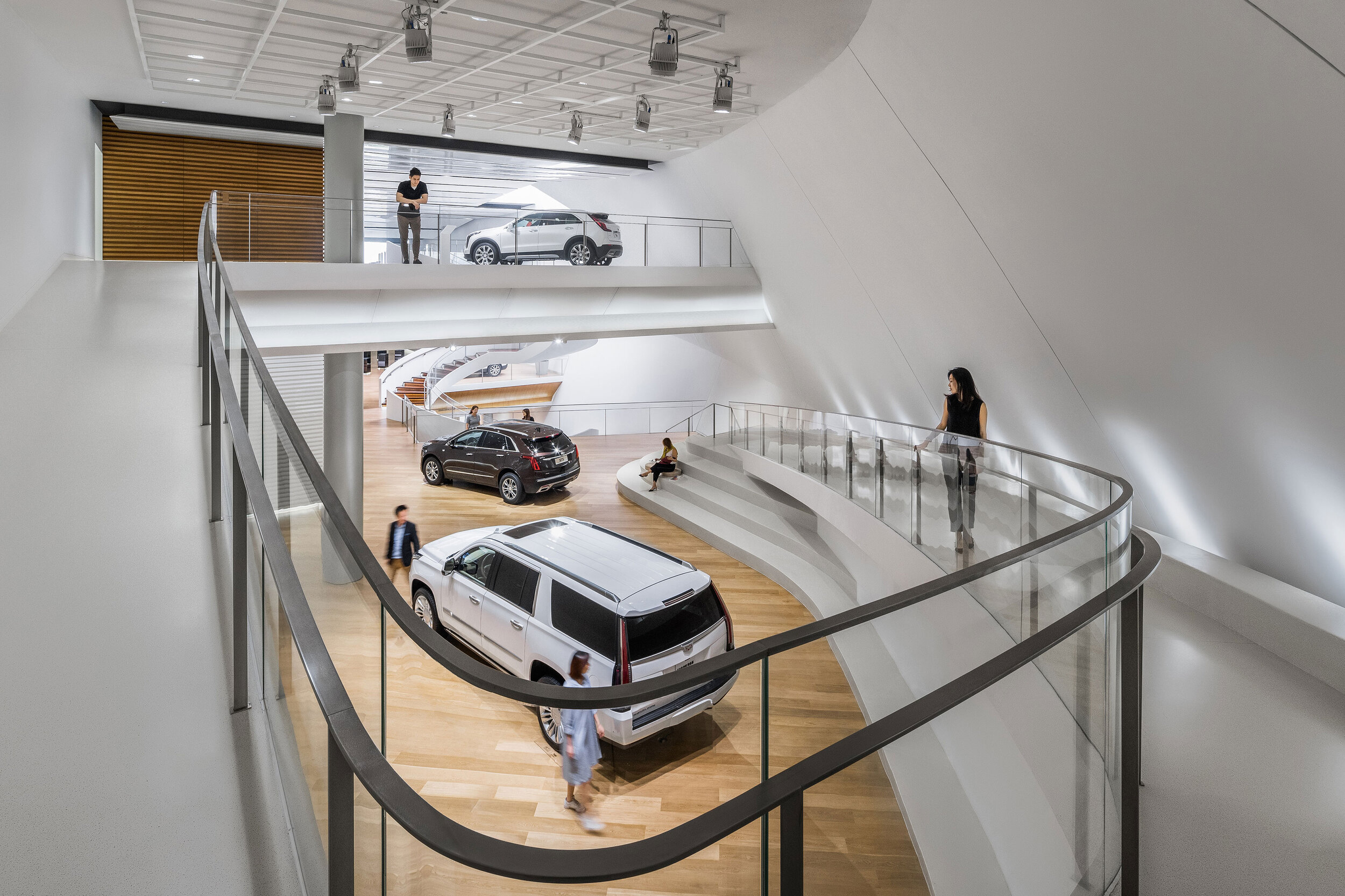

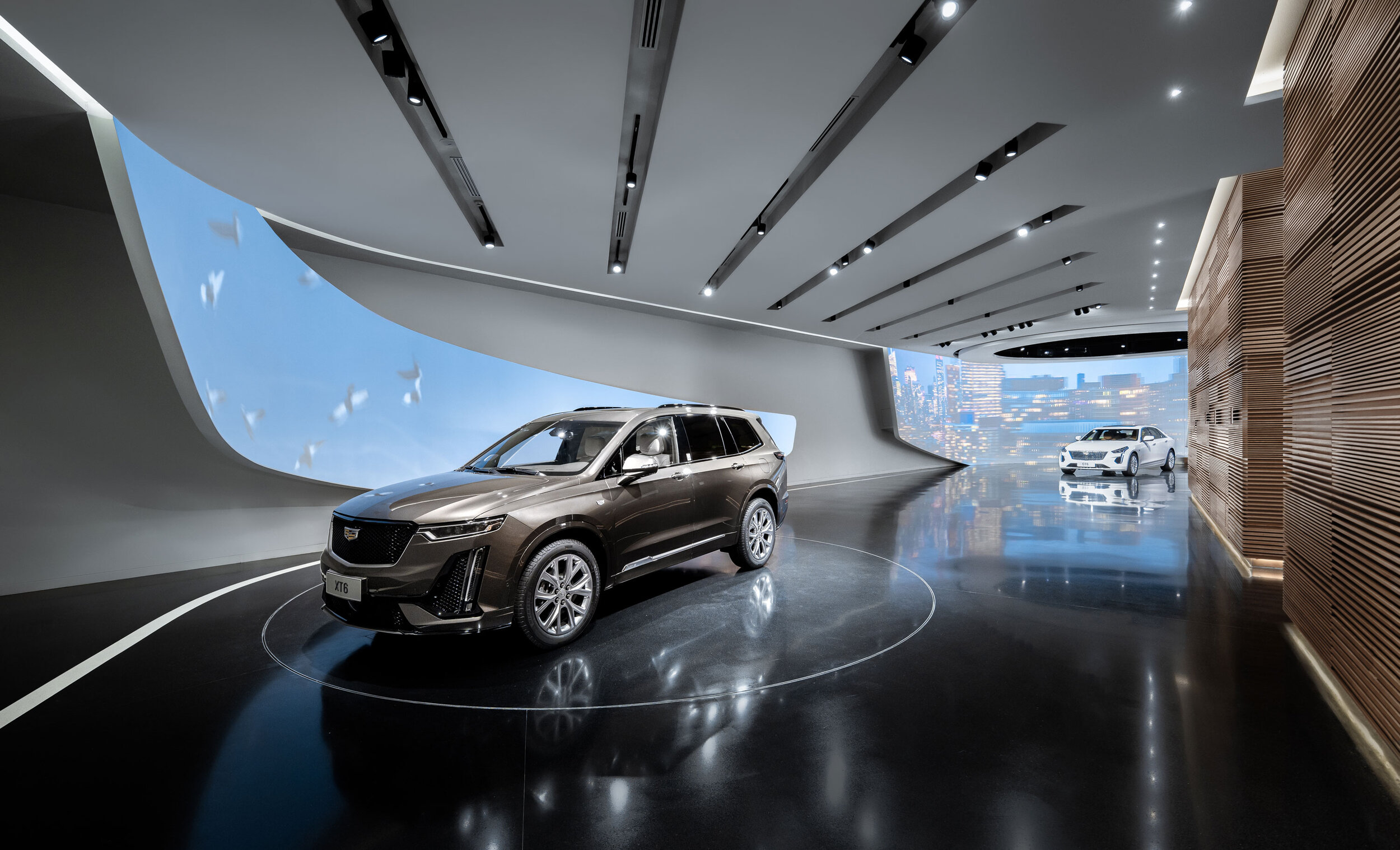
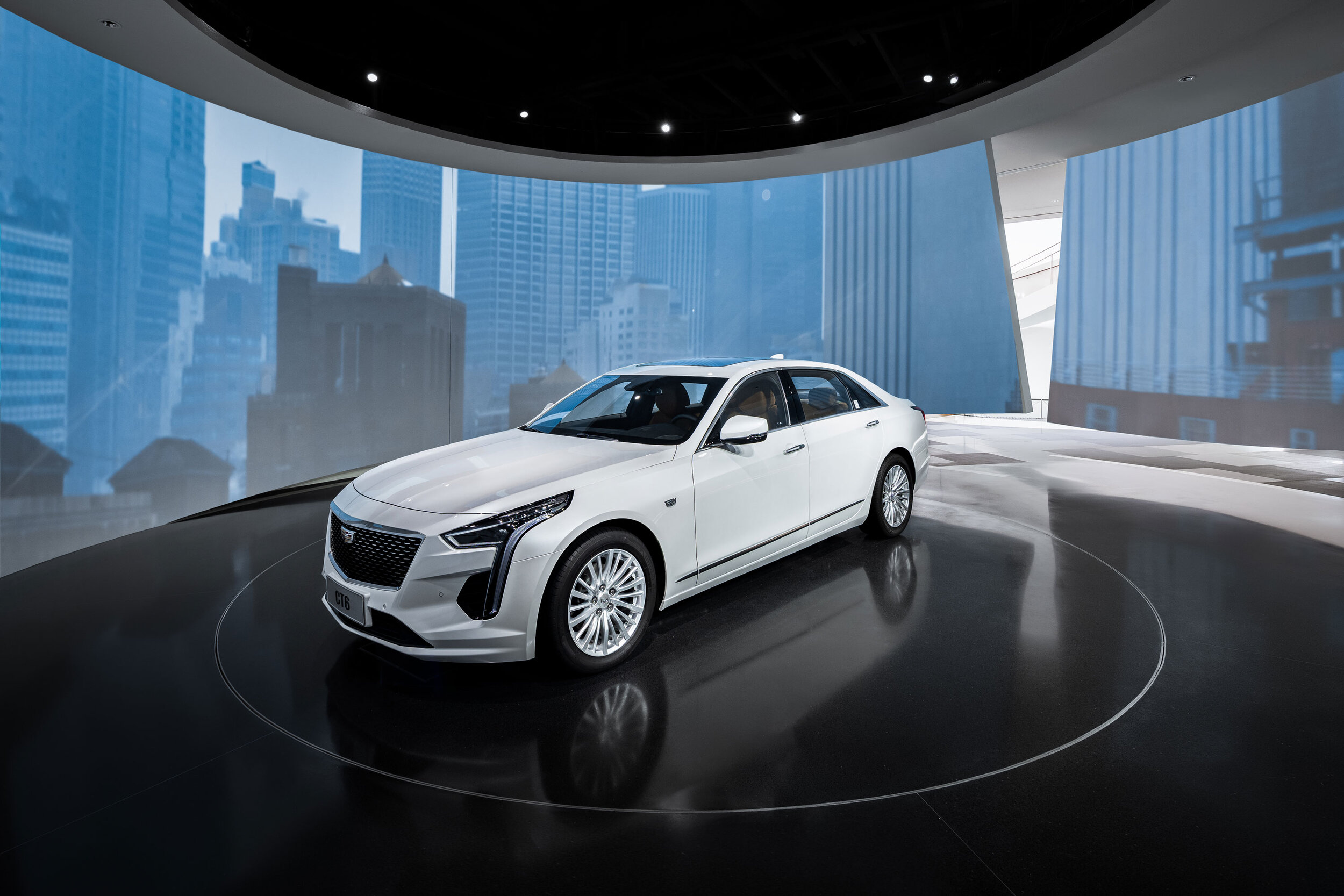
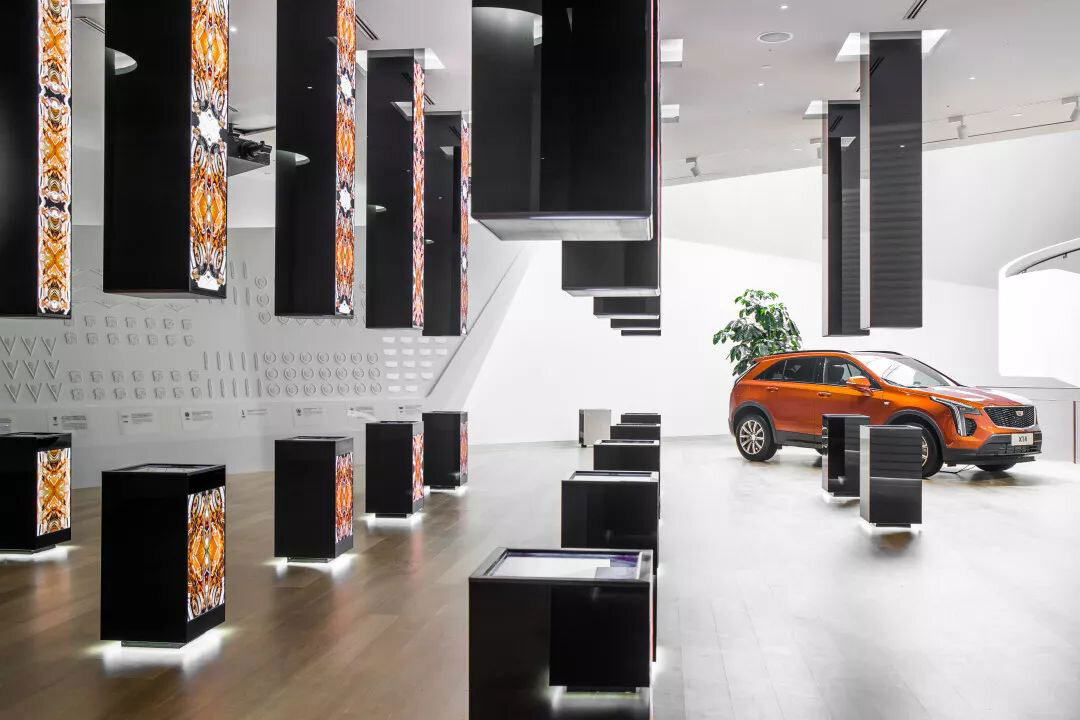
There could not be mere one single merit that natural light could engender. The House features skylights purposefully for the use of optimising light penetration into the inside.
Inside, the consistency of refinement and luxury will hardly astound you to see the discontinuity of an air of nobleness. Moving through a wondrous entrance, you will be greeted with an open-plan foyer emerging before you.
Awaiting are the Cadillacs. They are waiting for customers who take an avid interest in carrying a sign of luxury home. Gensler realises the idea of establishing a platform for Cadillacs to showcase their specialties, and, underneath a massive spiral staircase or in the centre of a lobby will you set your eyes on a different individual.
Standing still for a moment with eyes riveted on the Cadillacs, you will smell of classic aroma of dark roast coffee, which is tantalizing in the space, and that aroma is a high-profile fixture in a luxurious locality. A timber-and-concrete spiral staircase leads from the open-plan foyer to the second level and the third, dispensing with columns offering the verticality to offset the smoothness of the ribbon-like spiral.Three floors in total, Cadillac House rings the change with a linear arrangement of ‘past-present-future’, having a theme fixed on every floor but in a way that the ‘future’ is in the middle and the ‘past’ in the top floor.
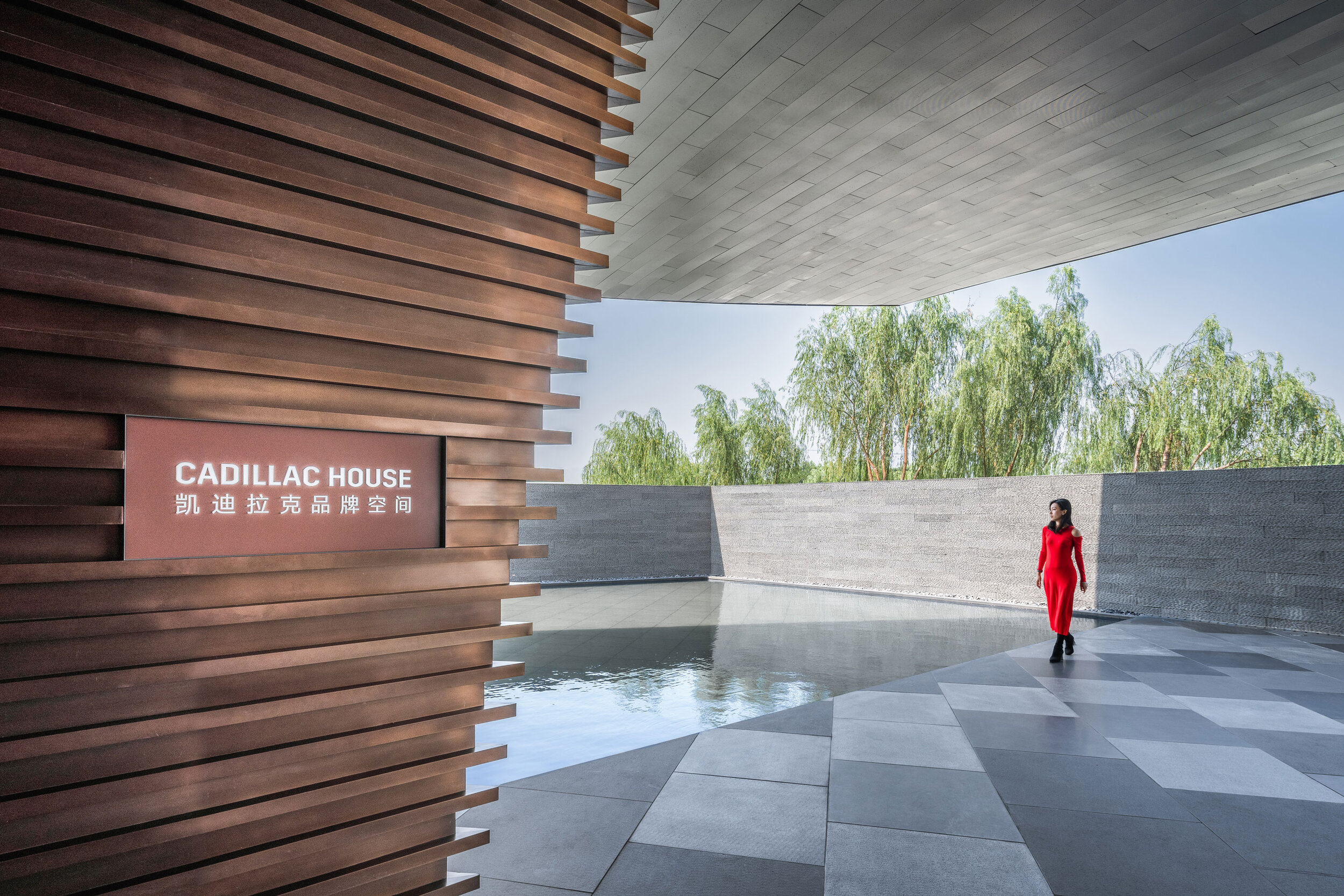
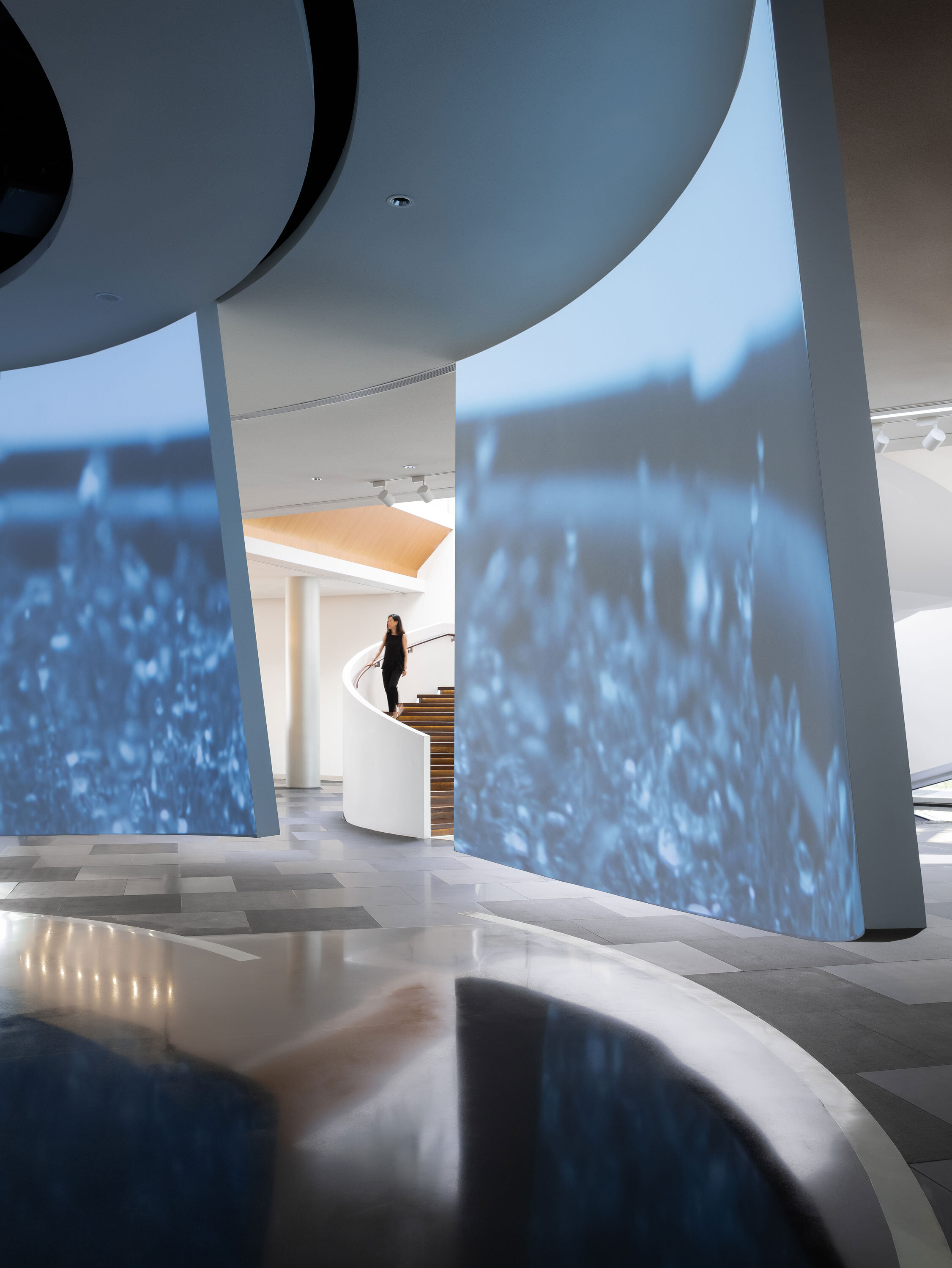
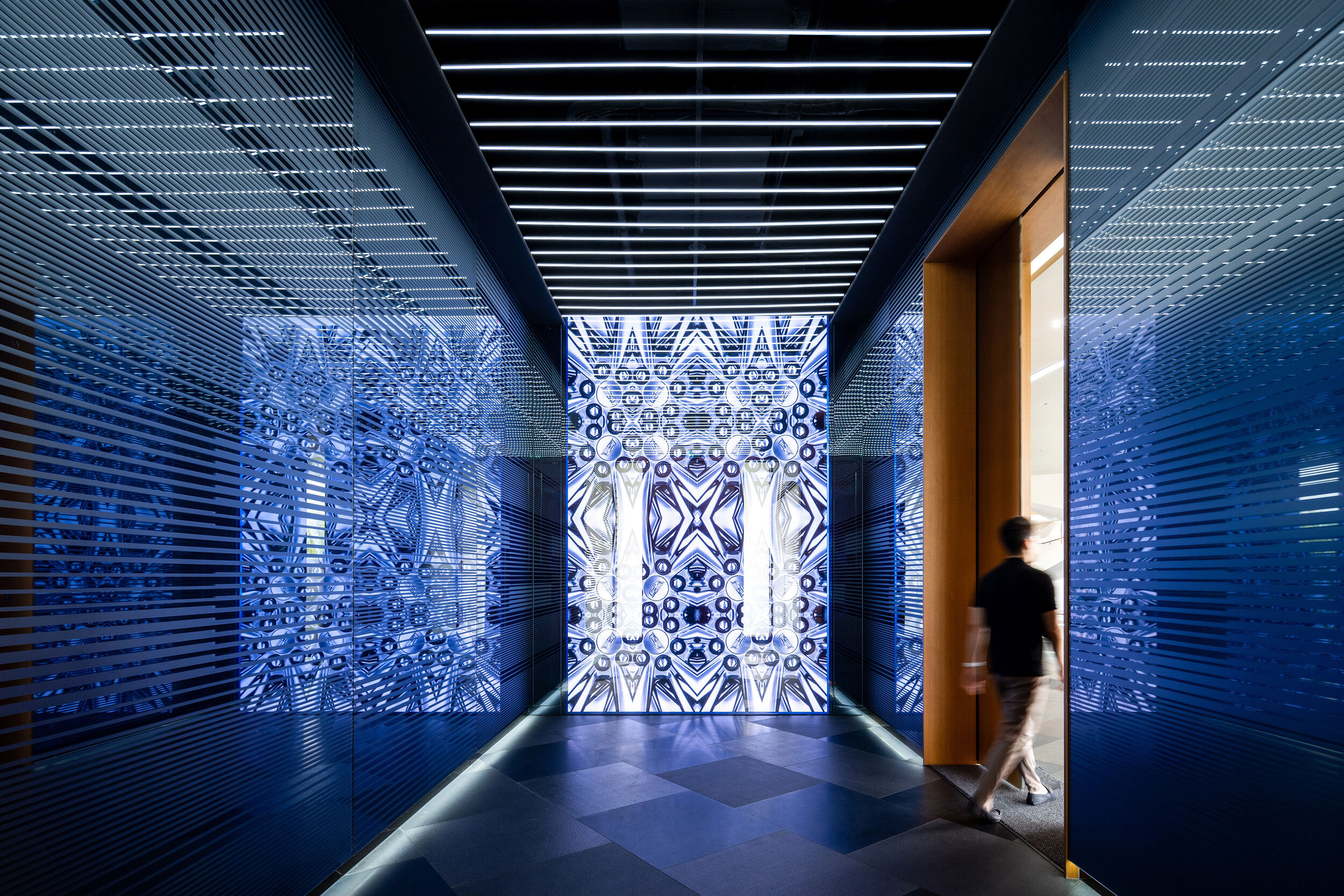
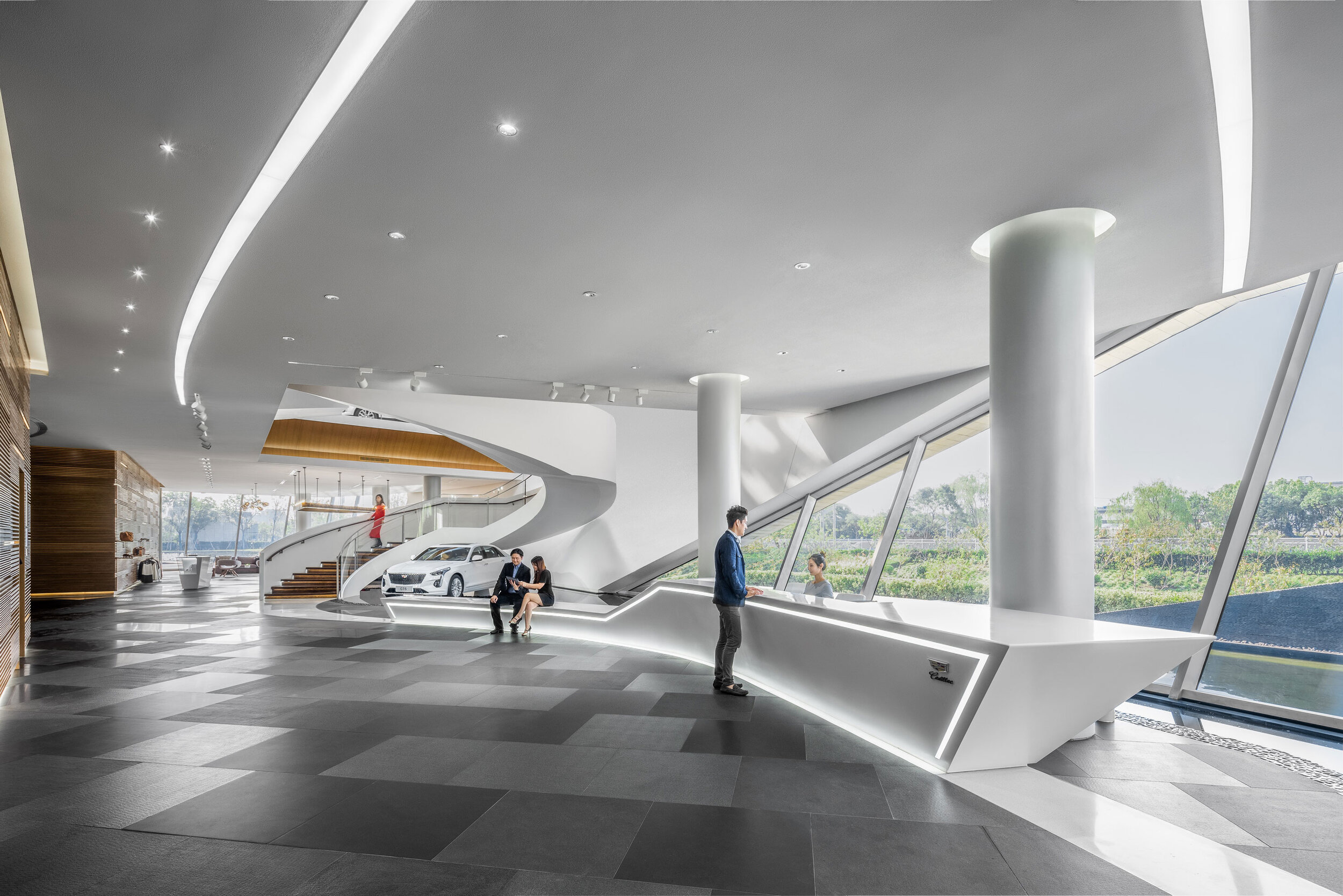

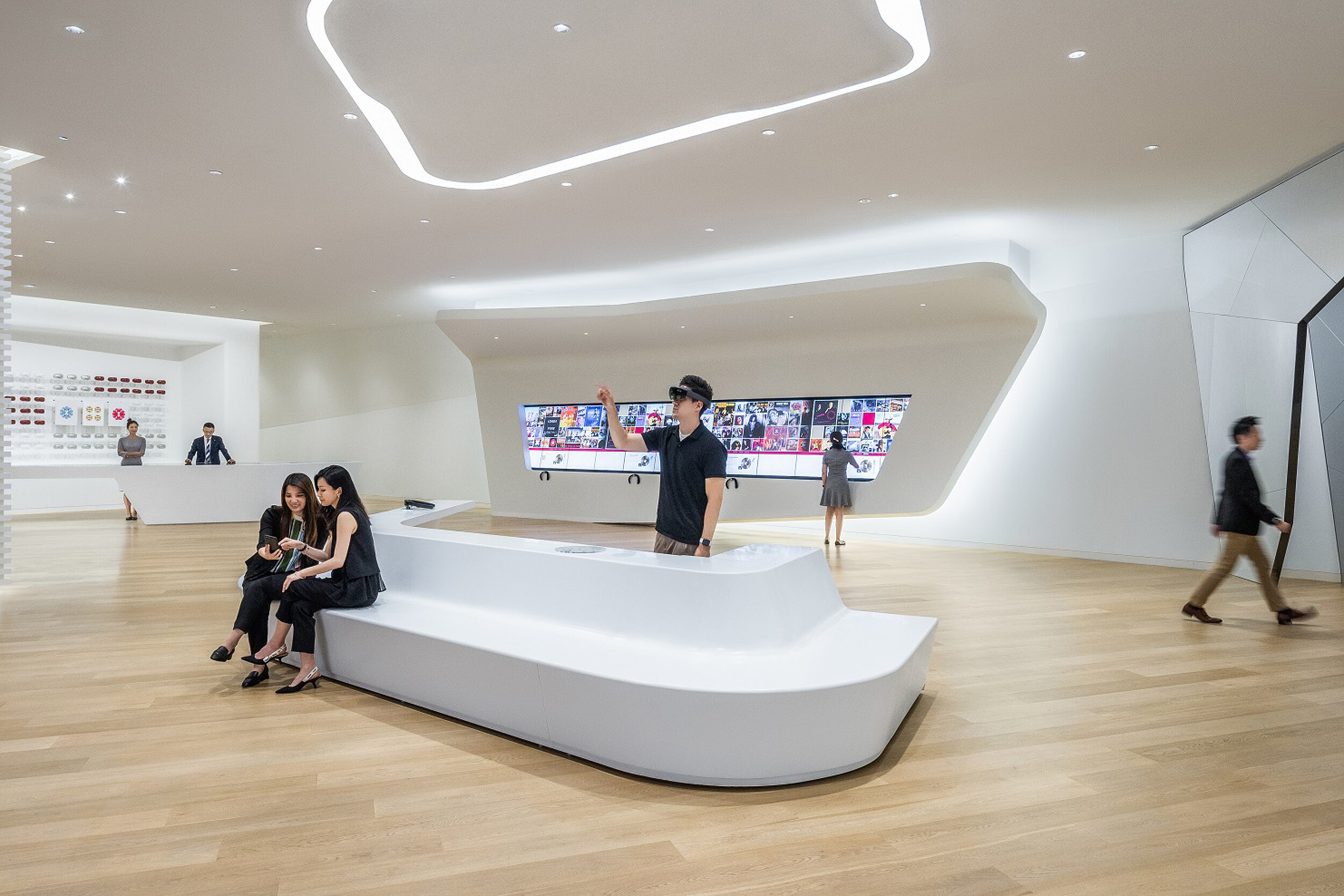


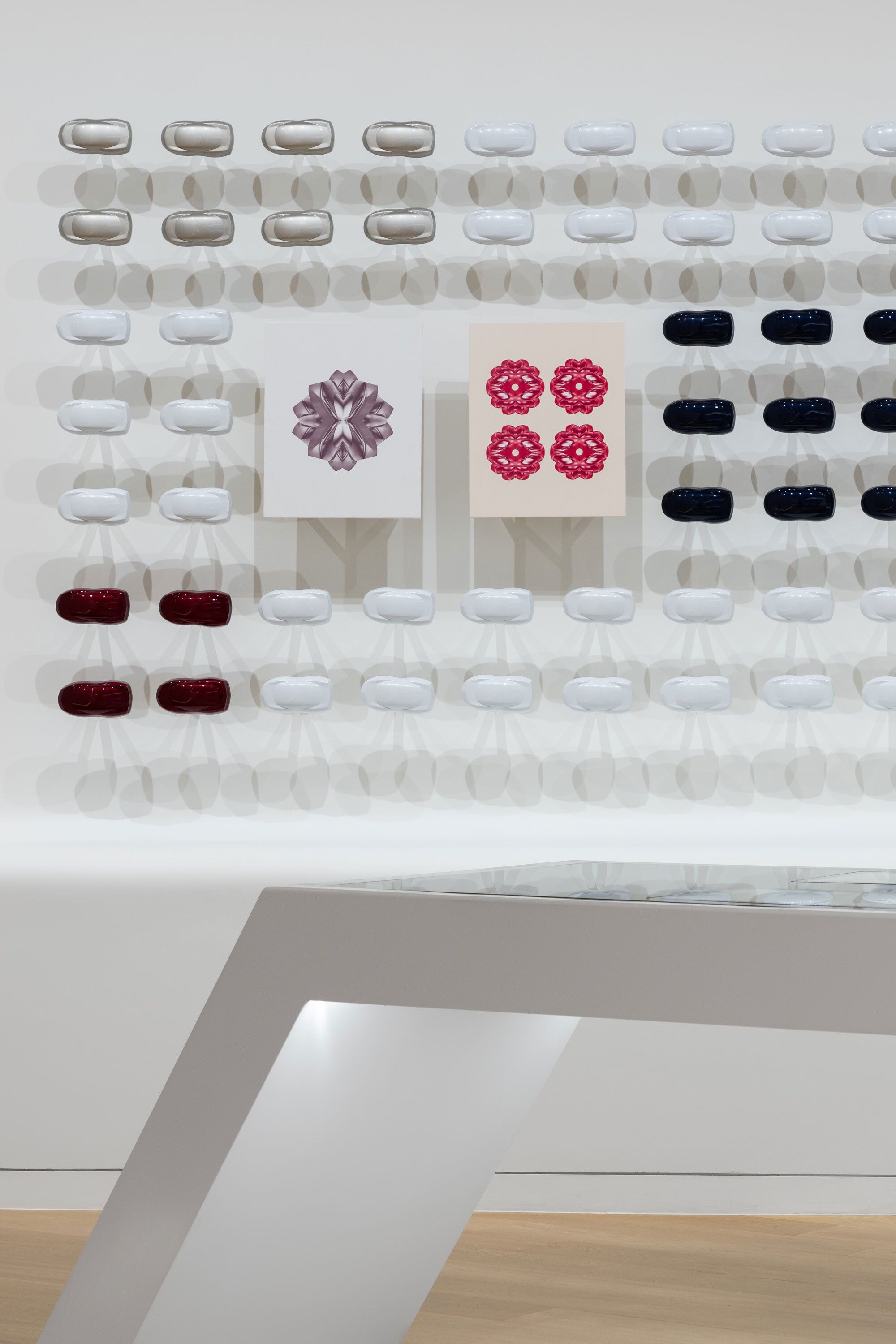

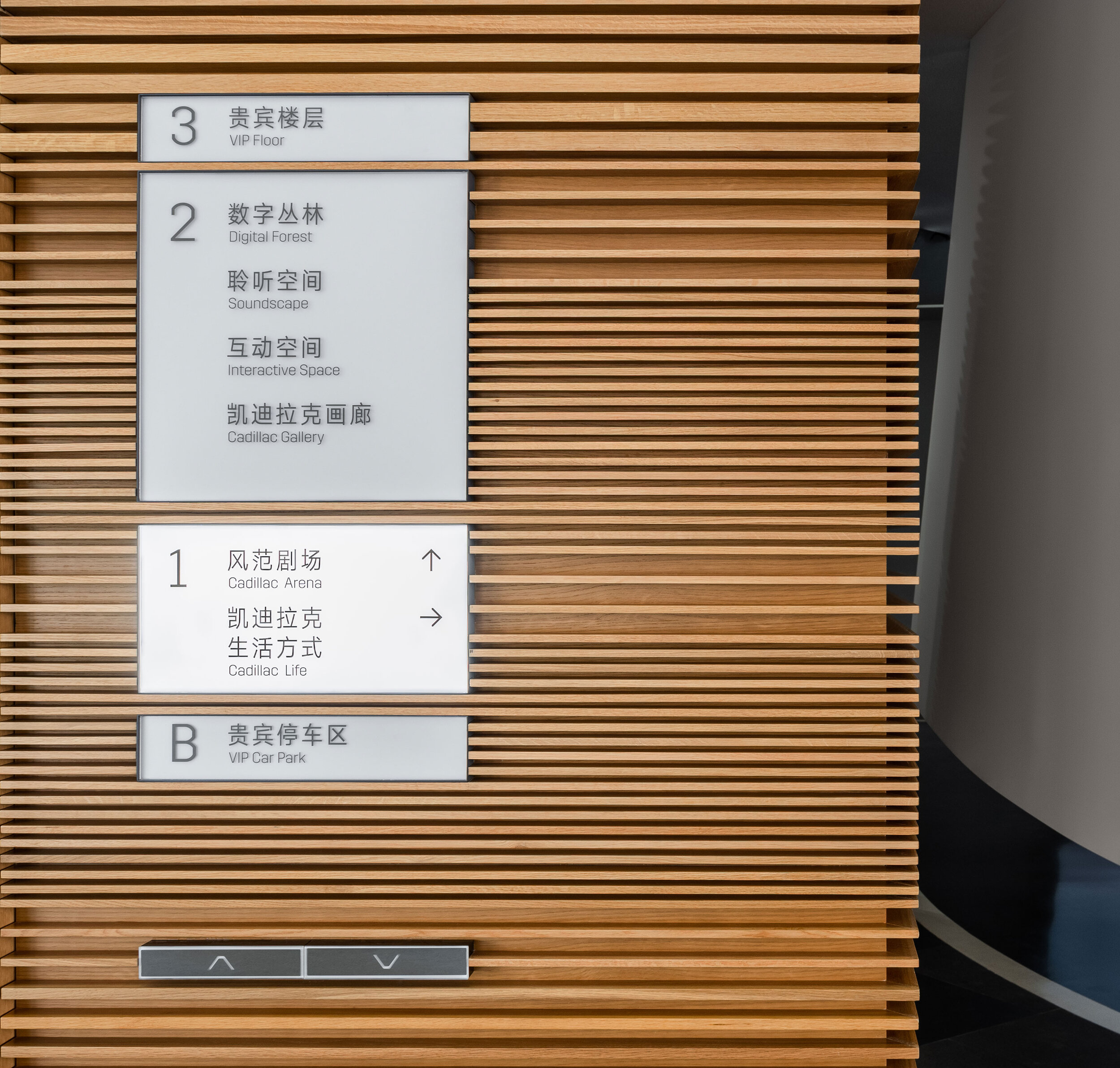
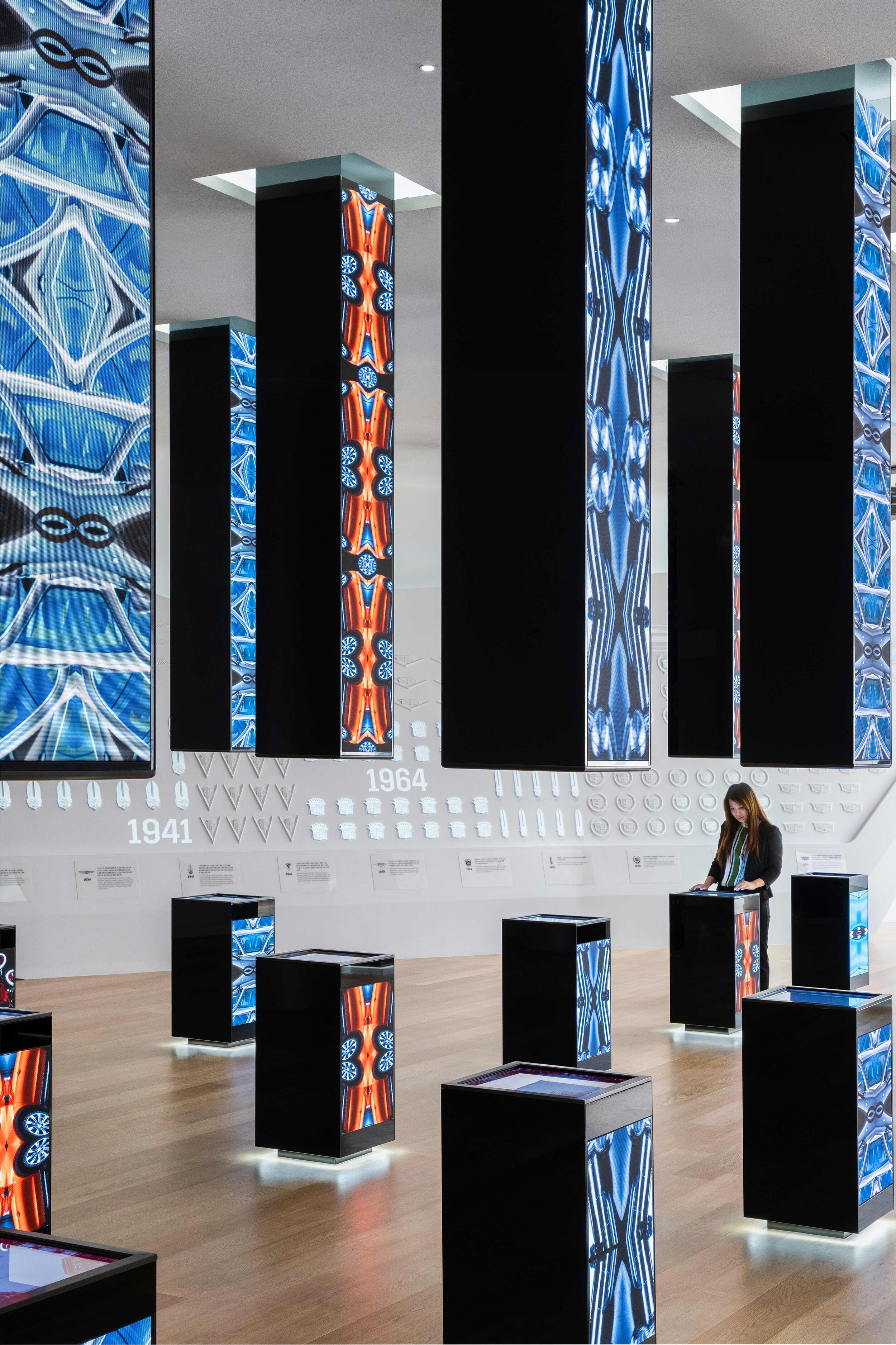
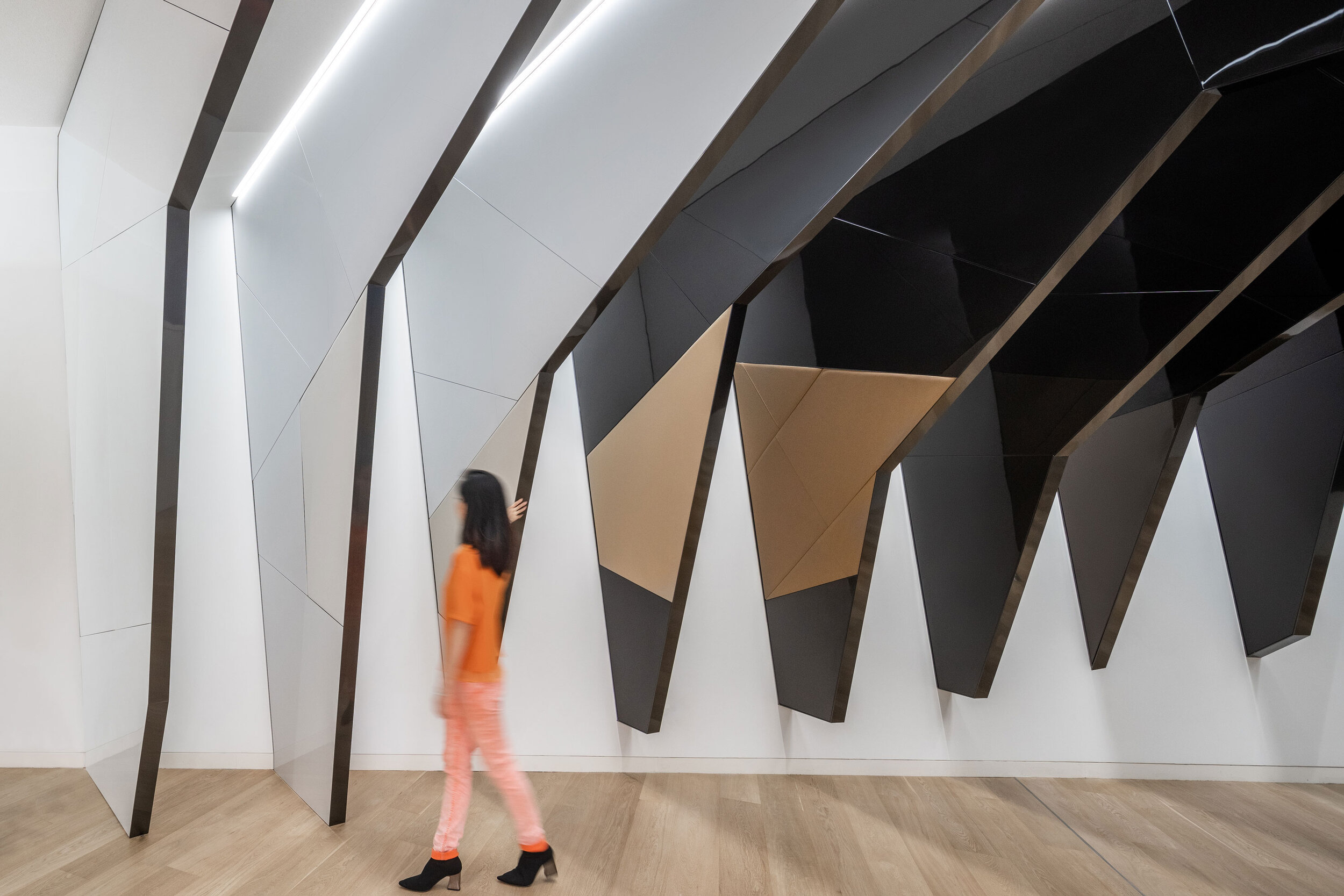
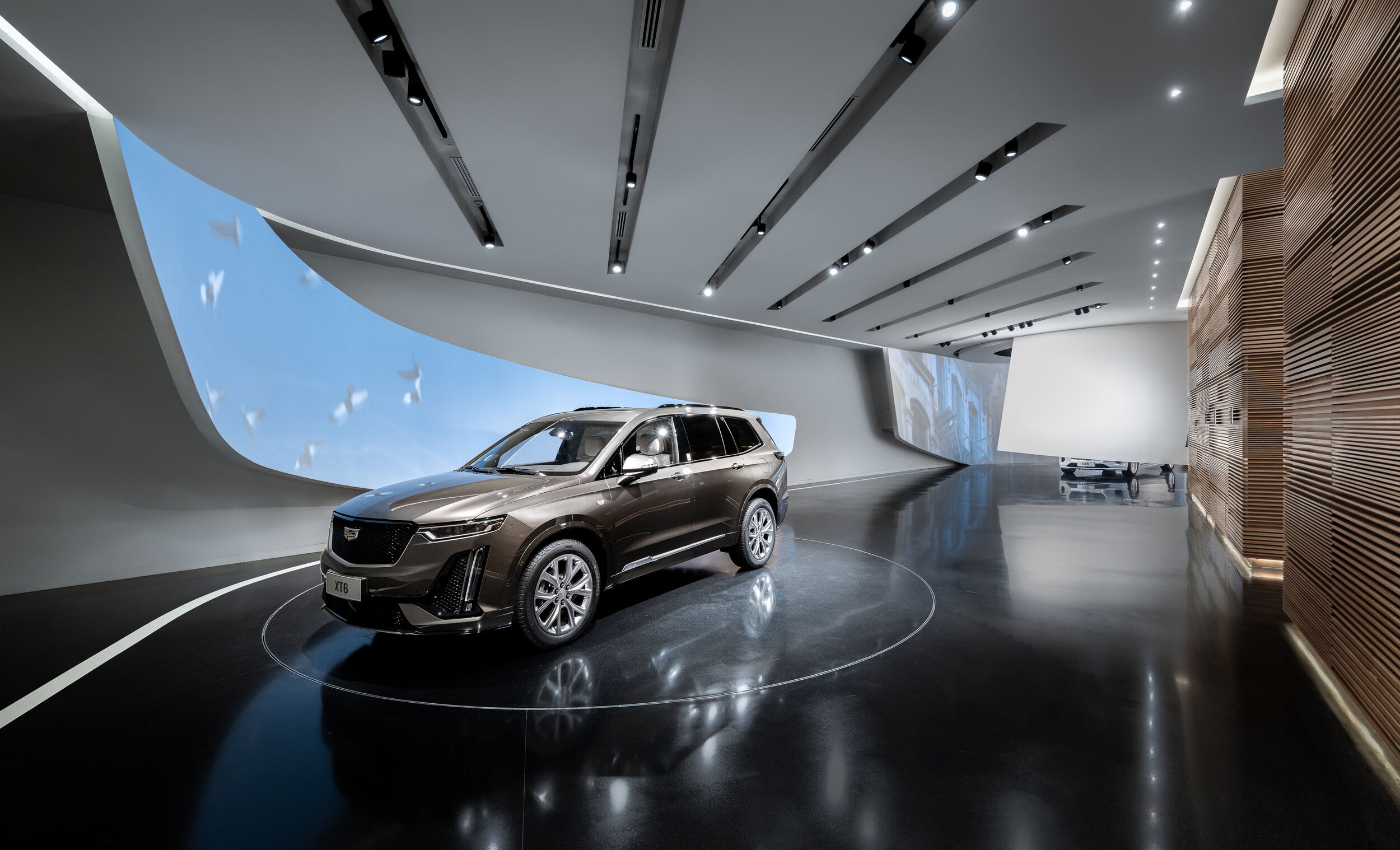
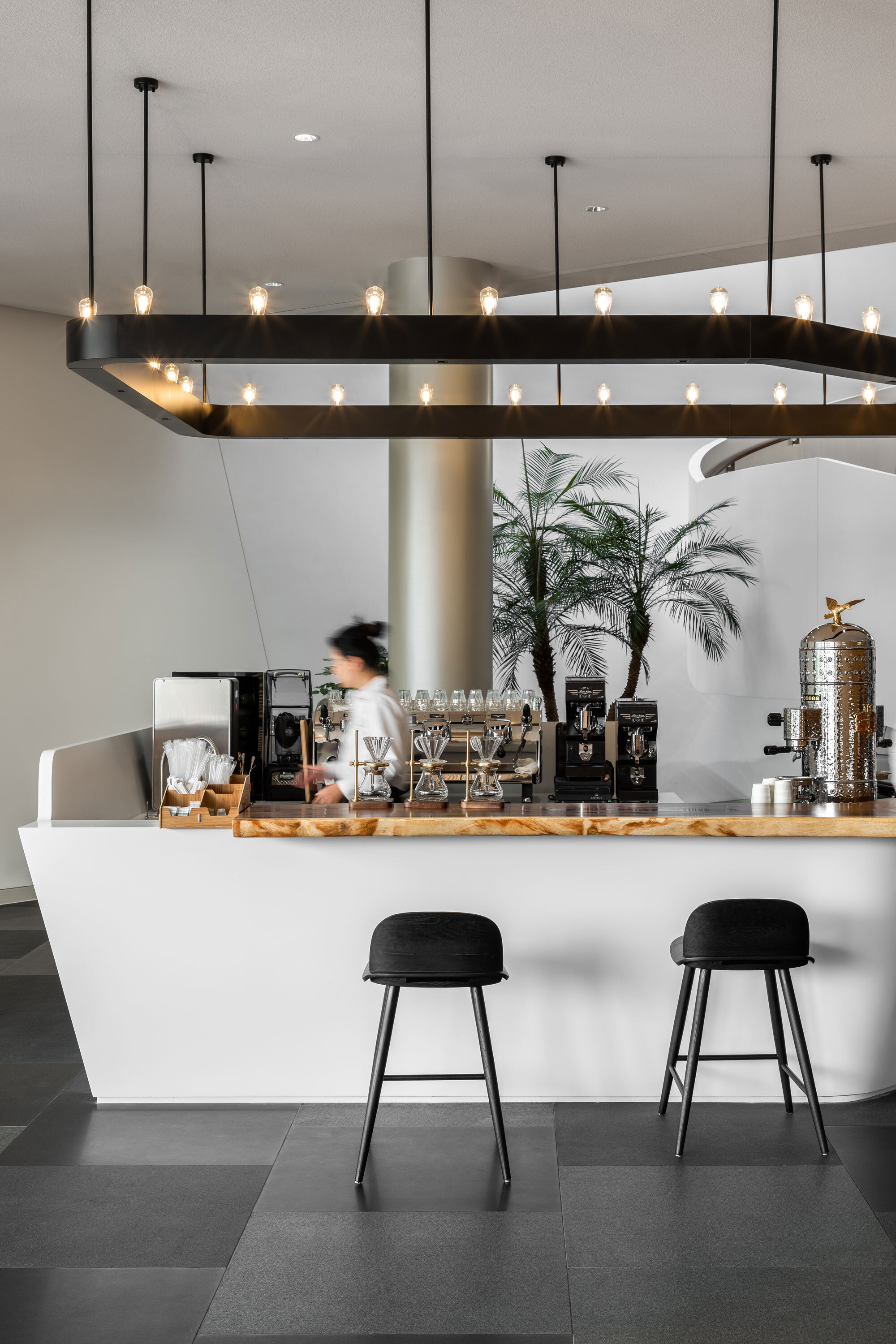
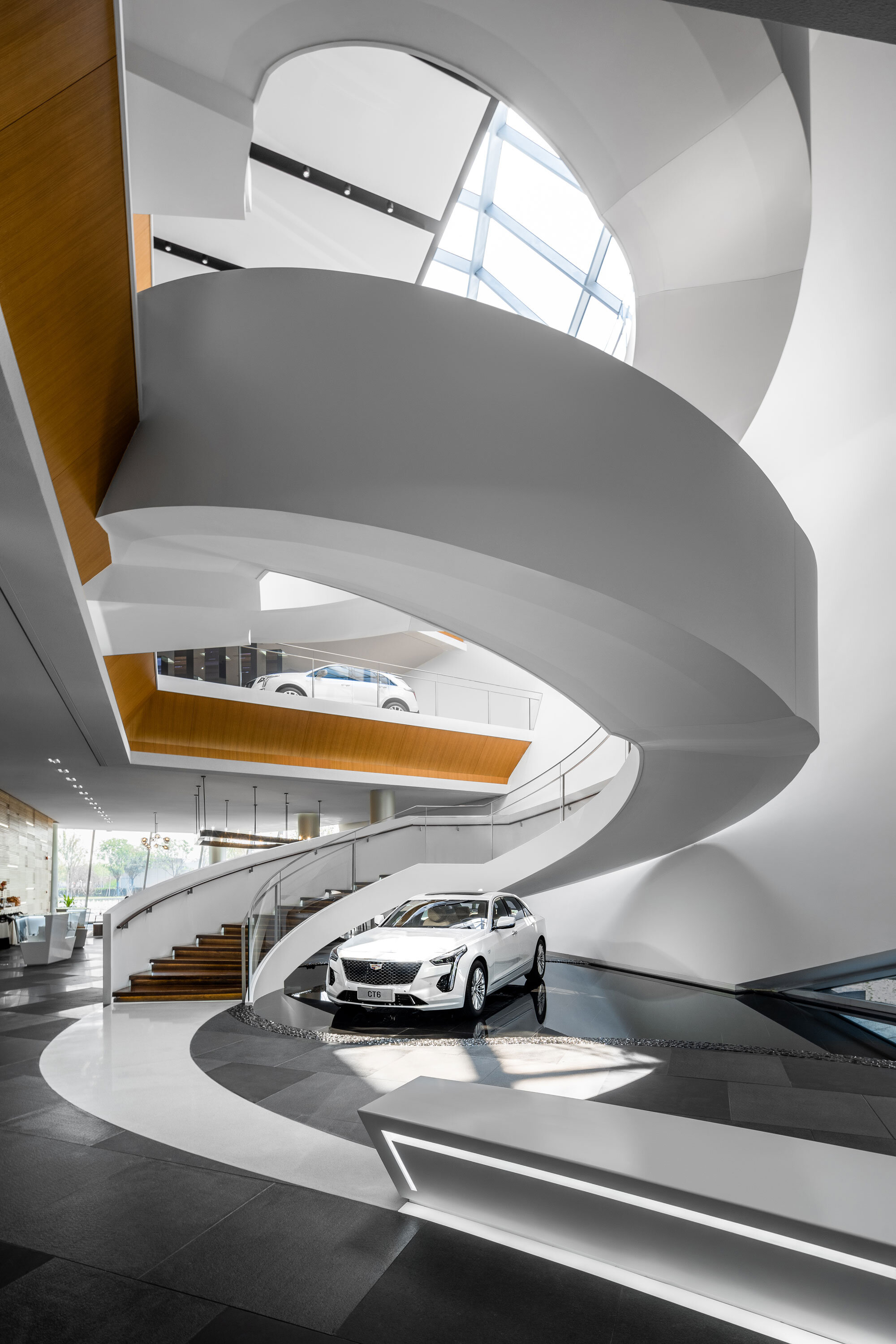
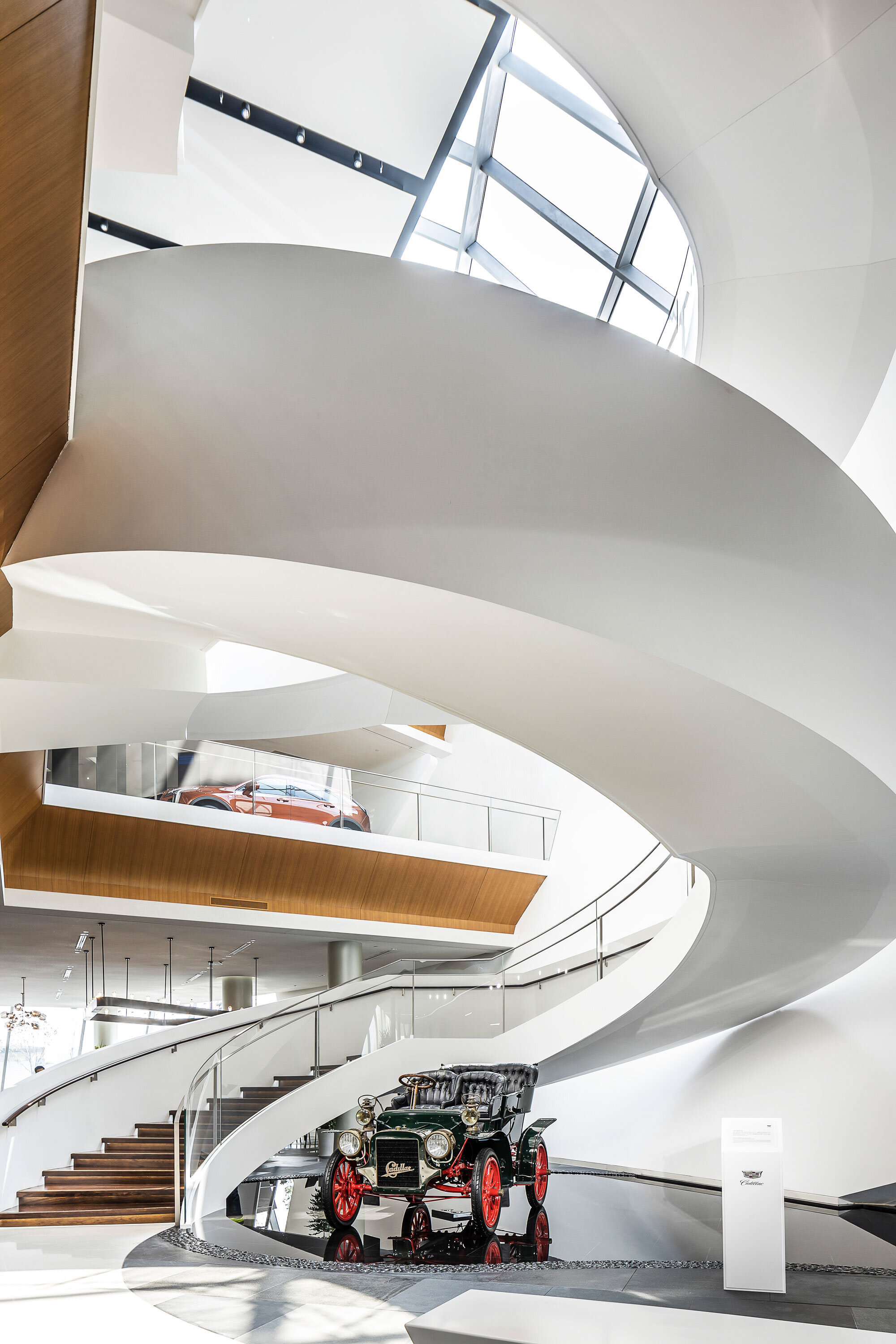
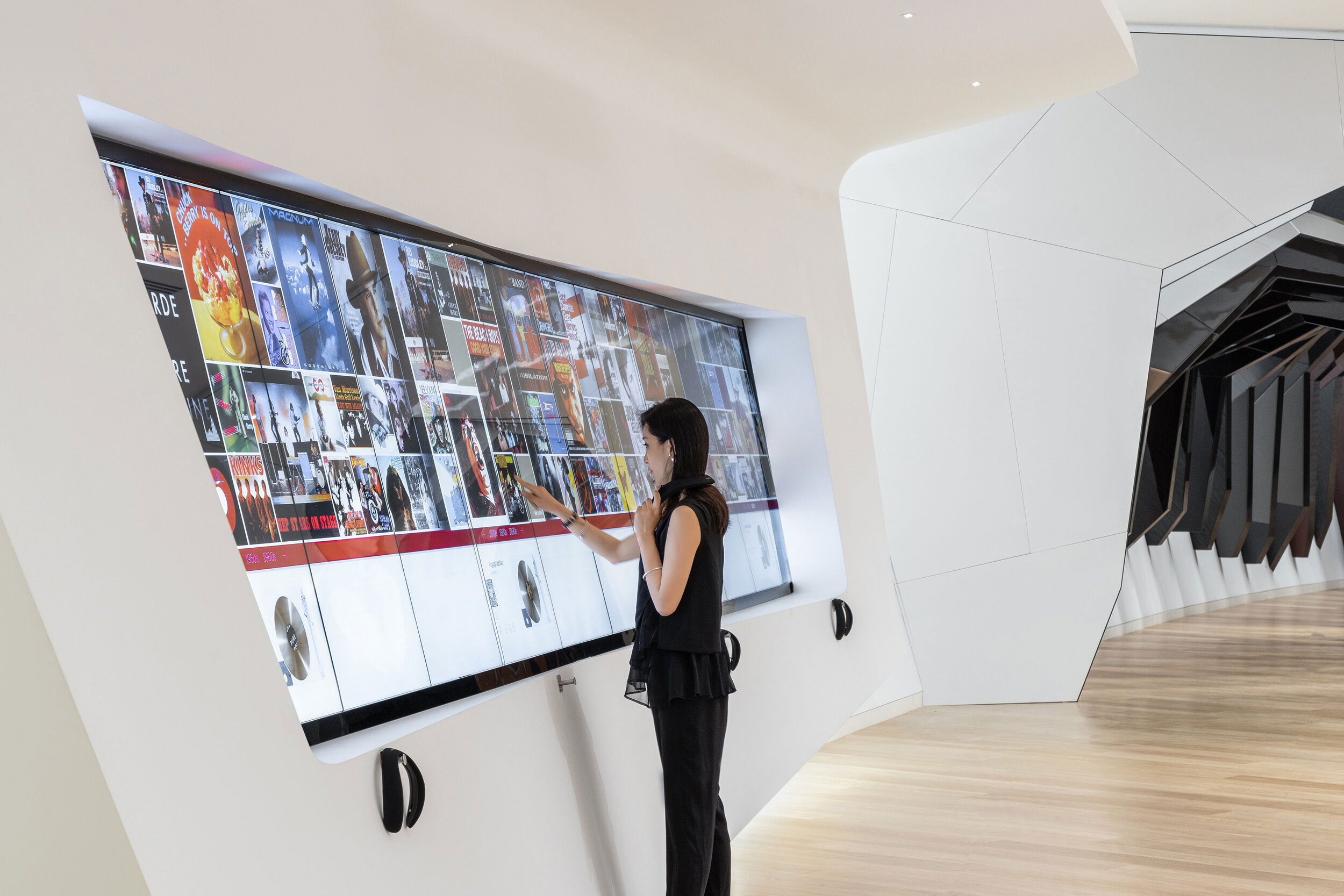
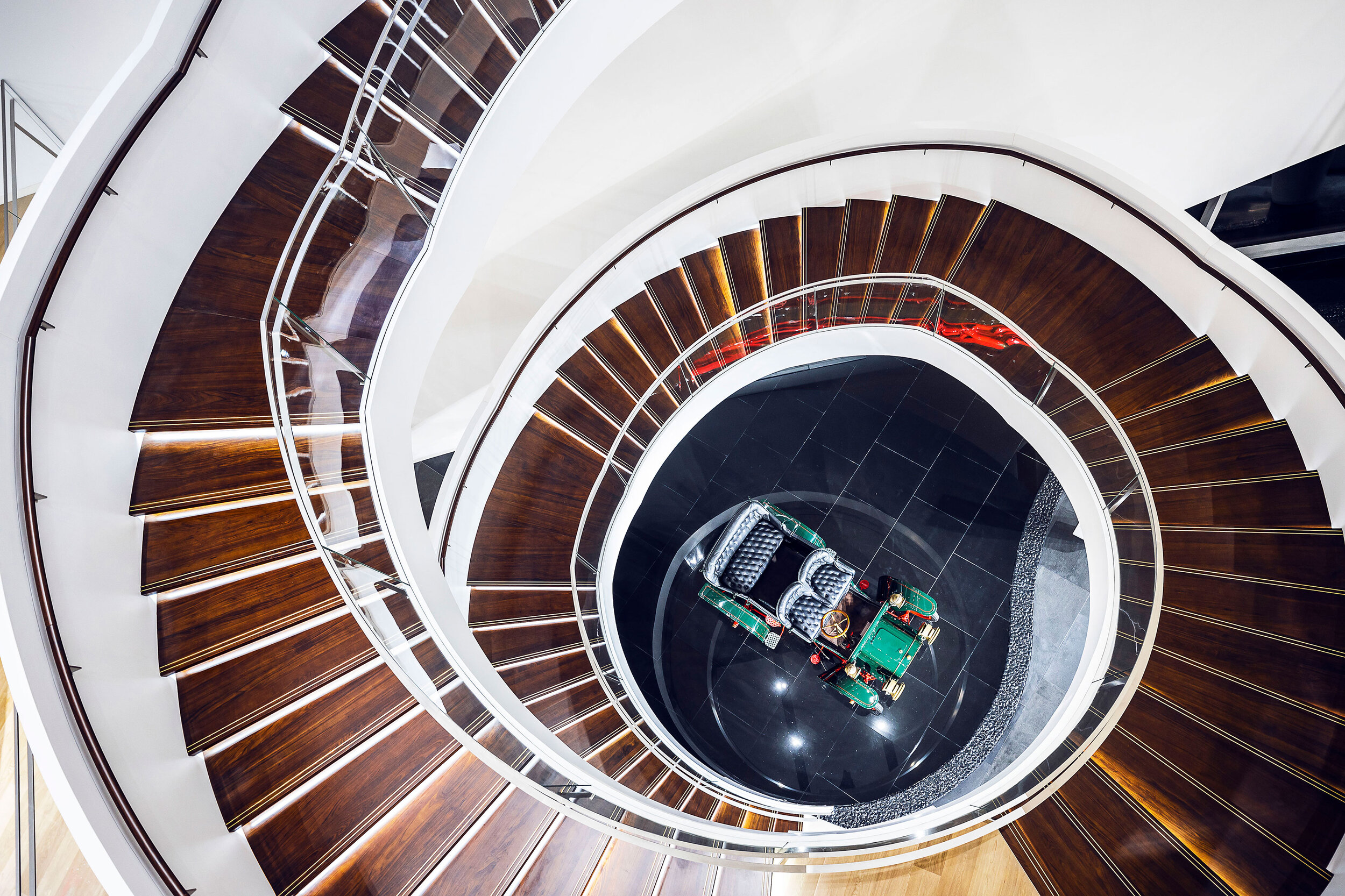
Level 2 focuses on the theoretical possibility of multi-sensory interactive technologies. Adopting multiple ways to open up a novel opportunity for customers to a body-syntonic end, is actually, grounded on the basis of VR and 3D printing.
Technologies are an invariably trend-propelled force. There is a patch of the area which is characterized by a cluster of slender cuboids with digital screens embedded, which is named ‘Digital Forest’. The name could be conceived as a variation of ‘Concrete Jungle’ because these columns have a bearing on their architectural counterparts.
A hallway is imbued with a notion of the time tunnel, through which you are capable of having a panoramic view of the growth of Cadillac.
Cadillac sets the bar high and it is estimated that over 3000 songs have included its namesakes on purpose to indicate that Cadillac is synonymous with automobile sleekness and a sign of wealth. Richard Chang, Greater China Retail Practice Area Leader at Gensler said, ‘‘We are proud to be working with Cadillac on designing such an important project. And the AIA award is great recognition for all the hard work to bring the project into completion.’
Project credits:
Project Name: Cadillac House
Location: No. 2199, Jufeng Road, Jin Qiao, Pu Dong, Shanghai, China
Architectural and Interior design: Gensler (Gensler’s Shanghai Office)
Date of Open: 27/3/ 2019
Site area: 6493㎡
Photographer: Blackstation & CreatAR



